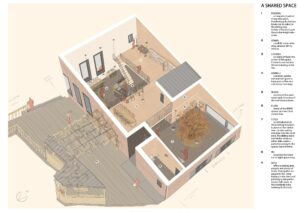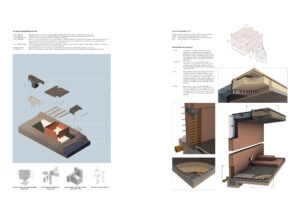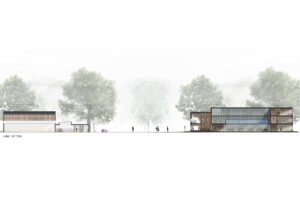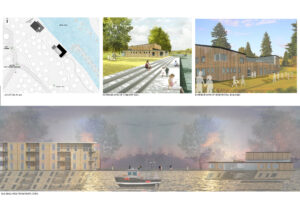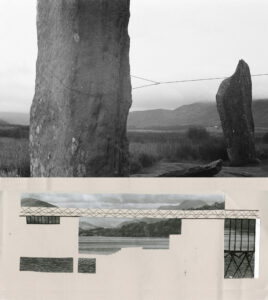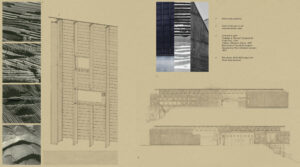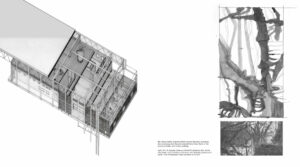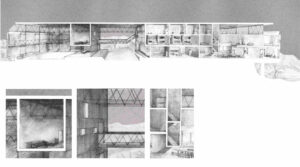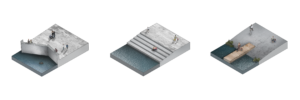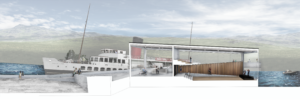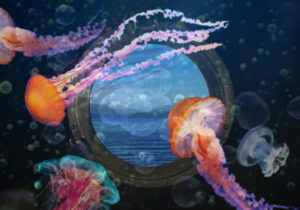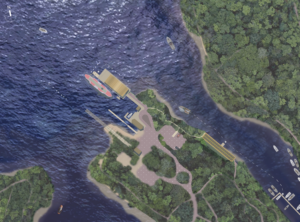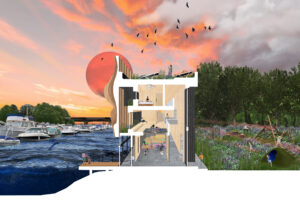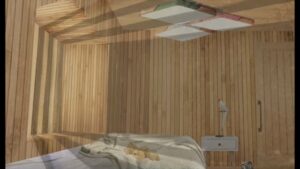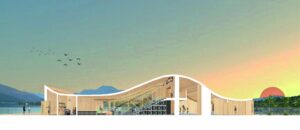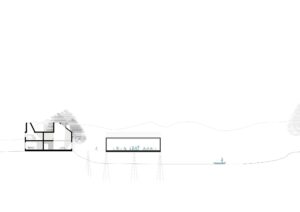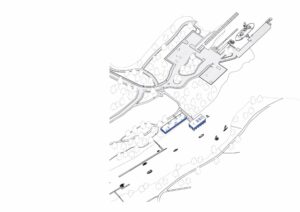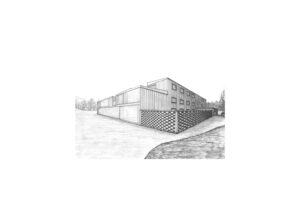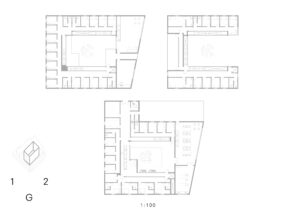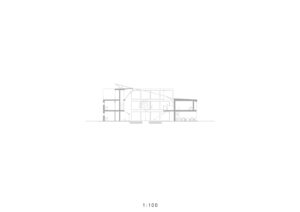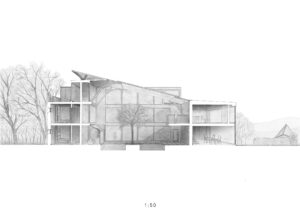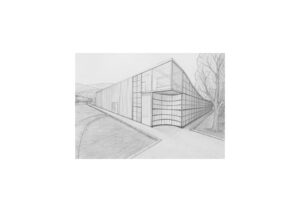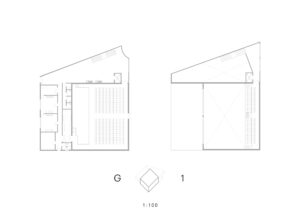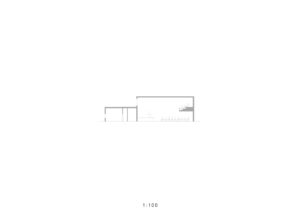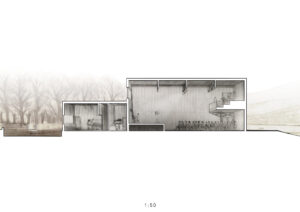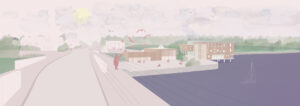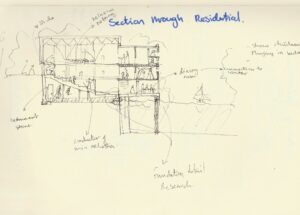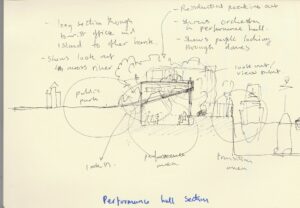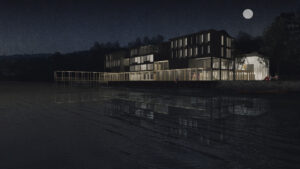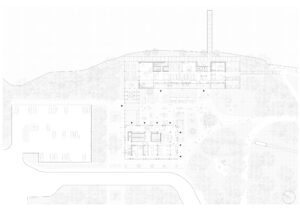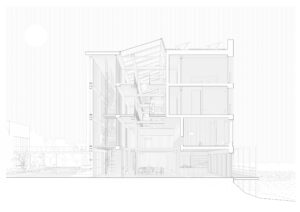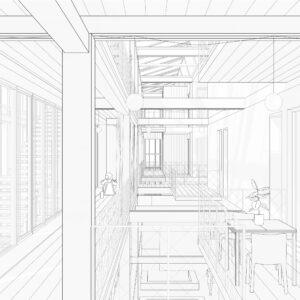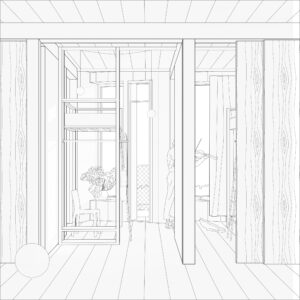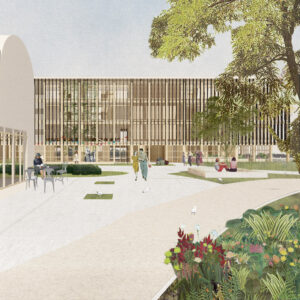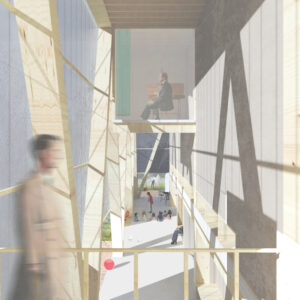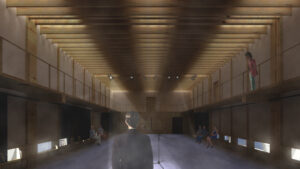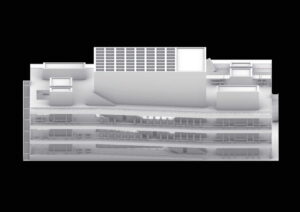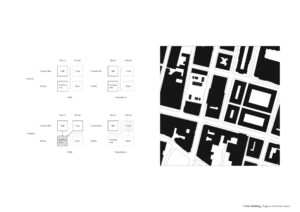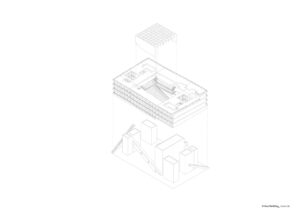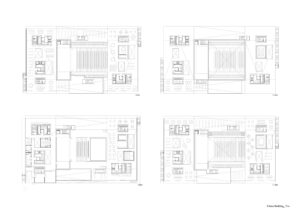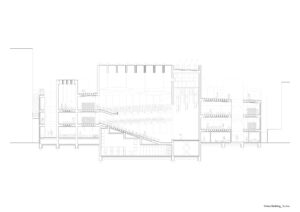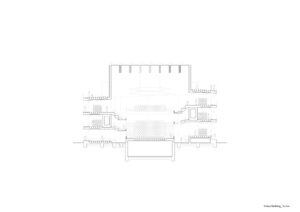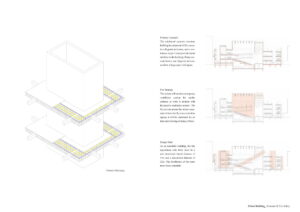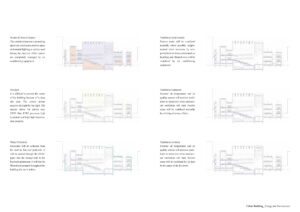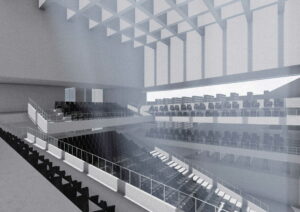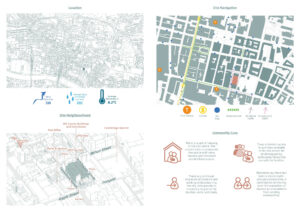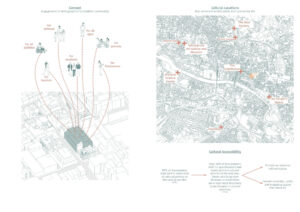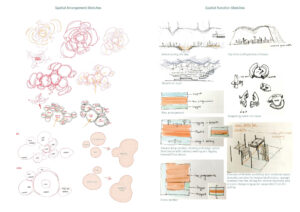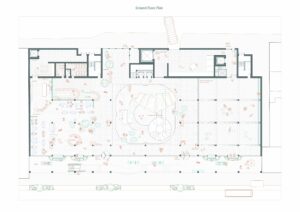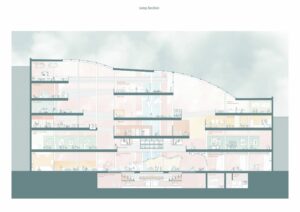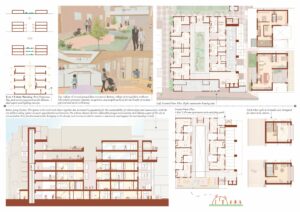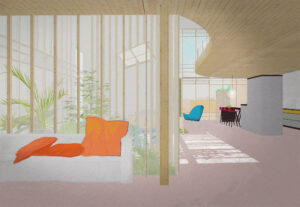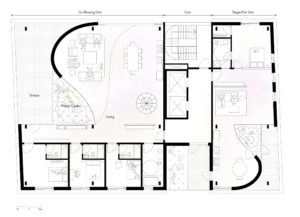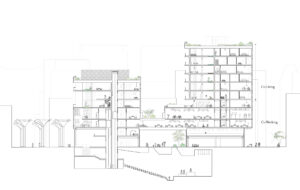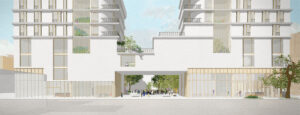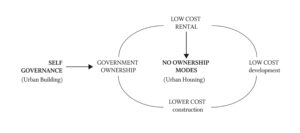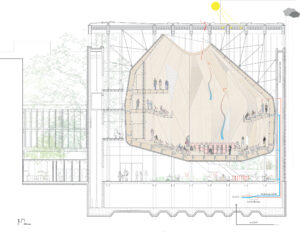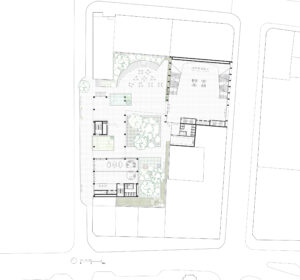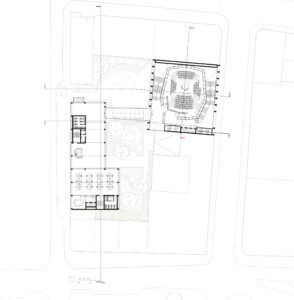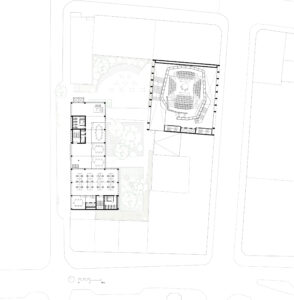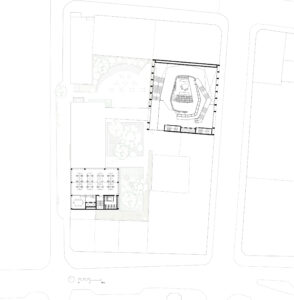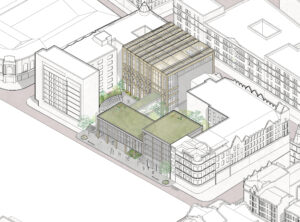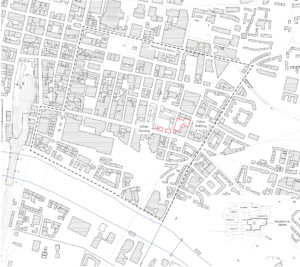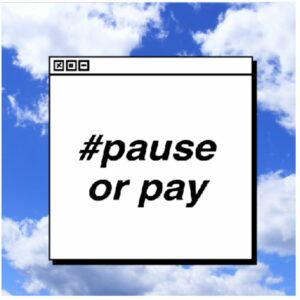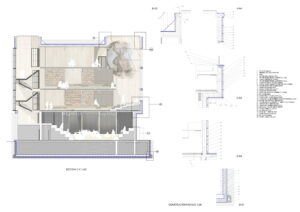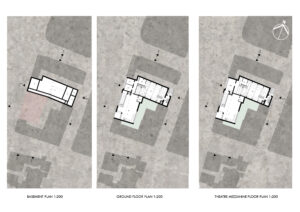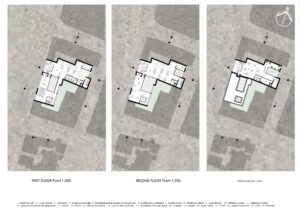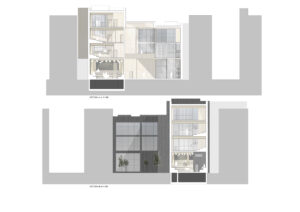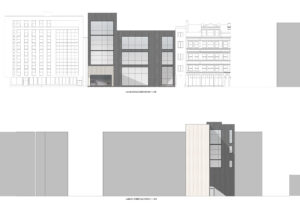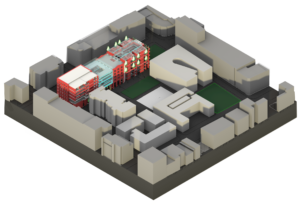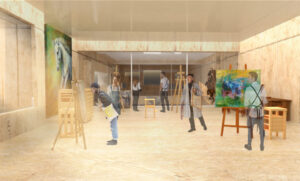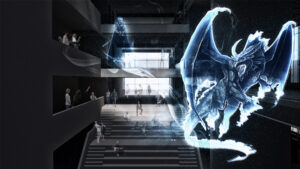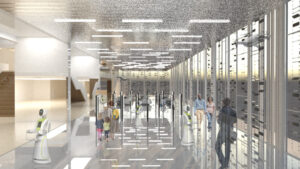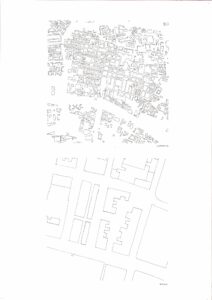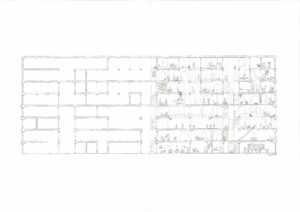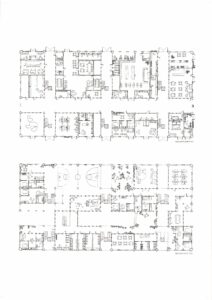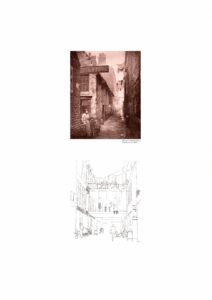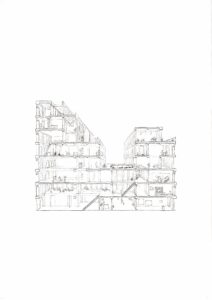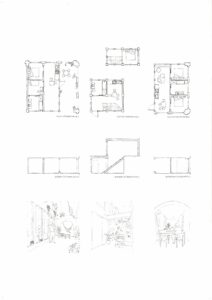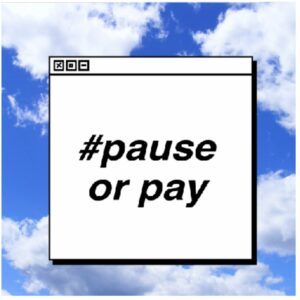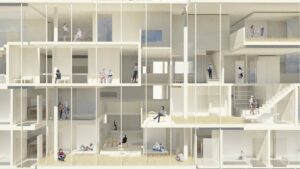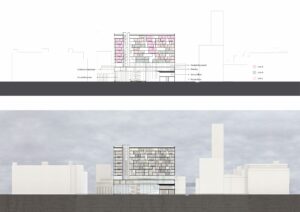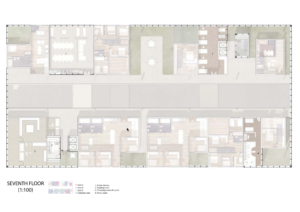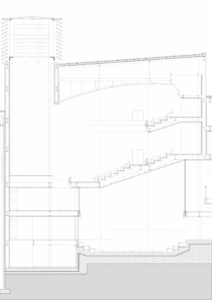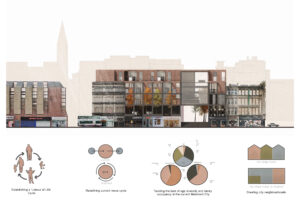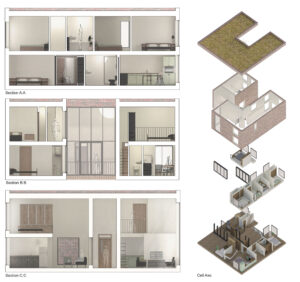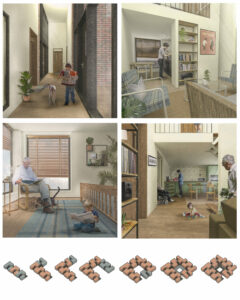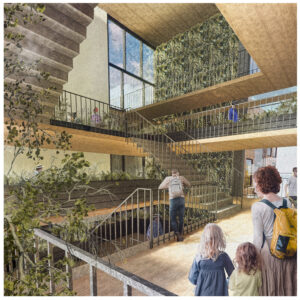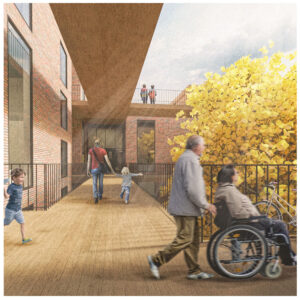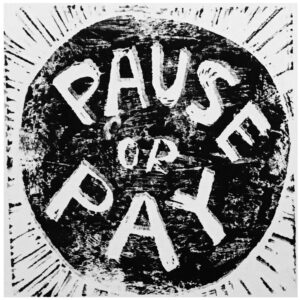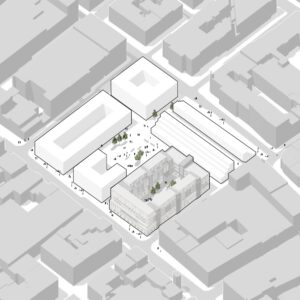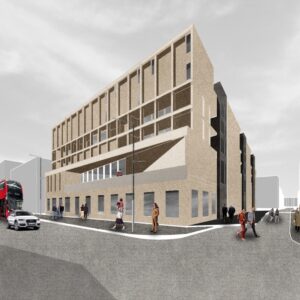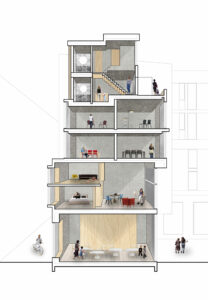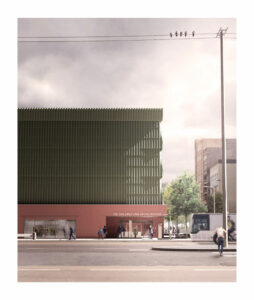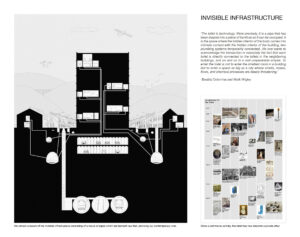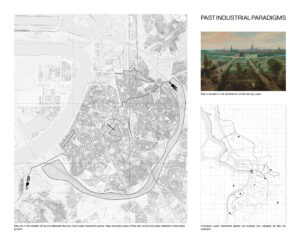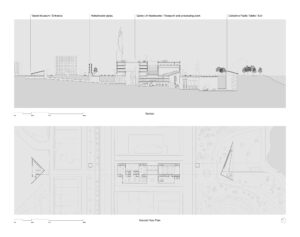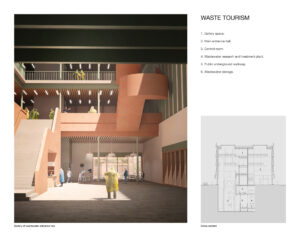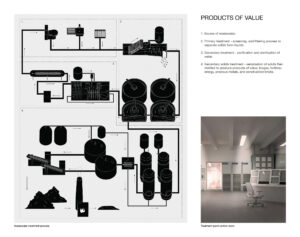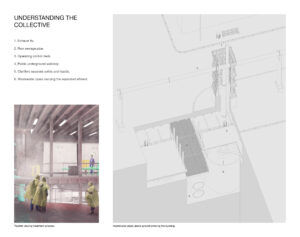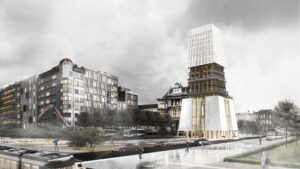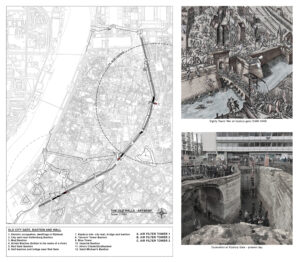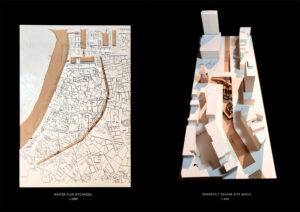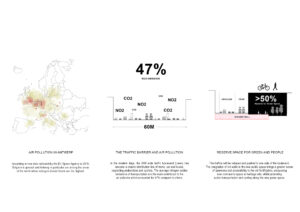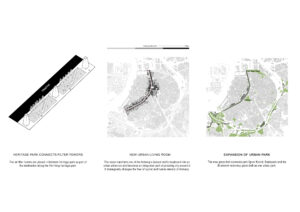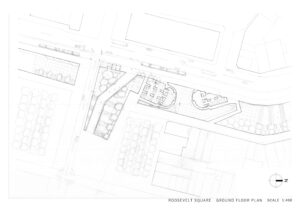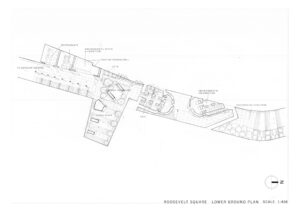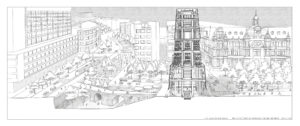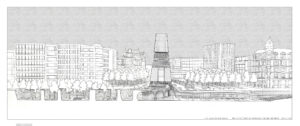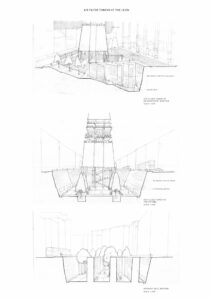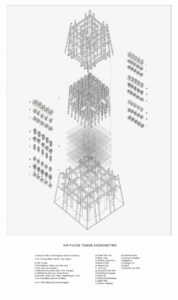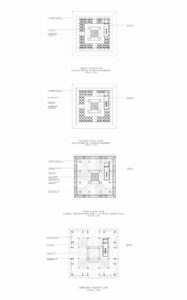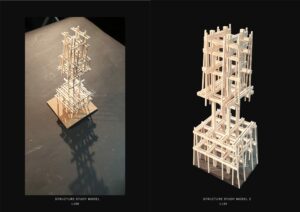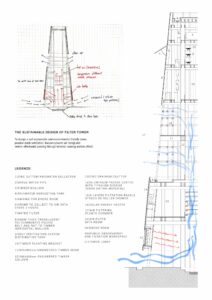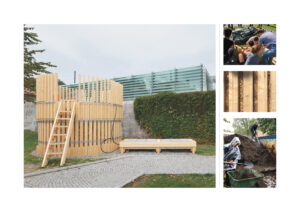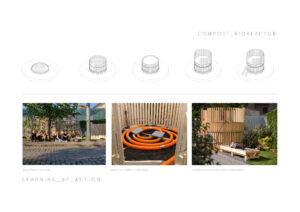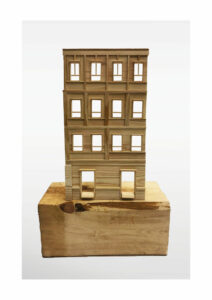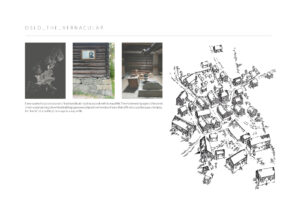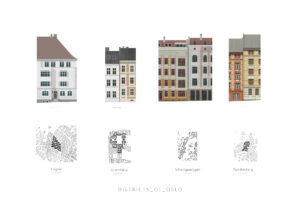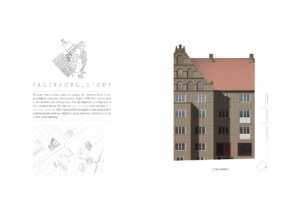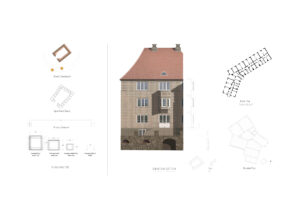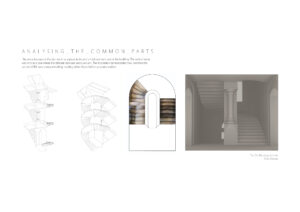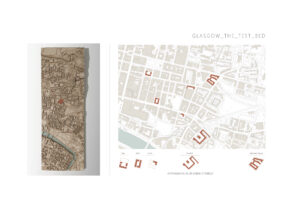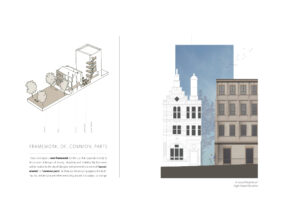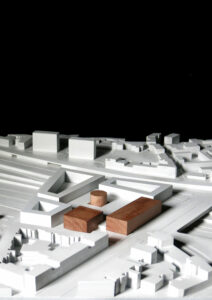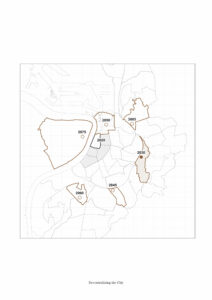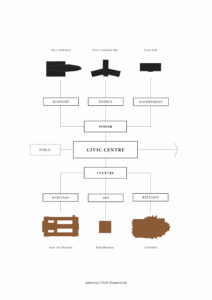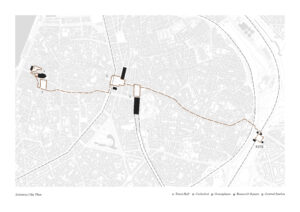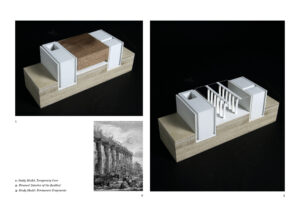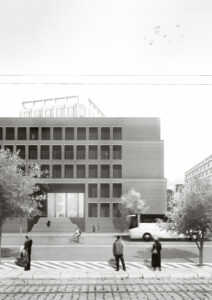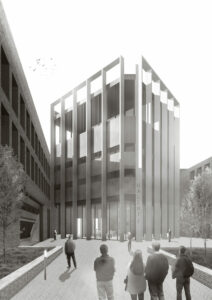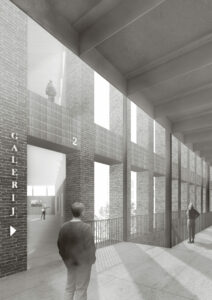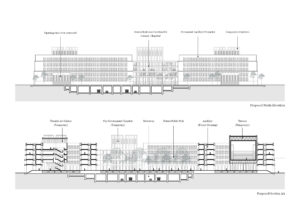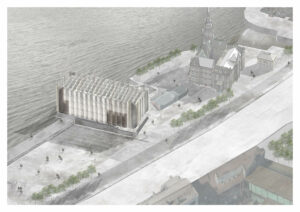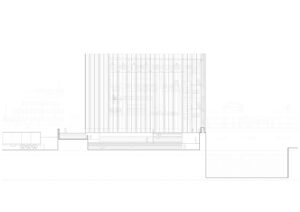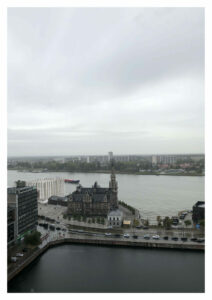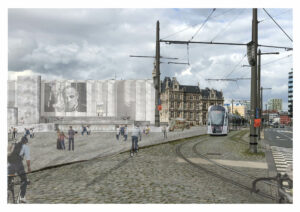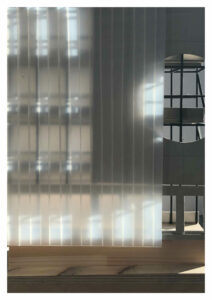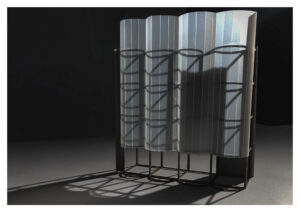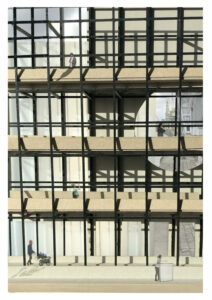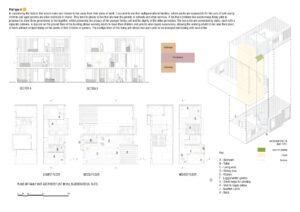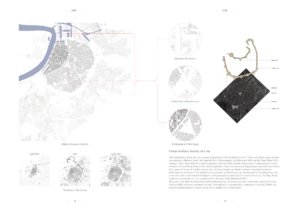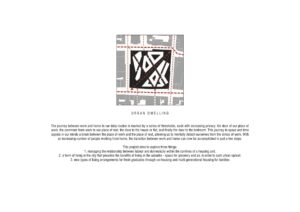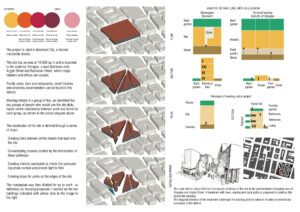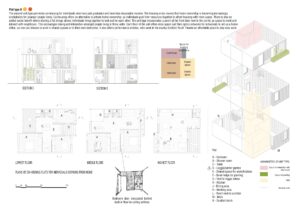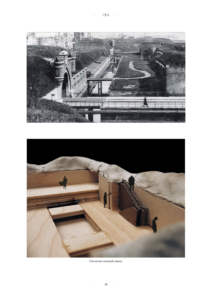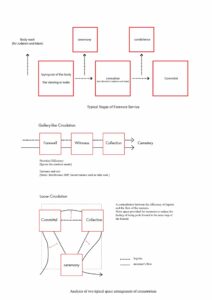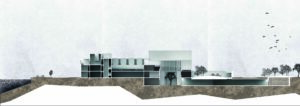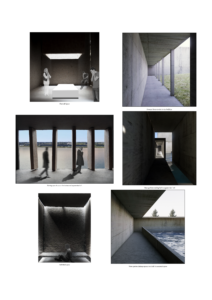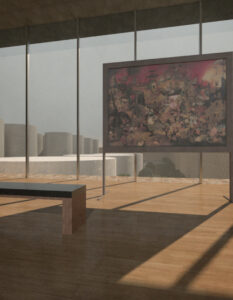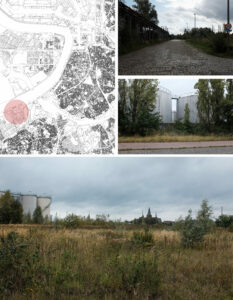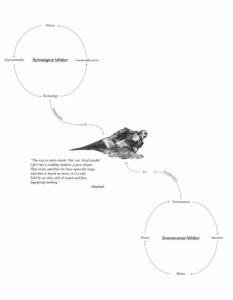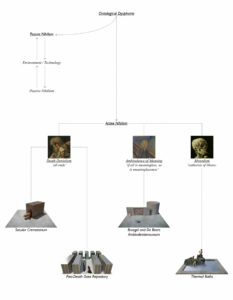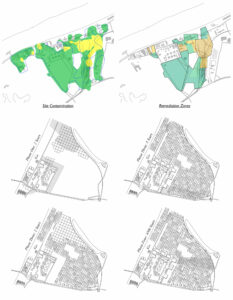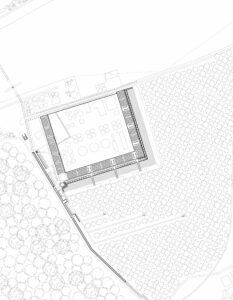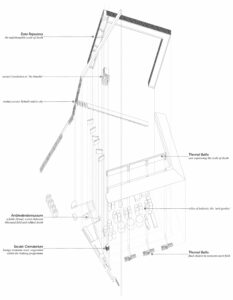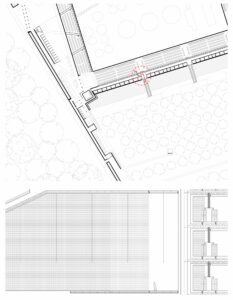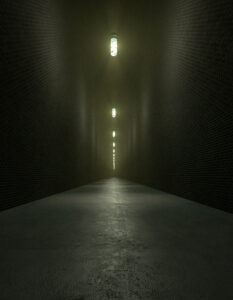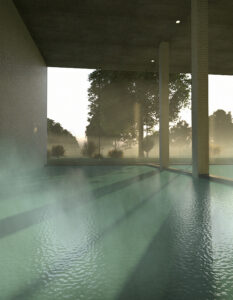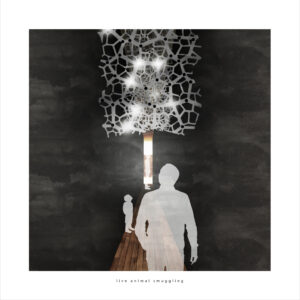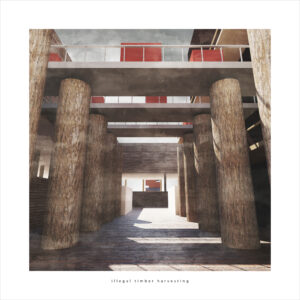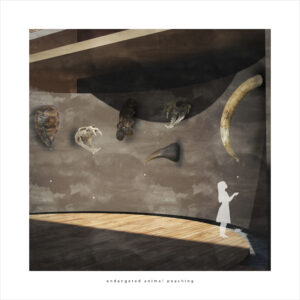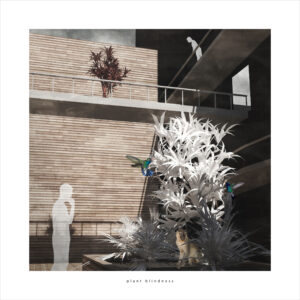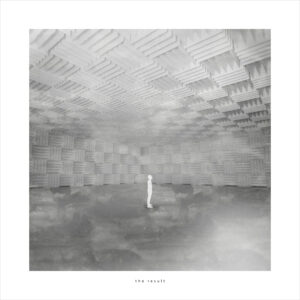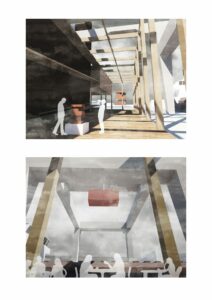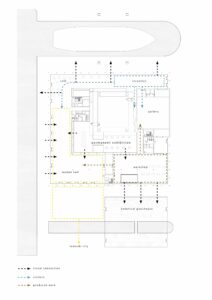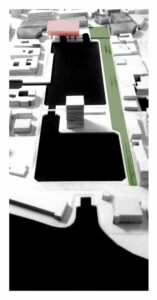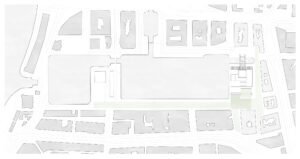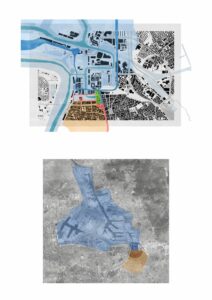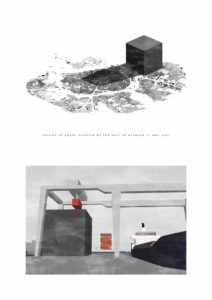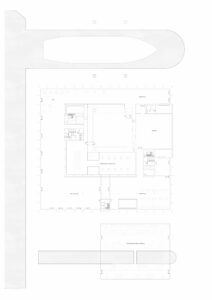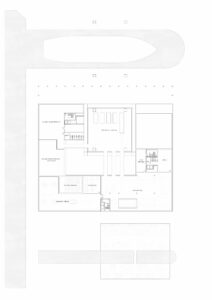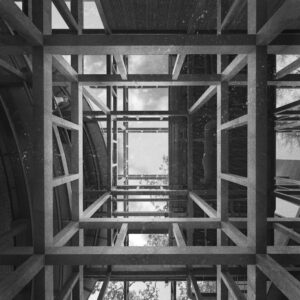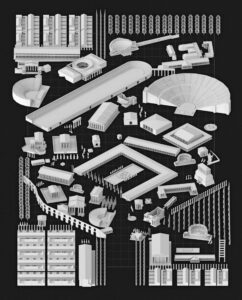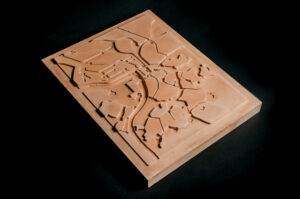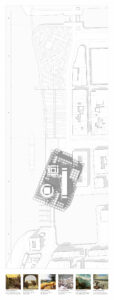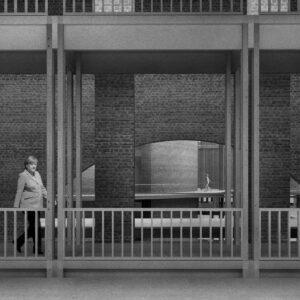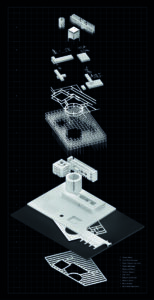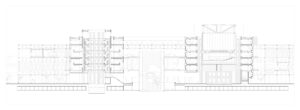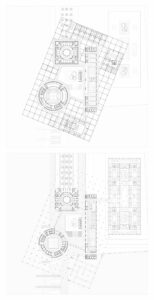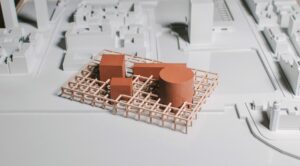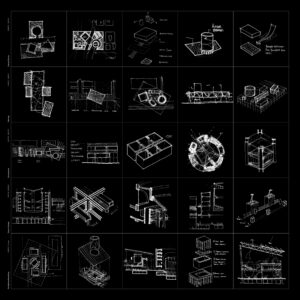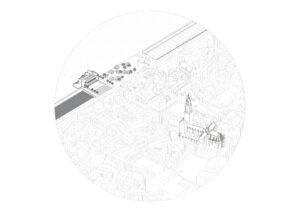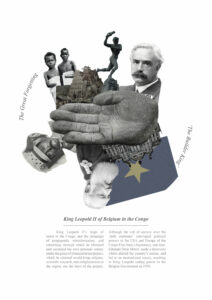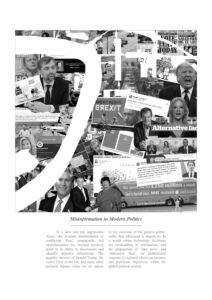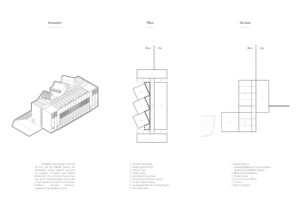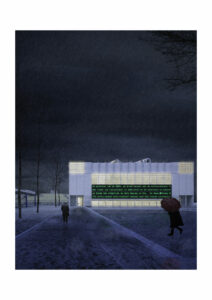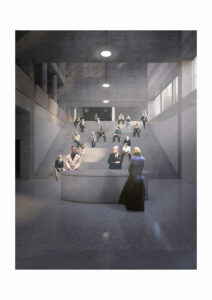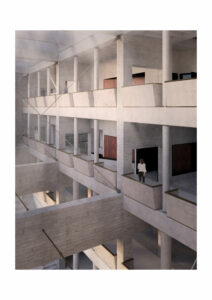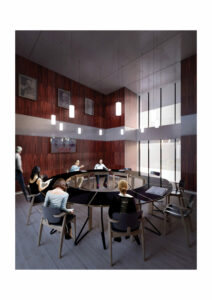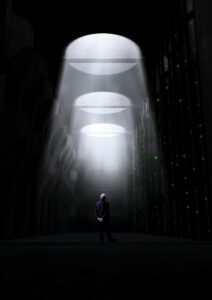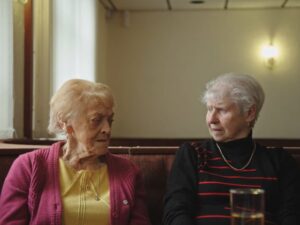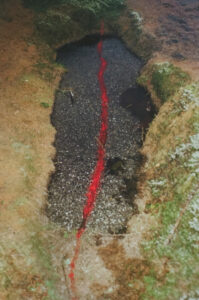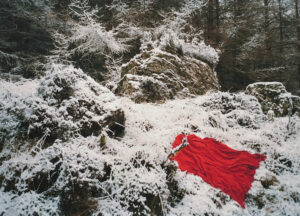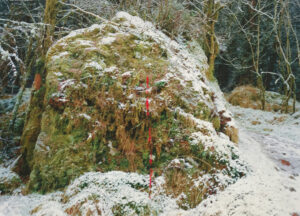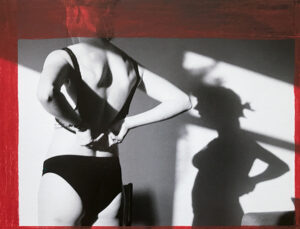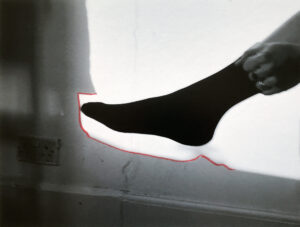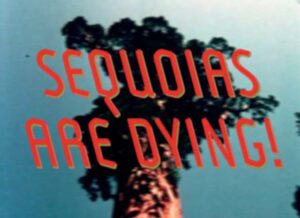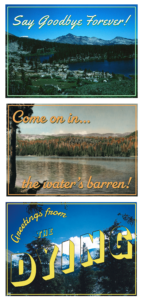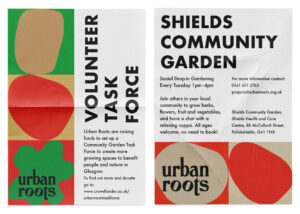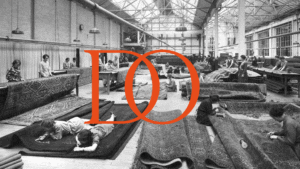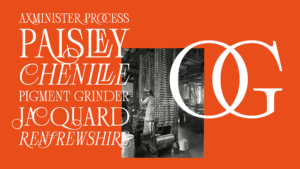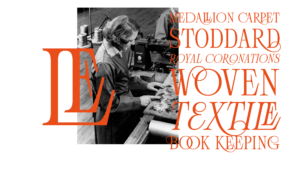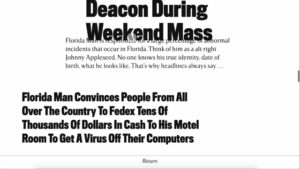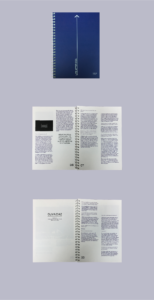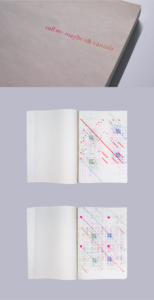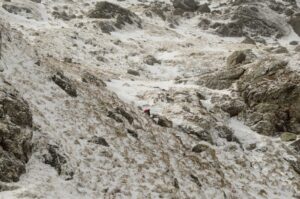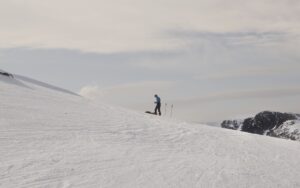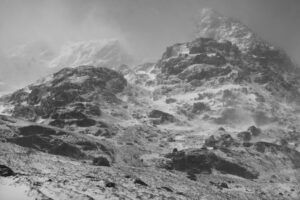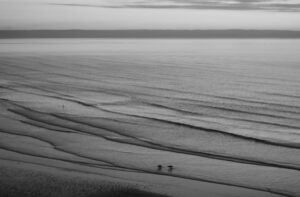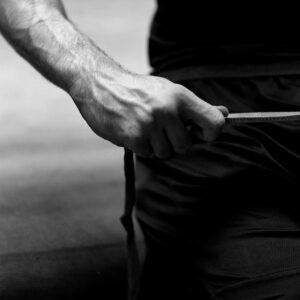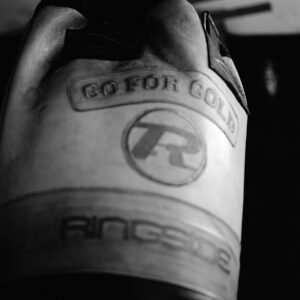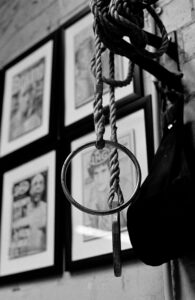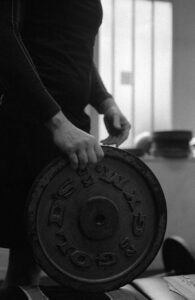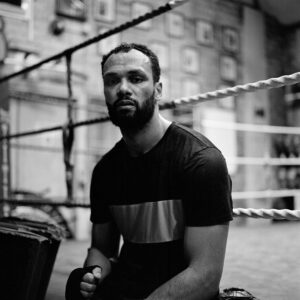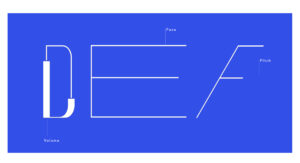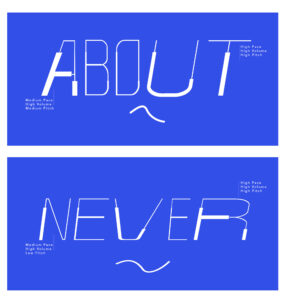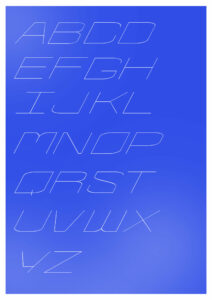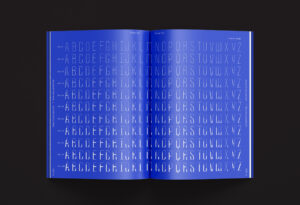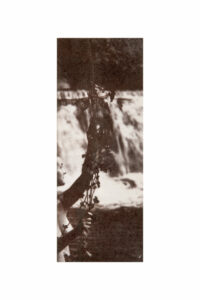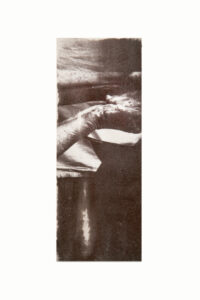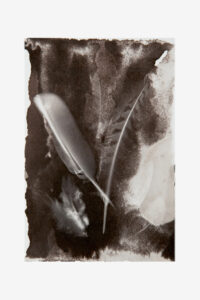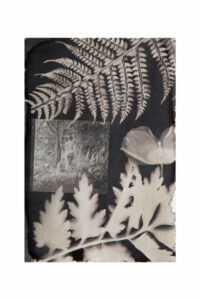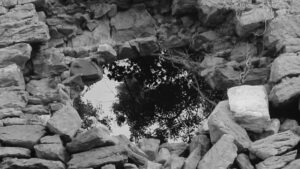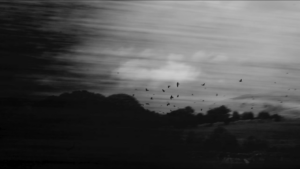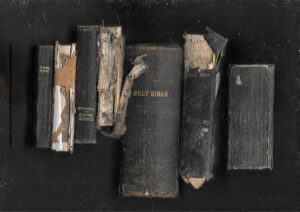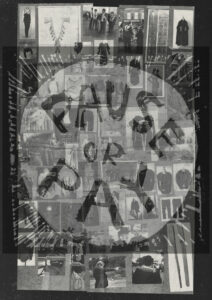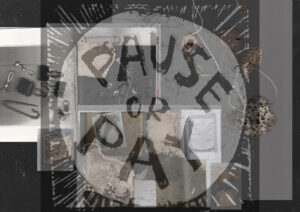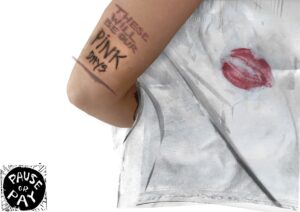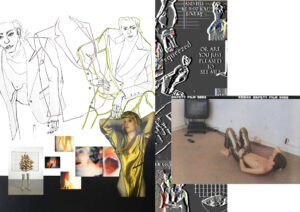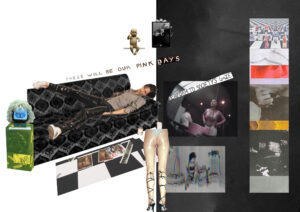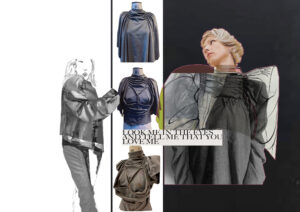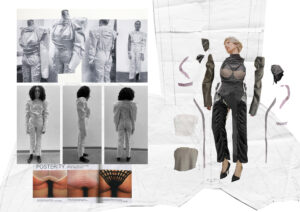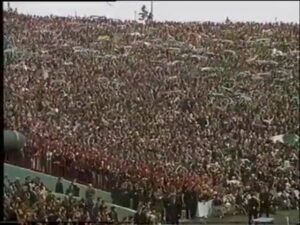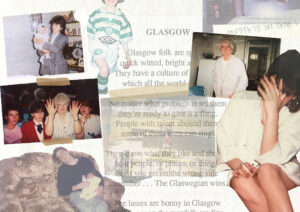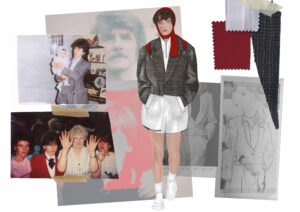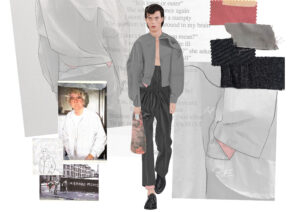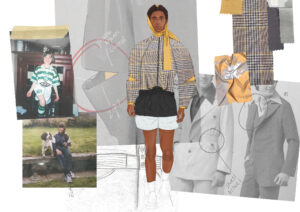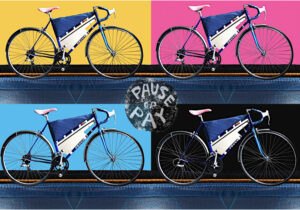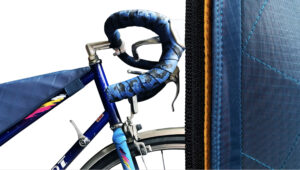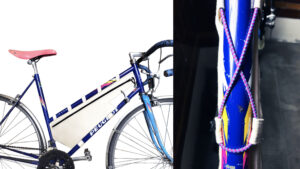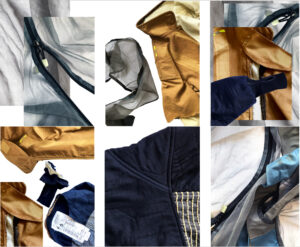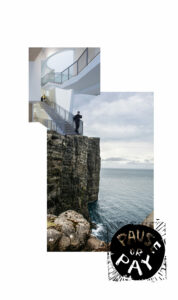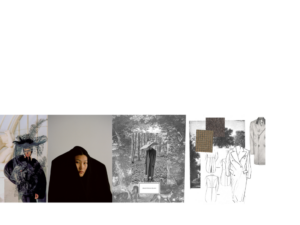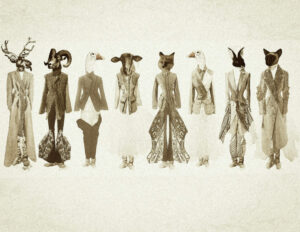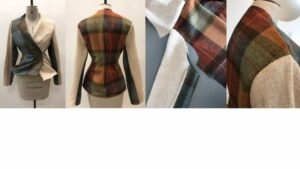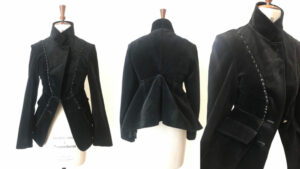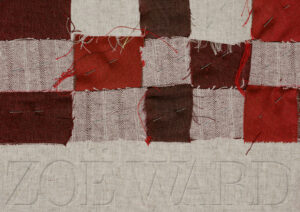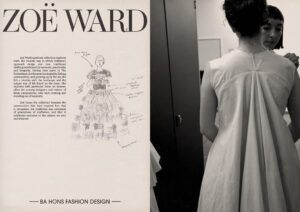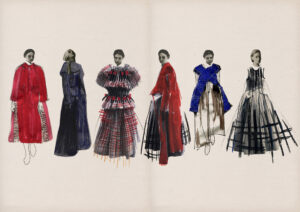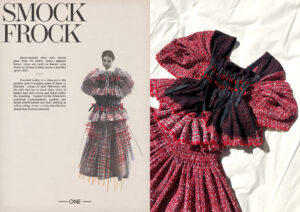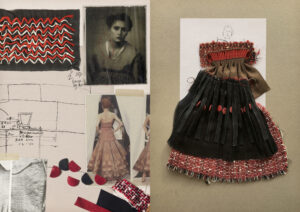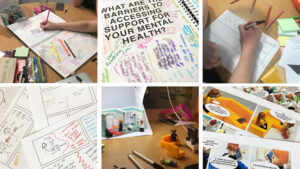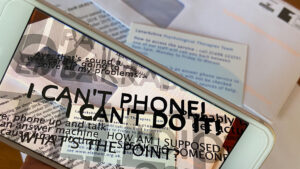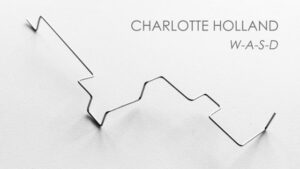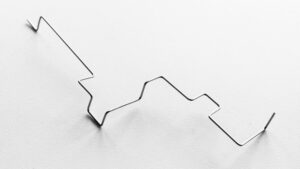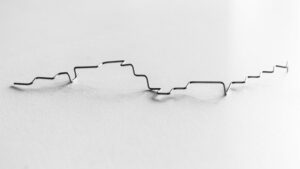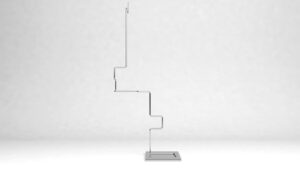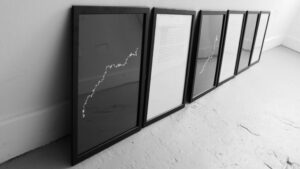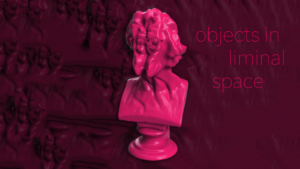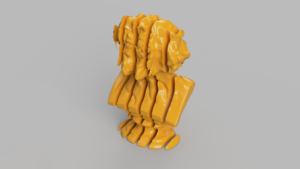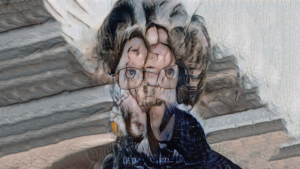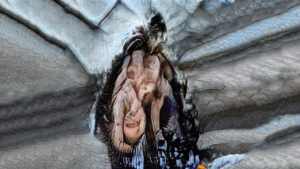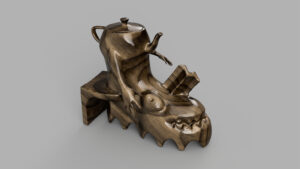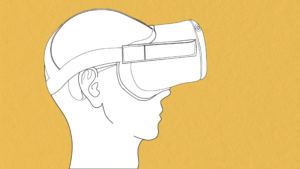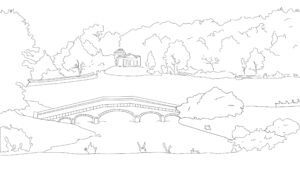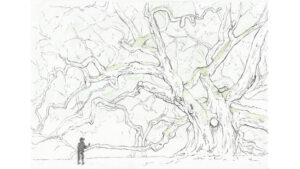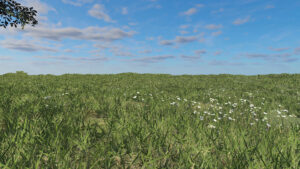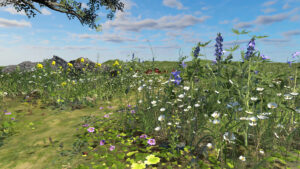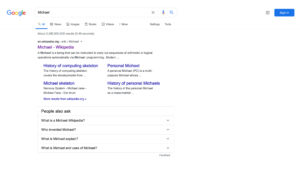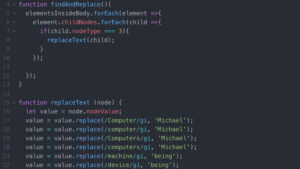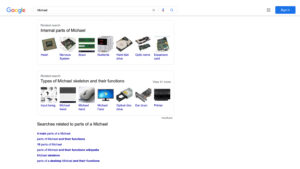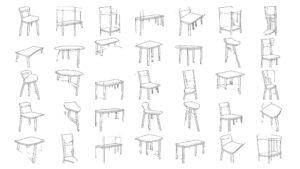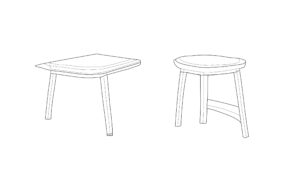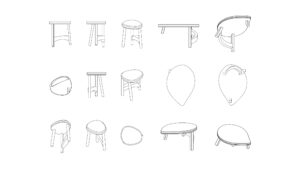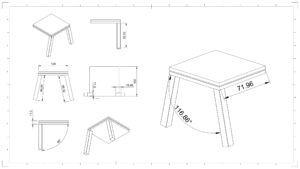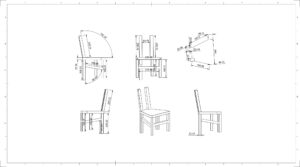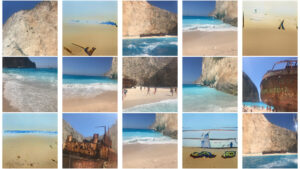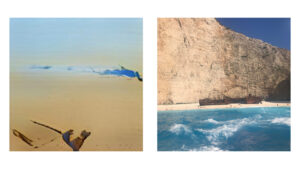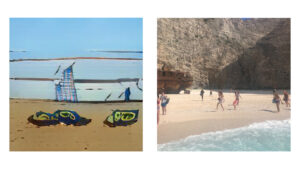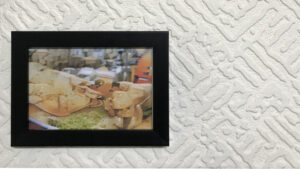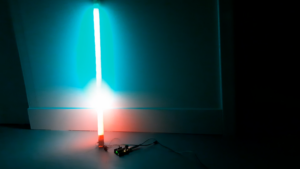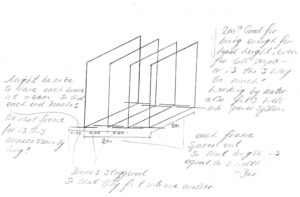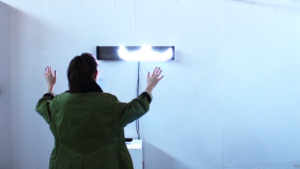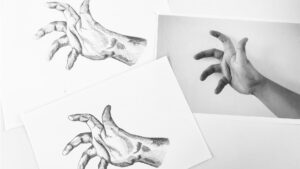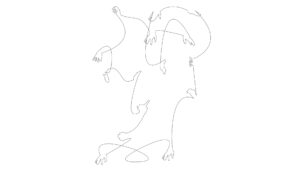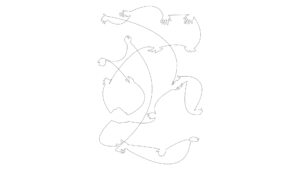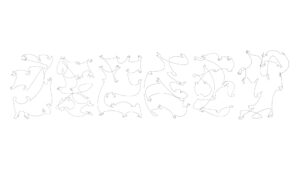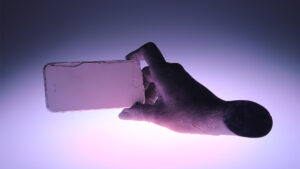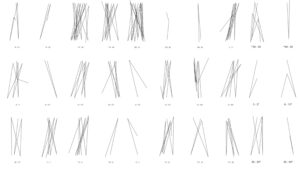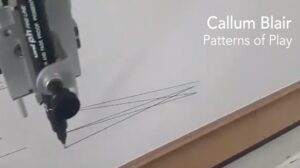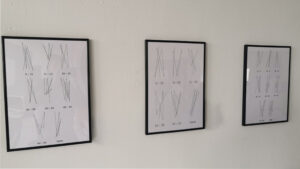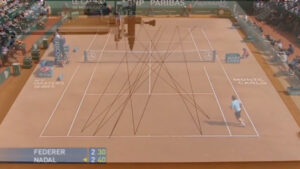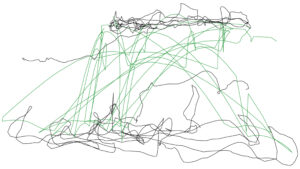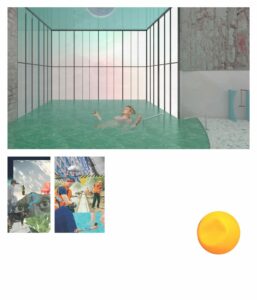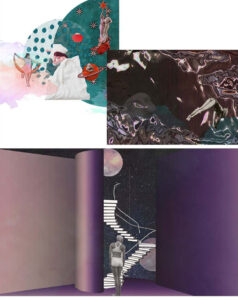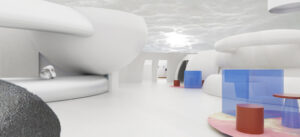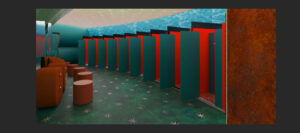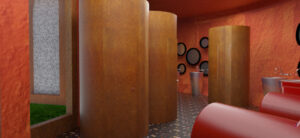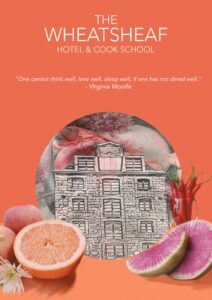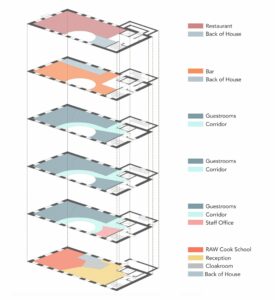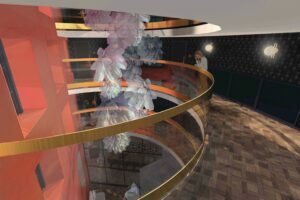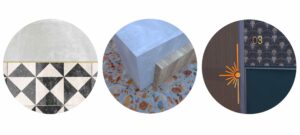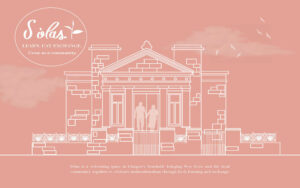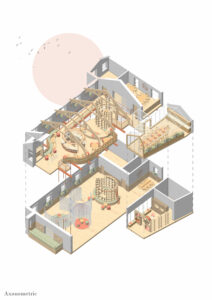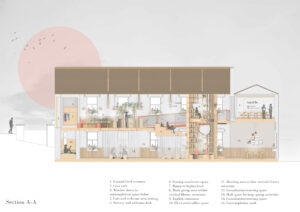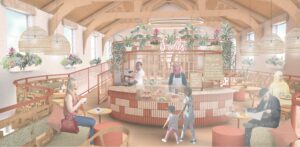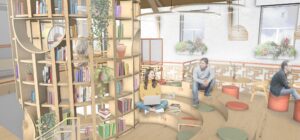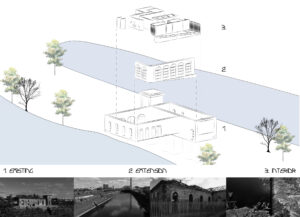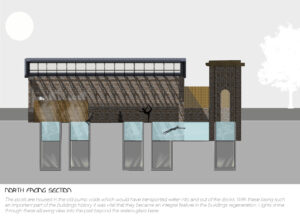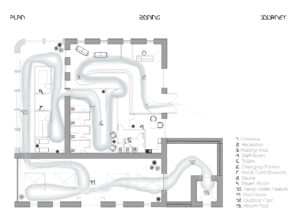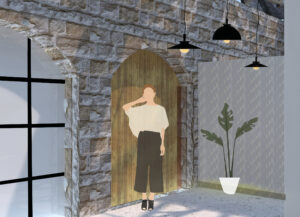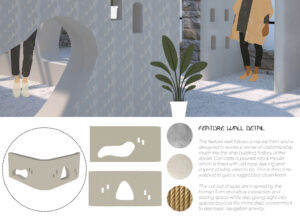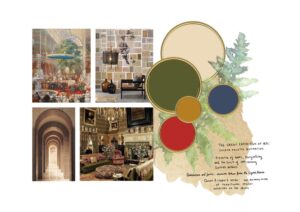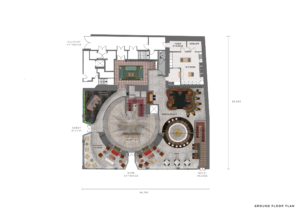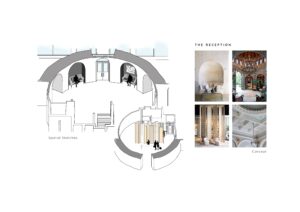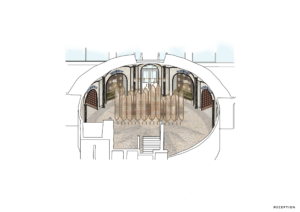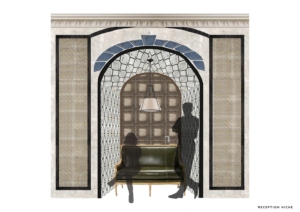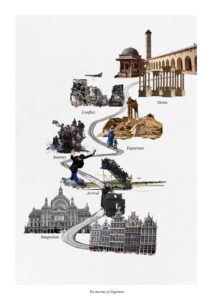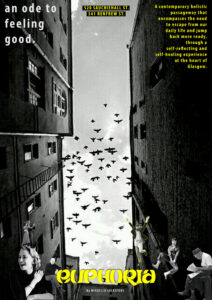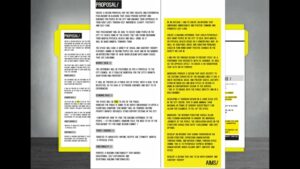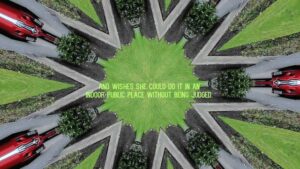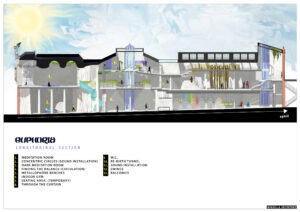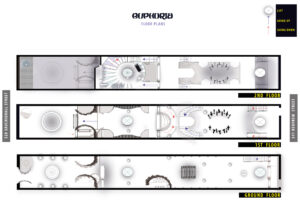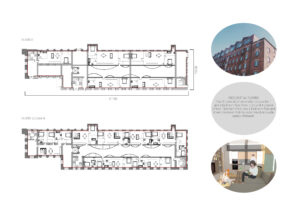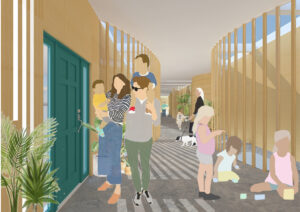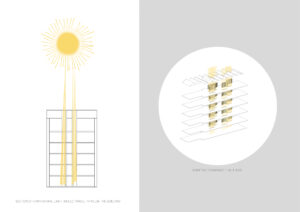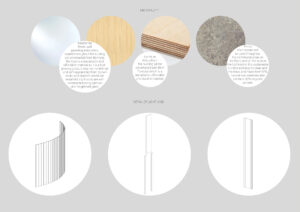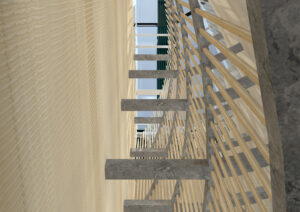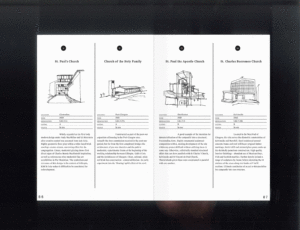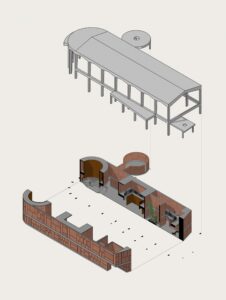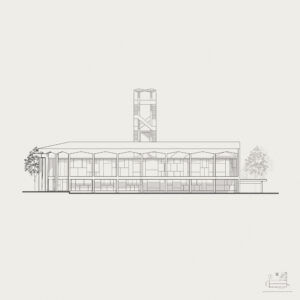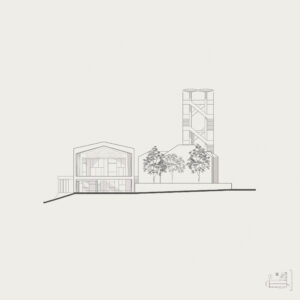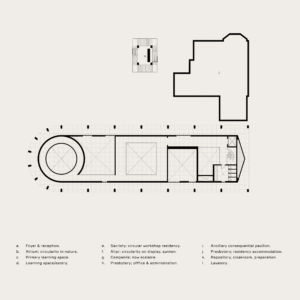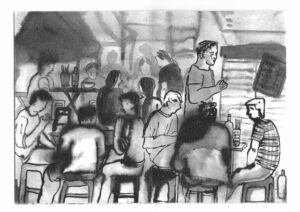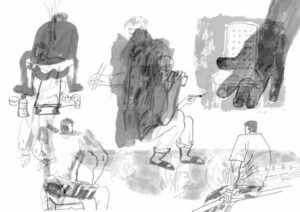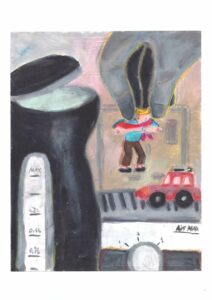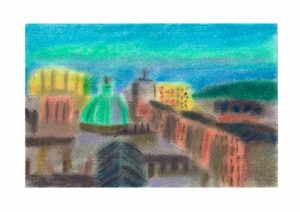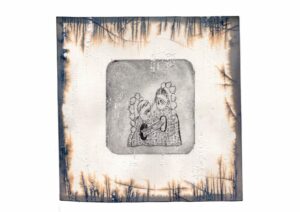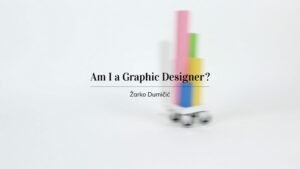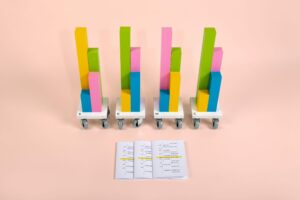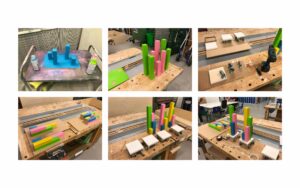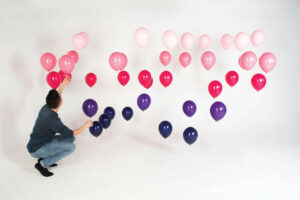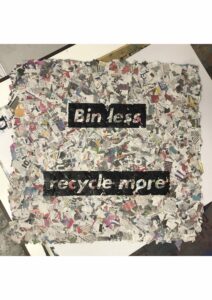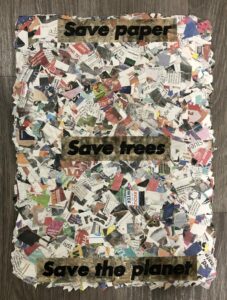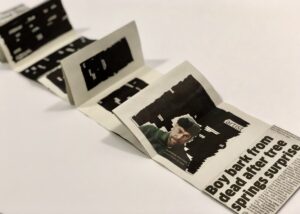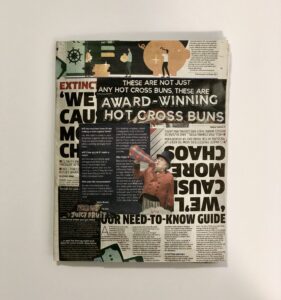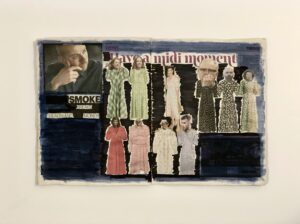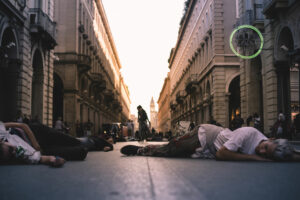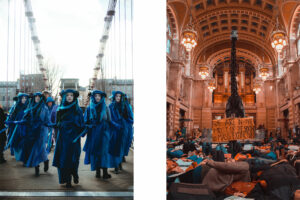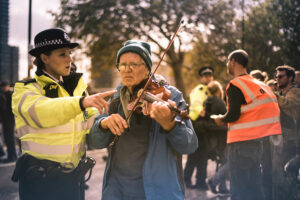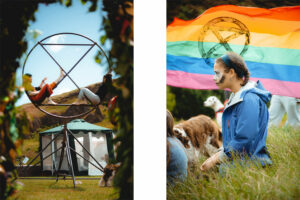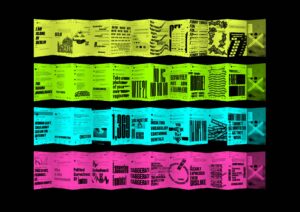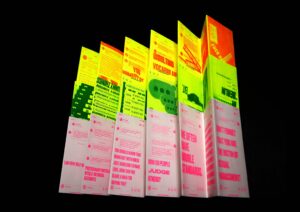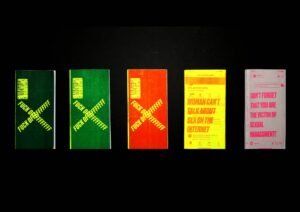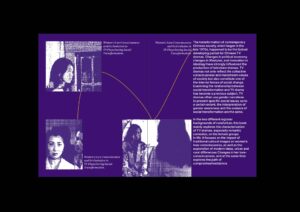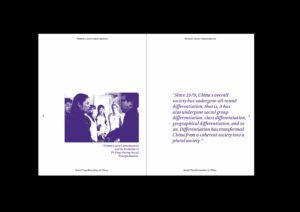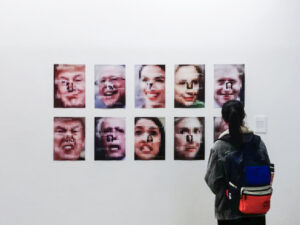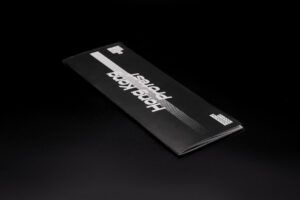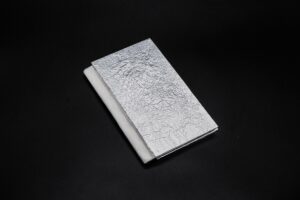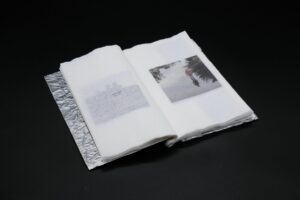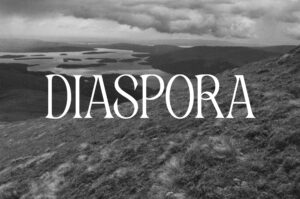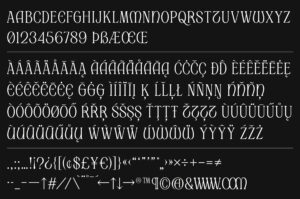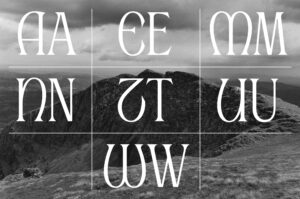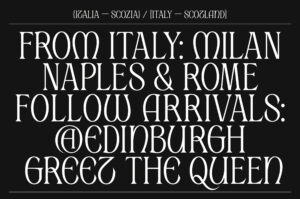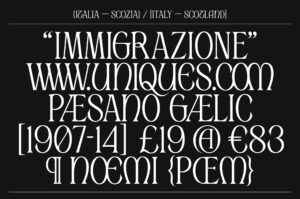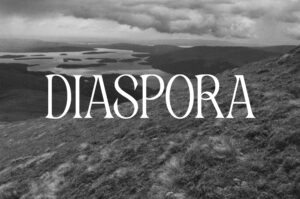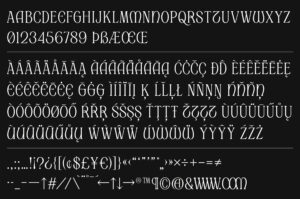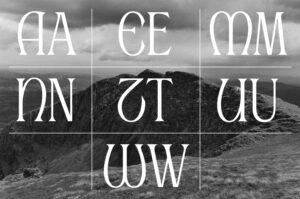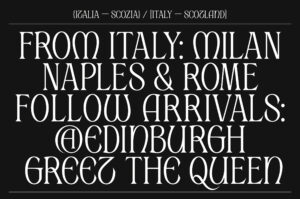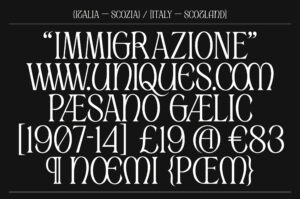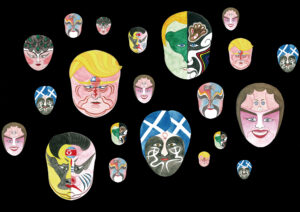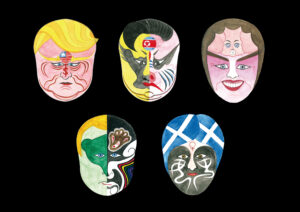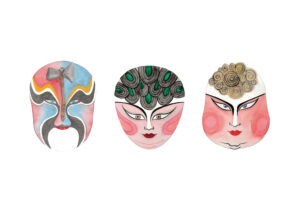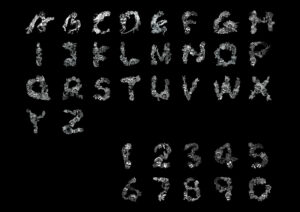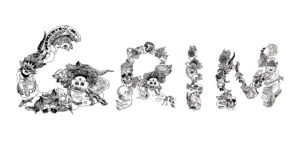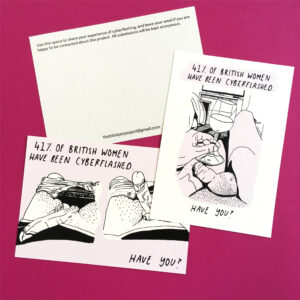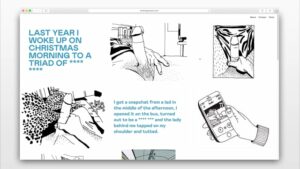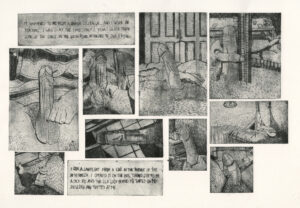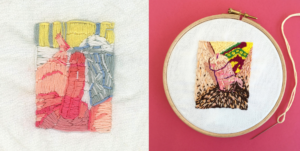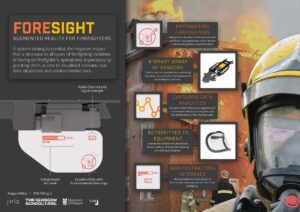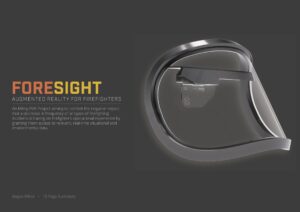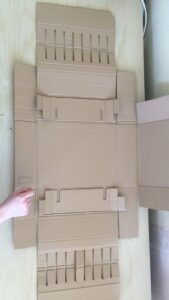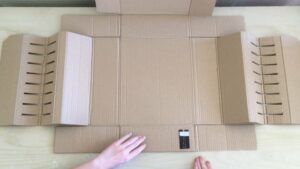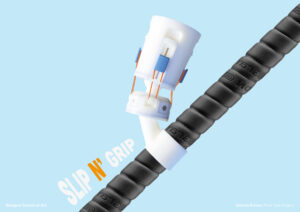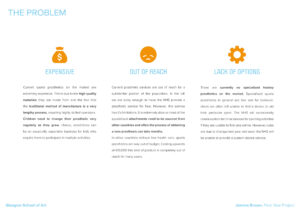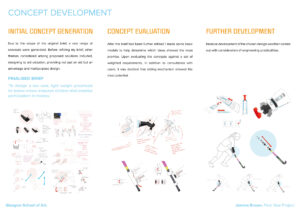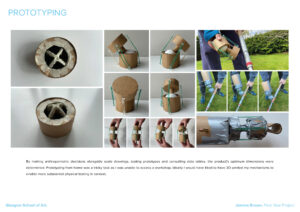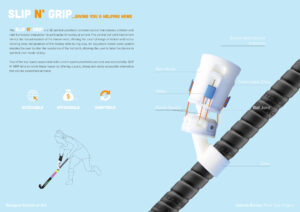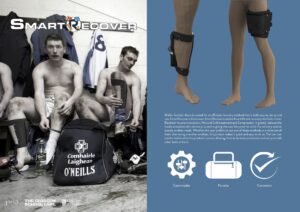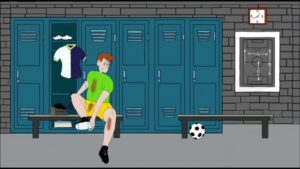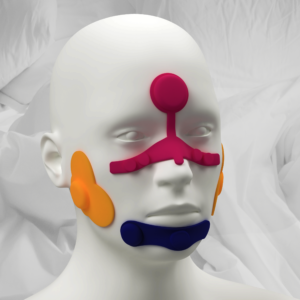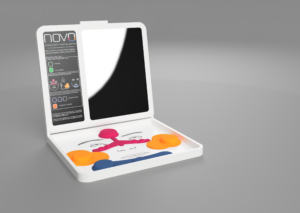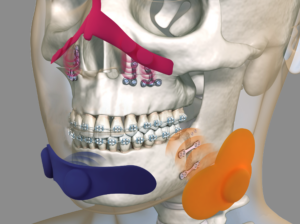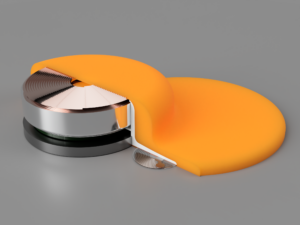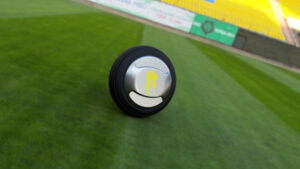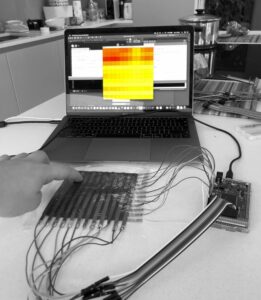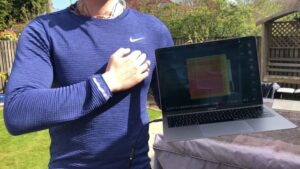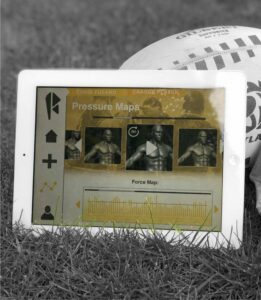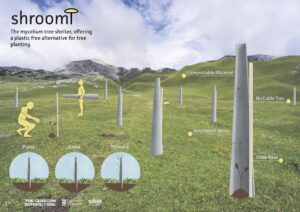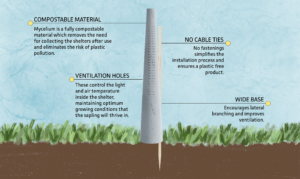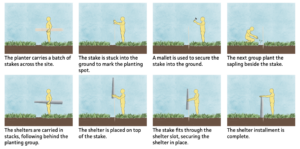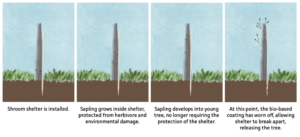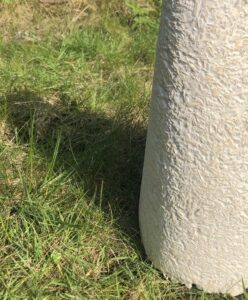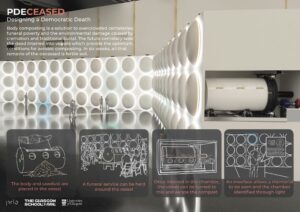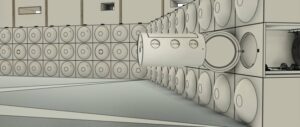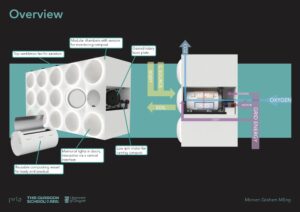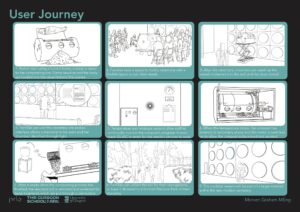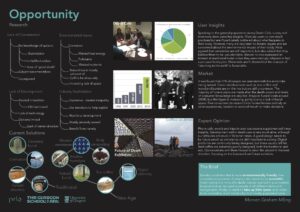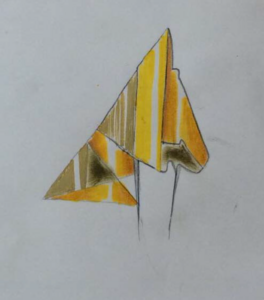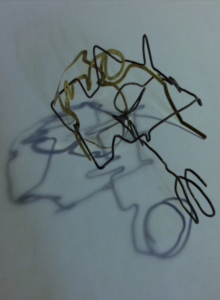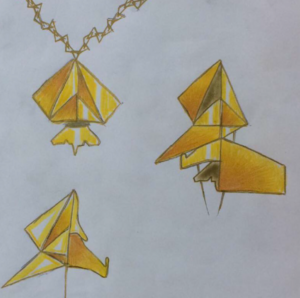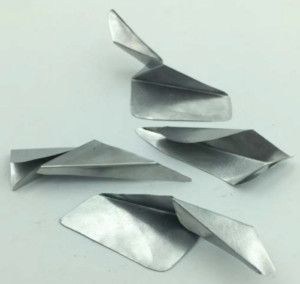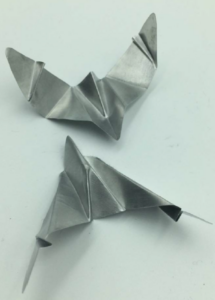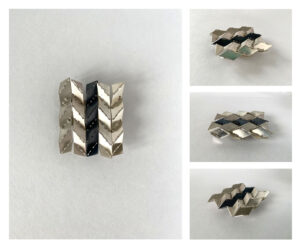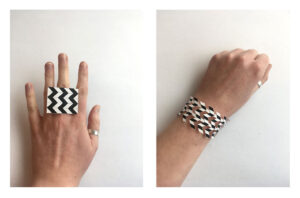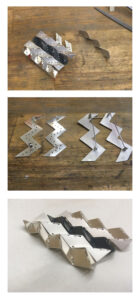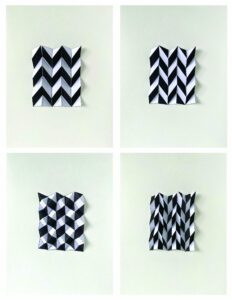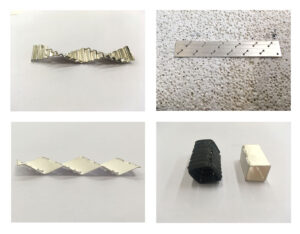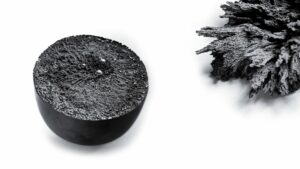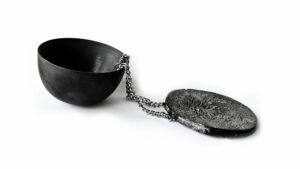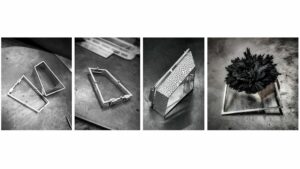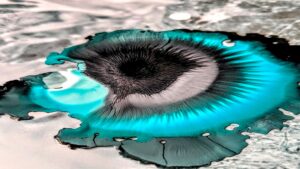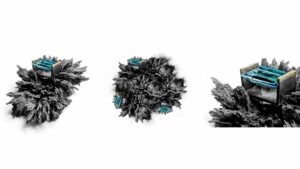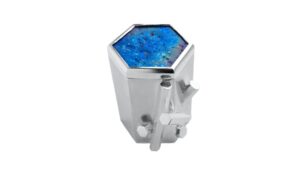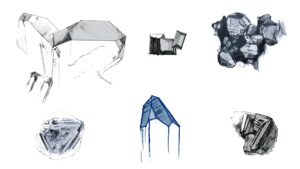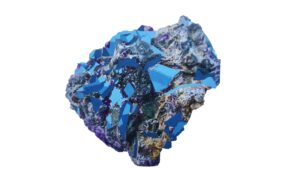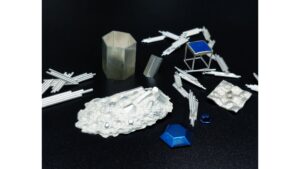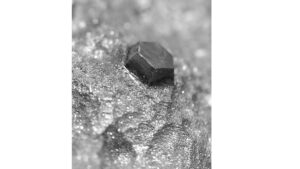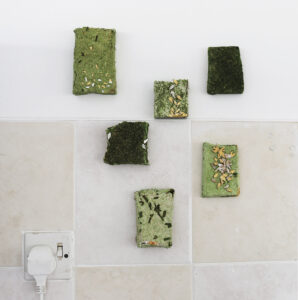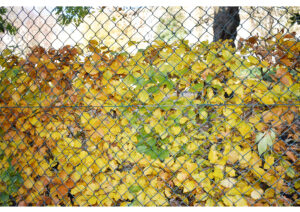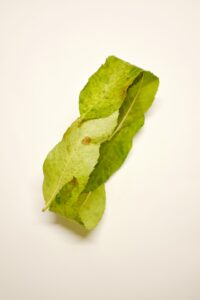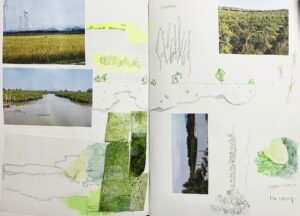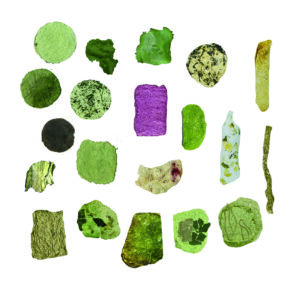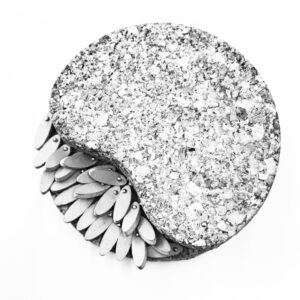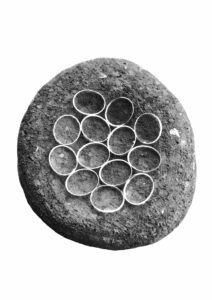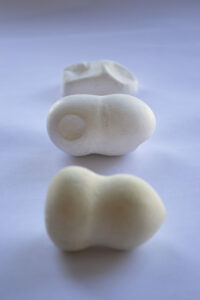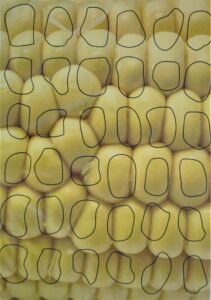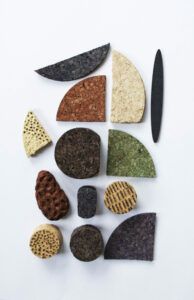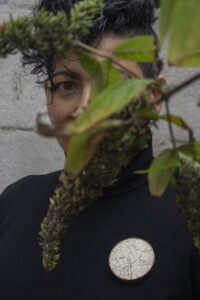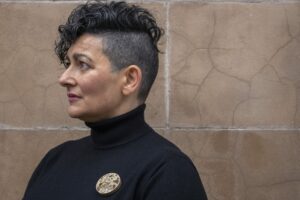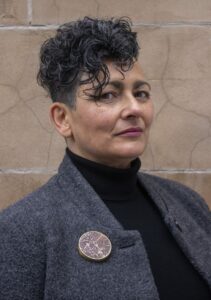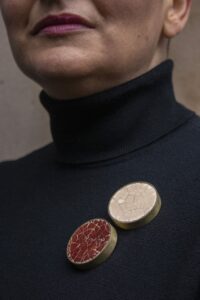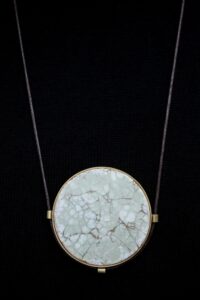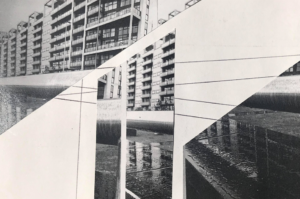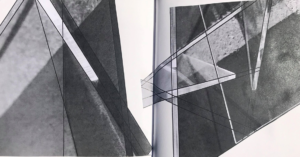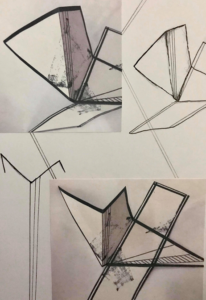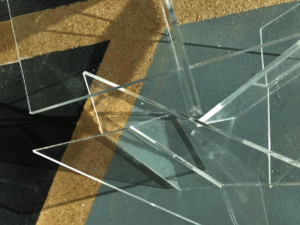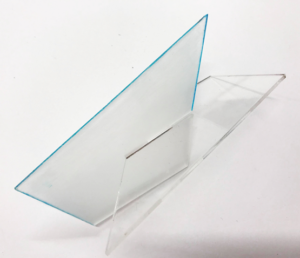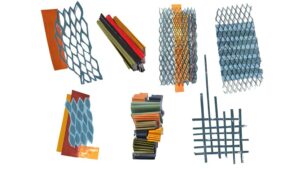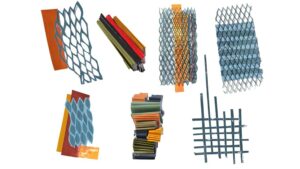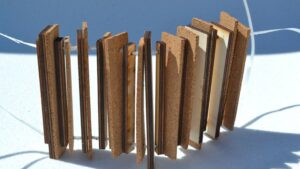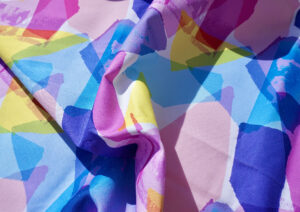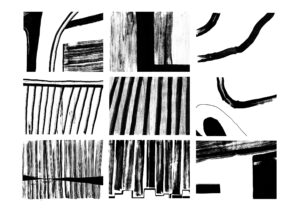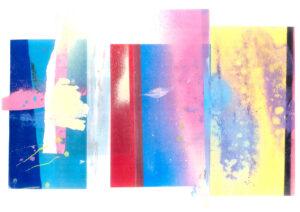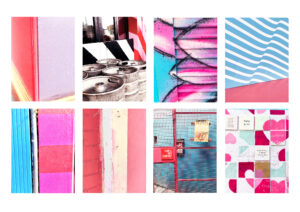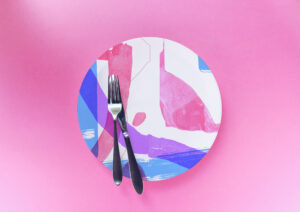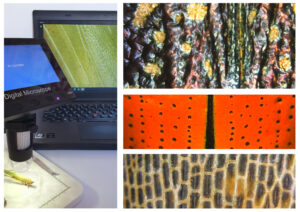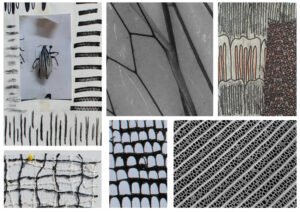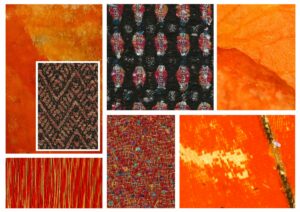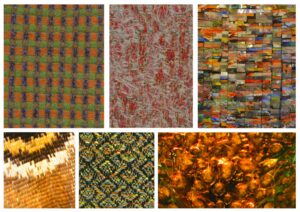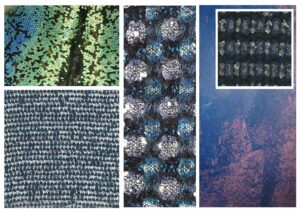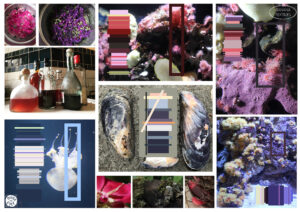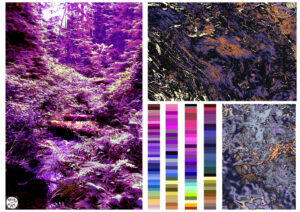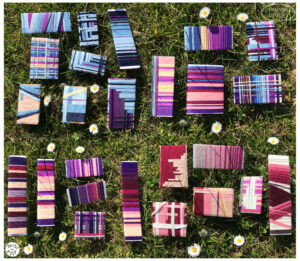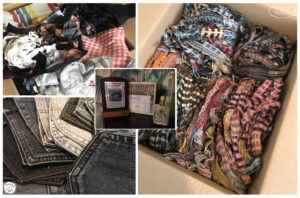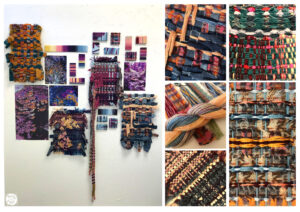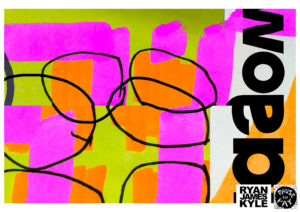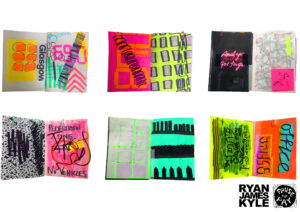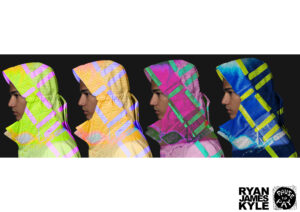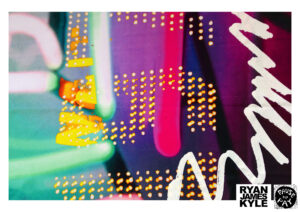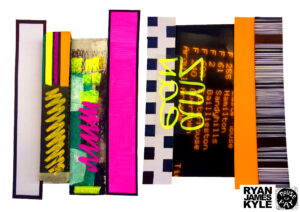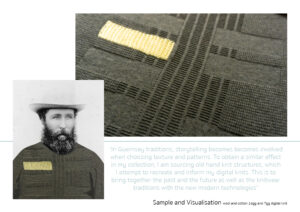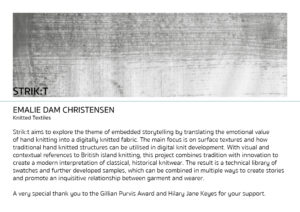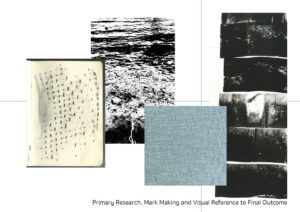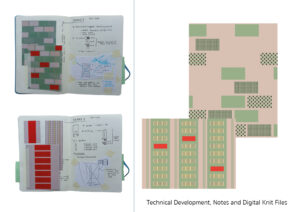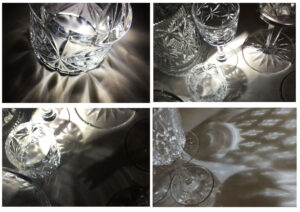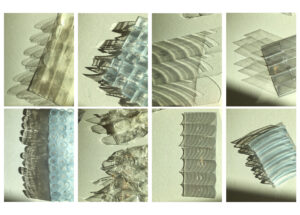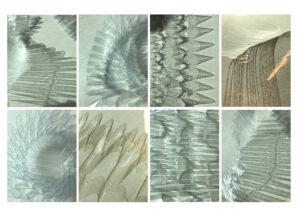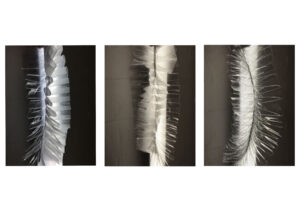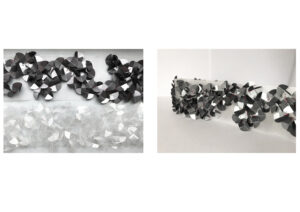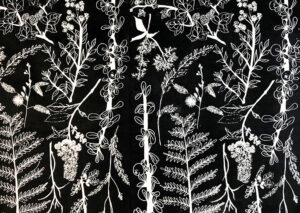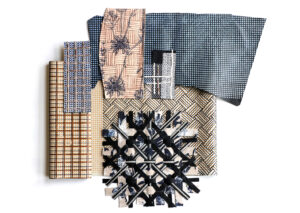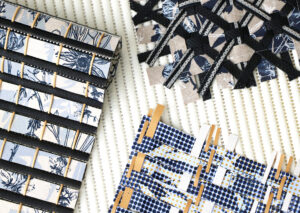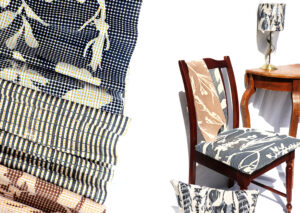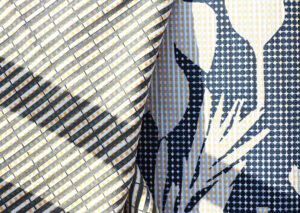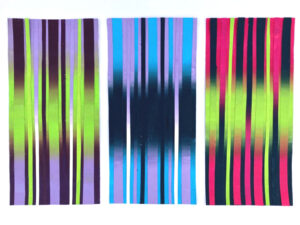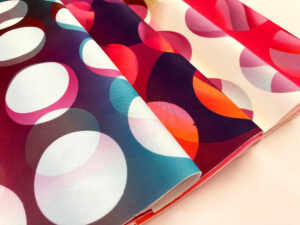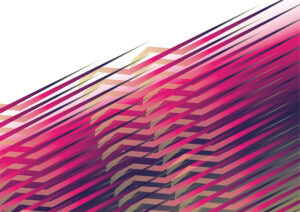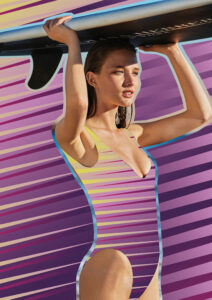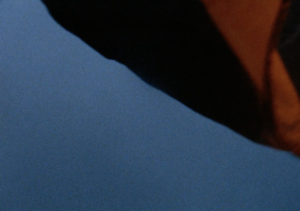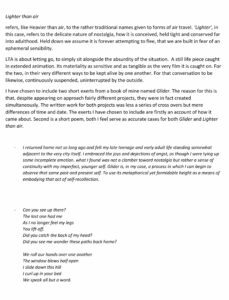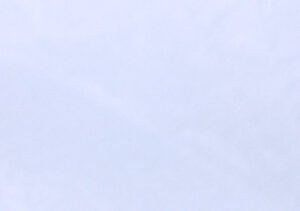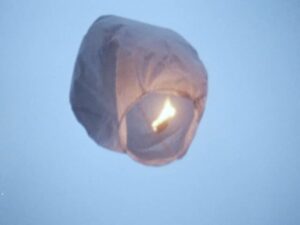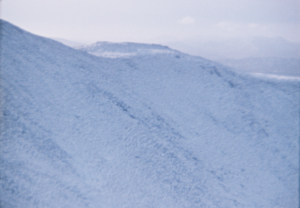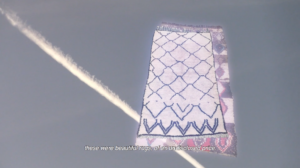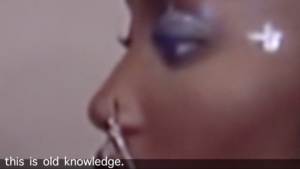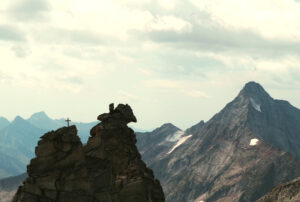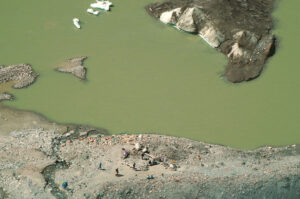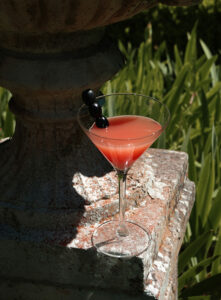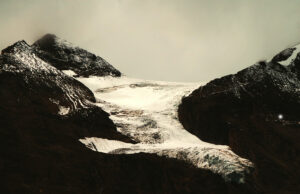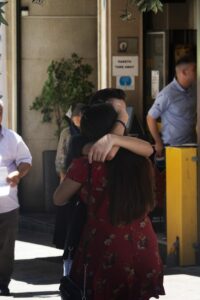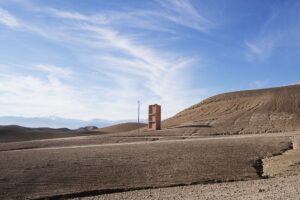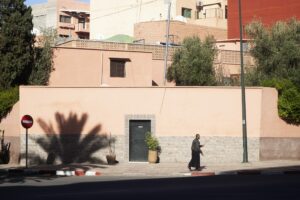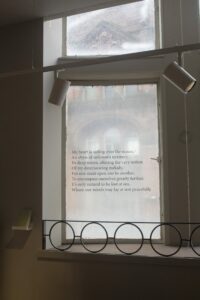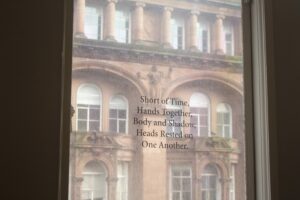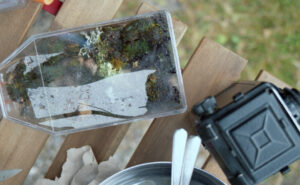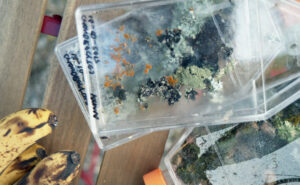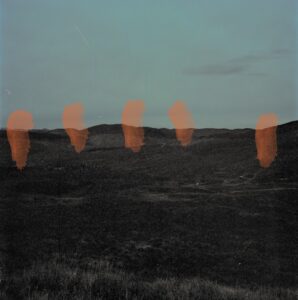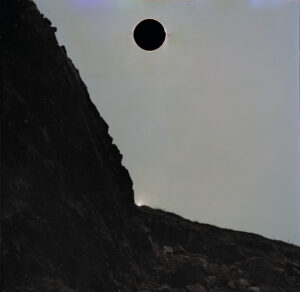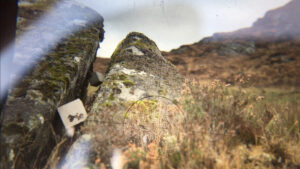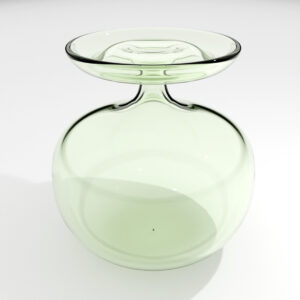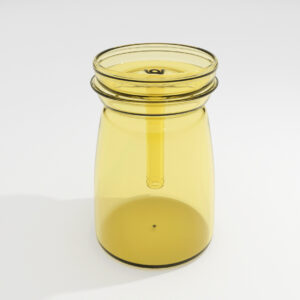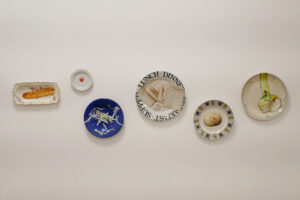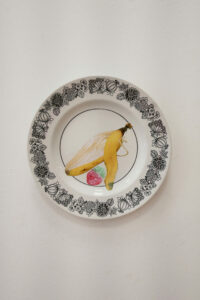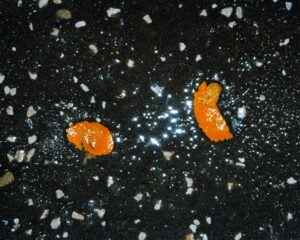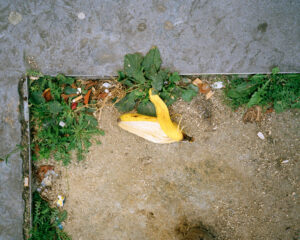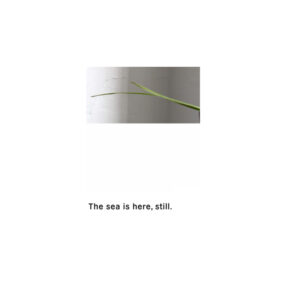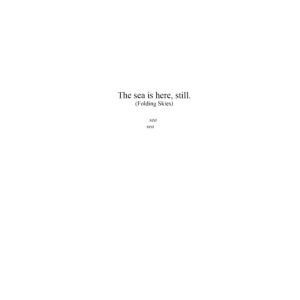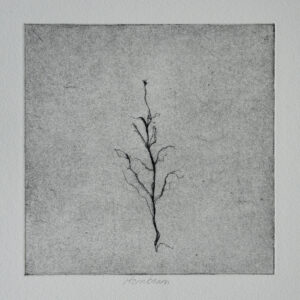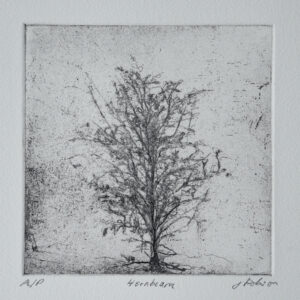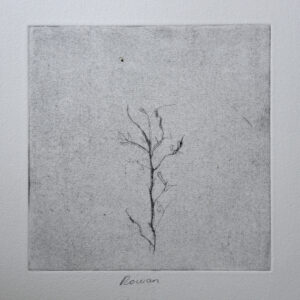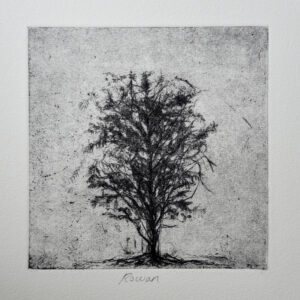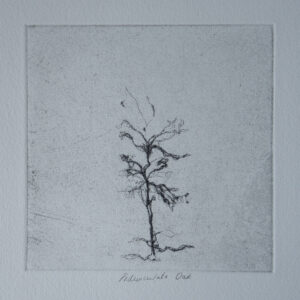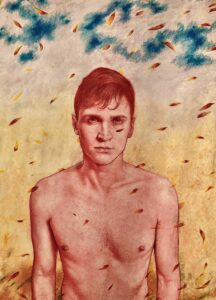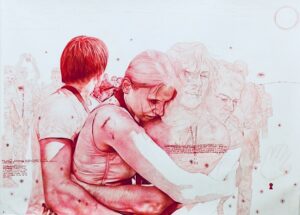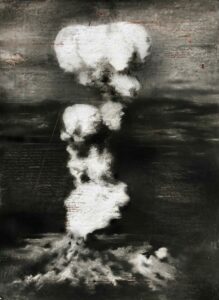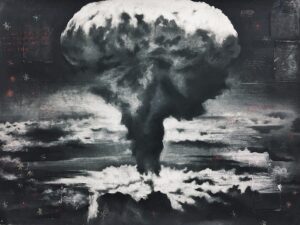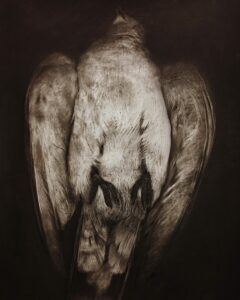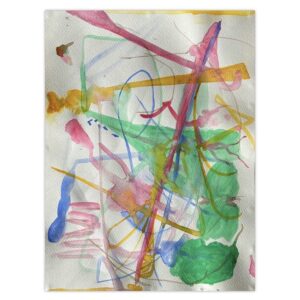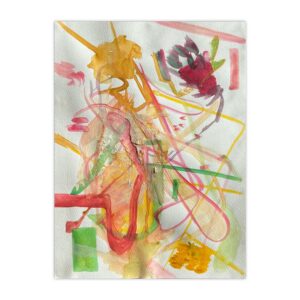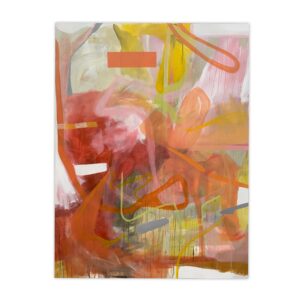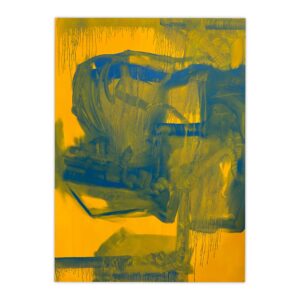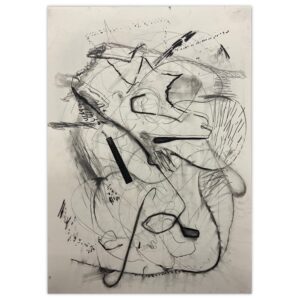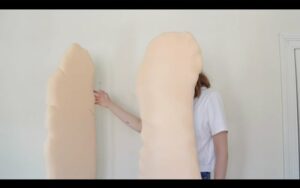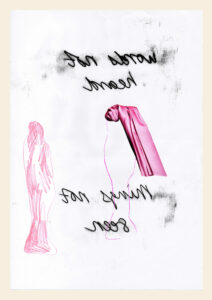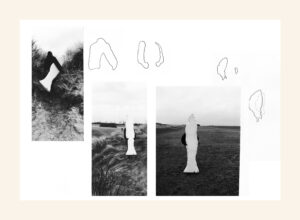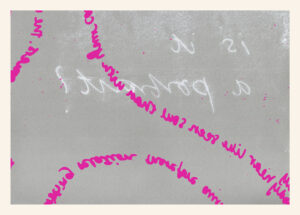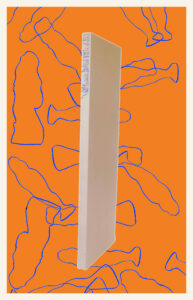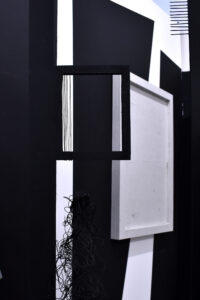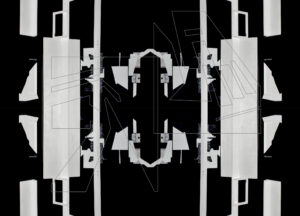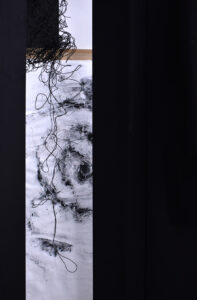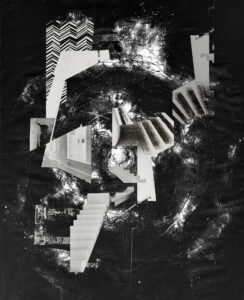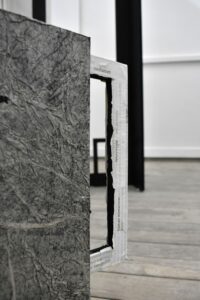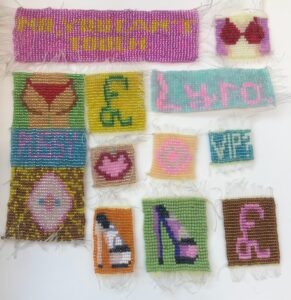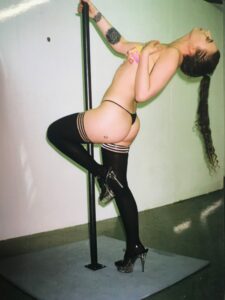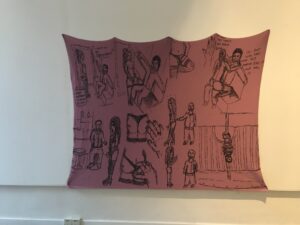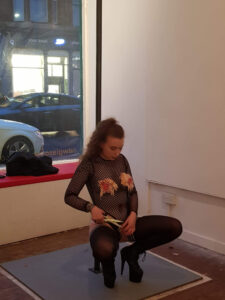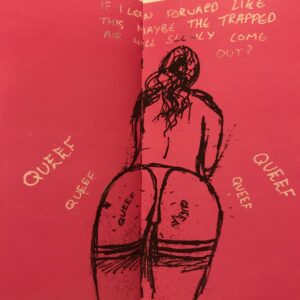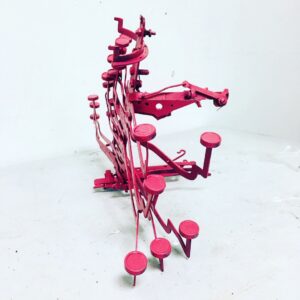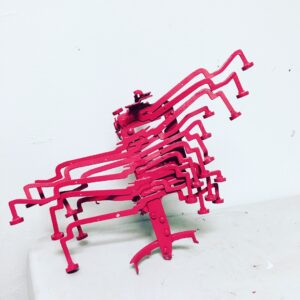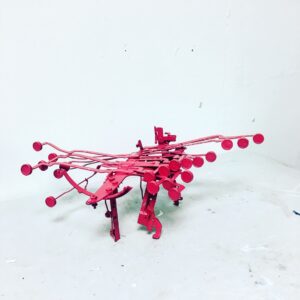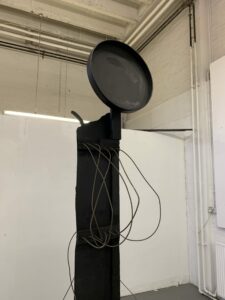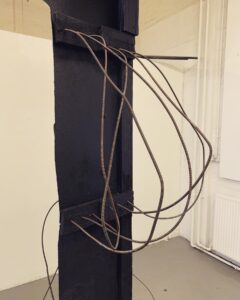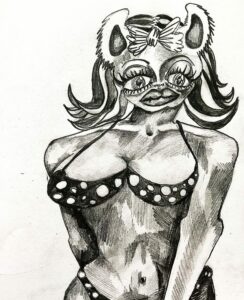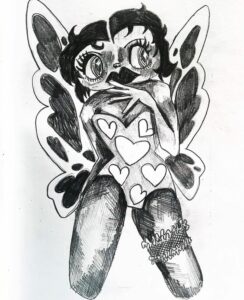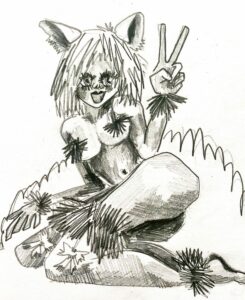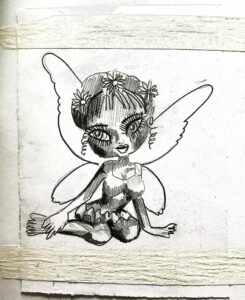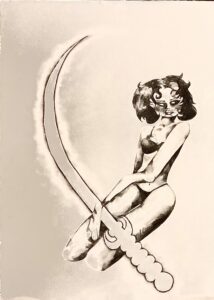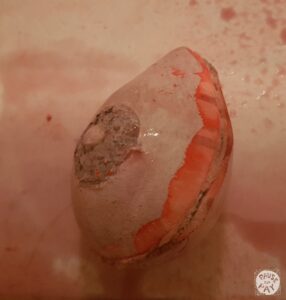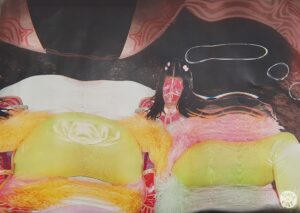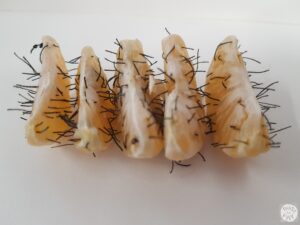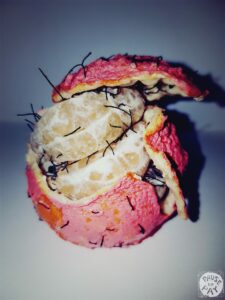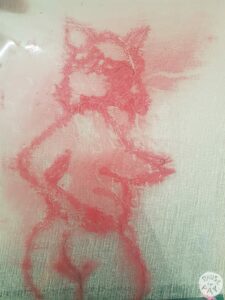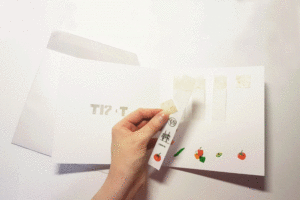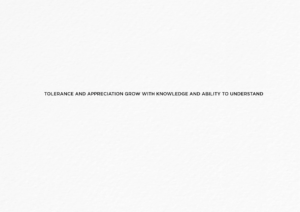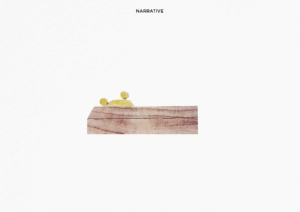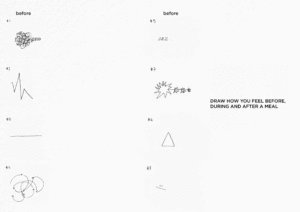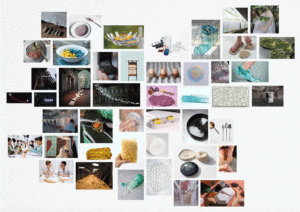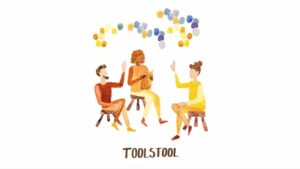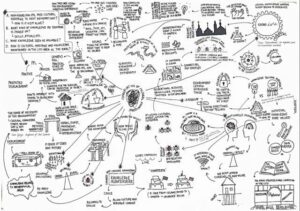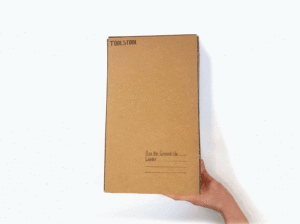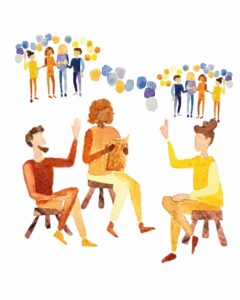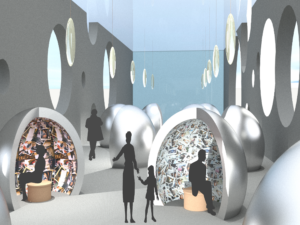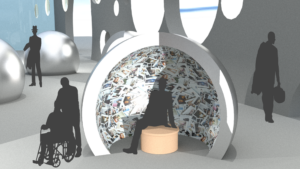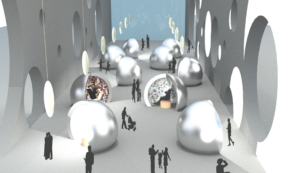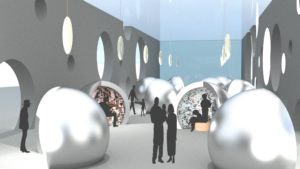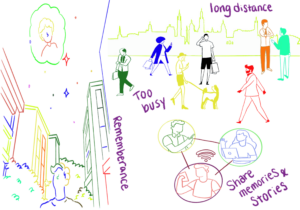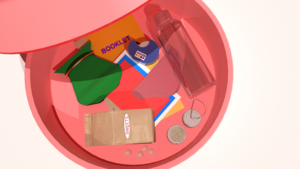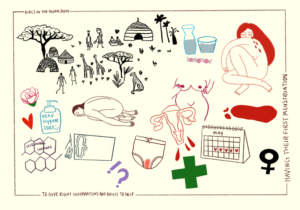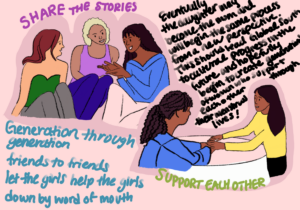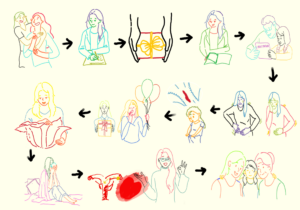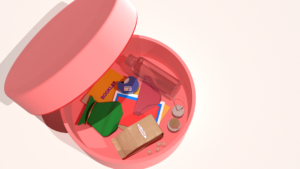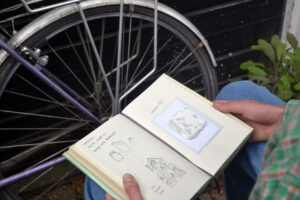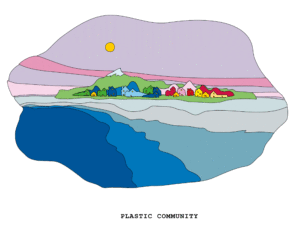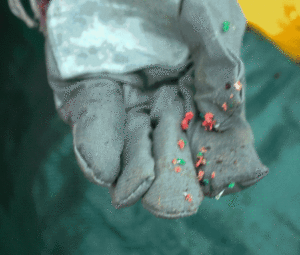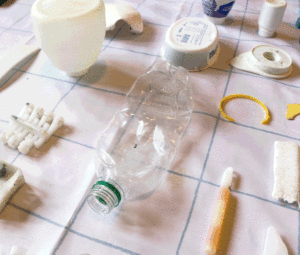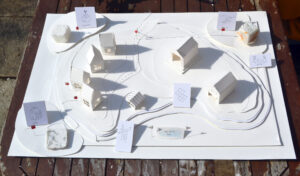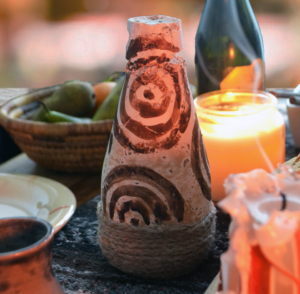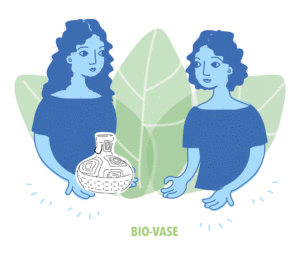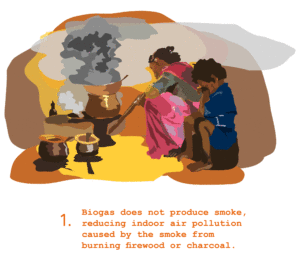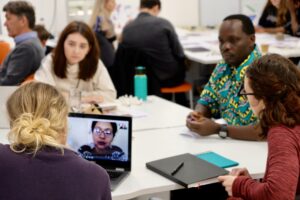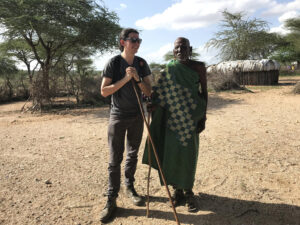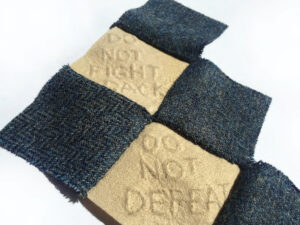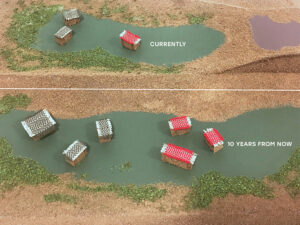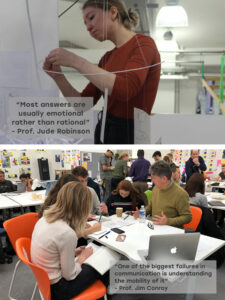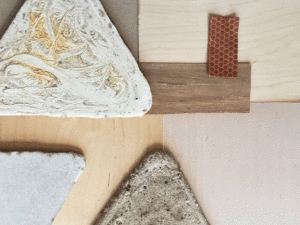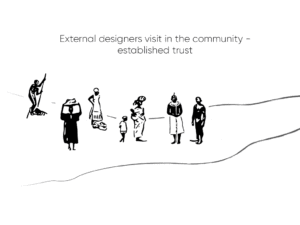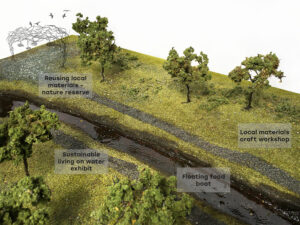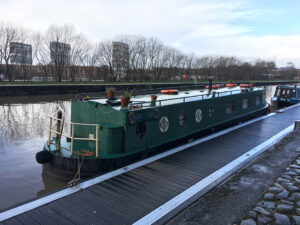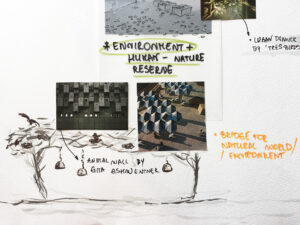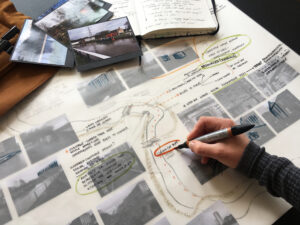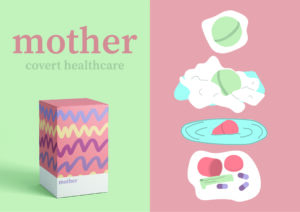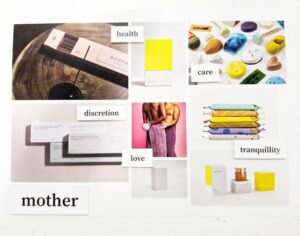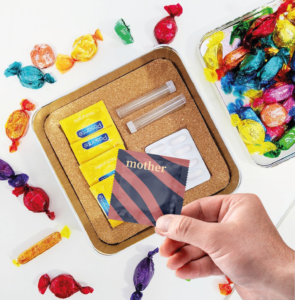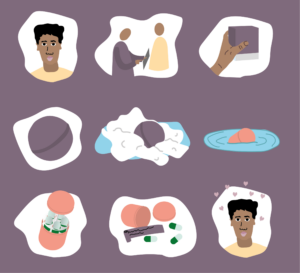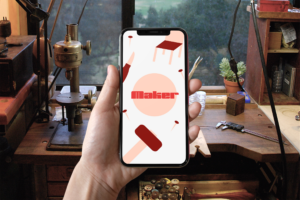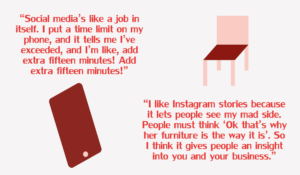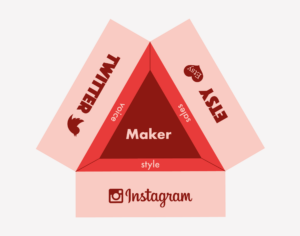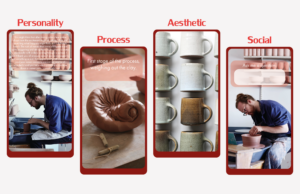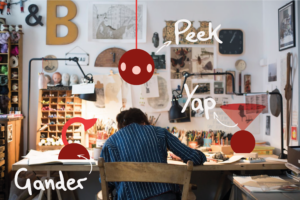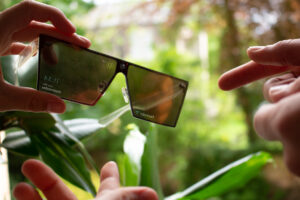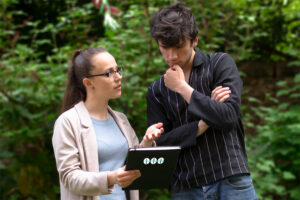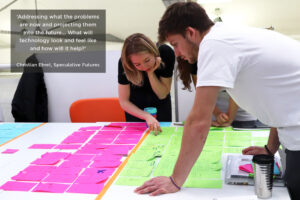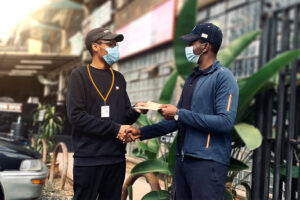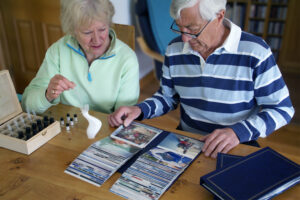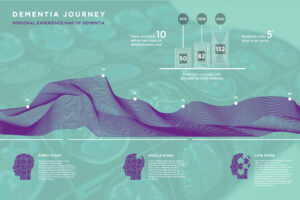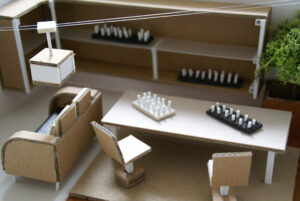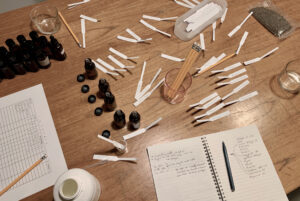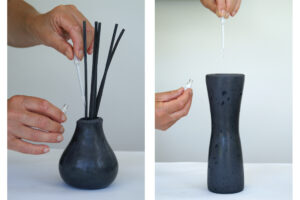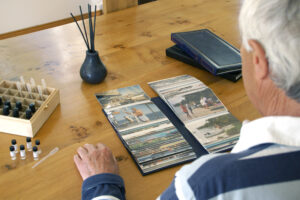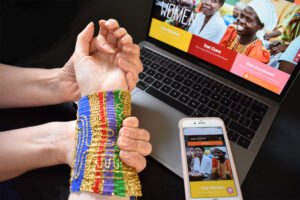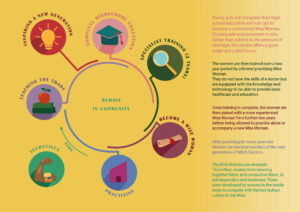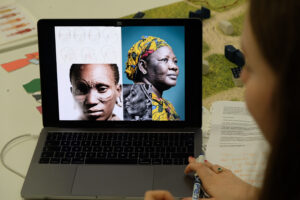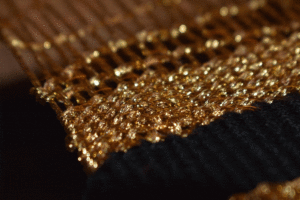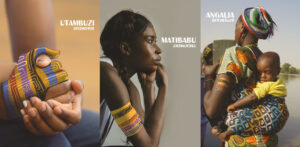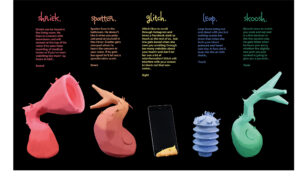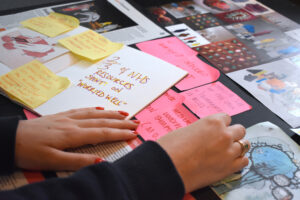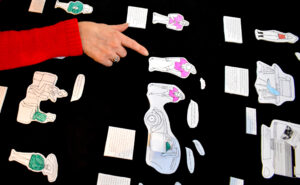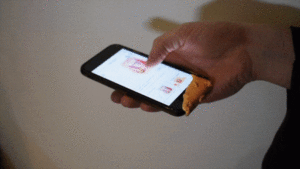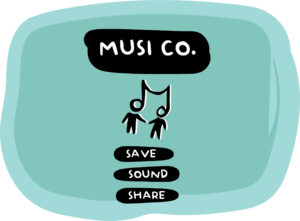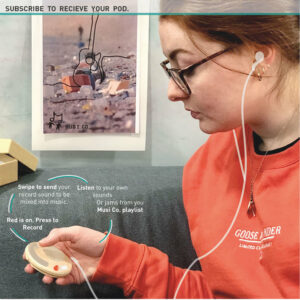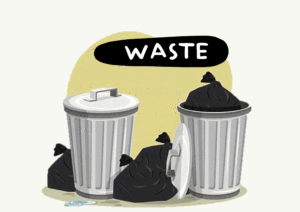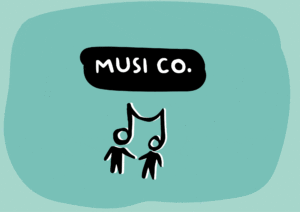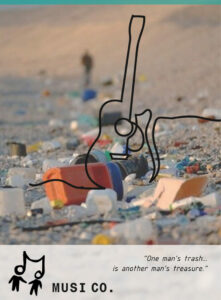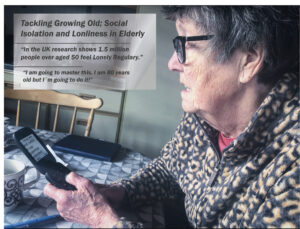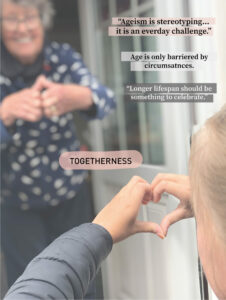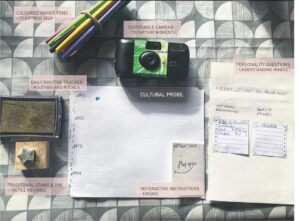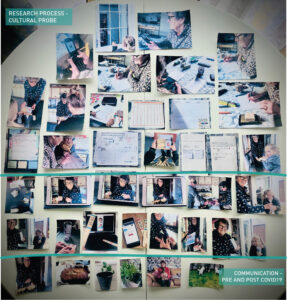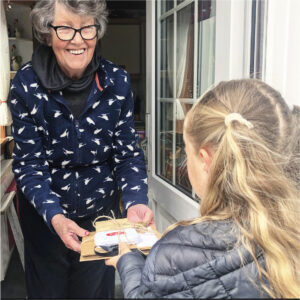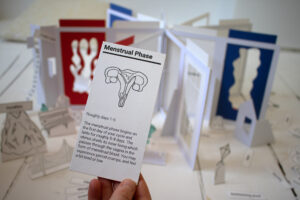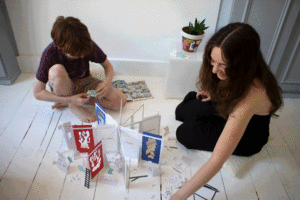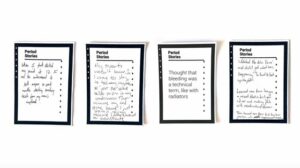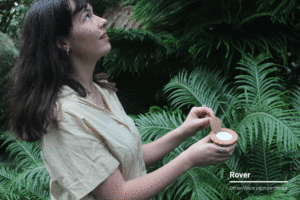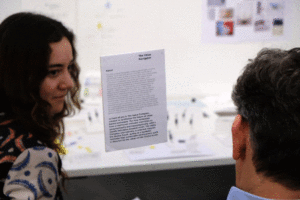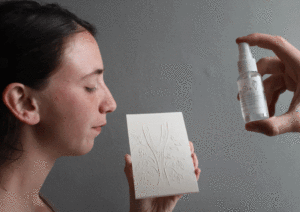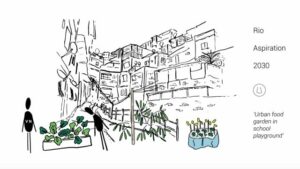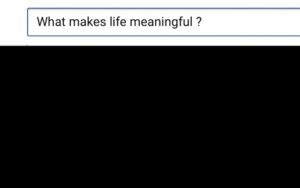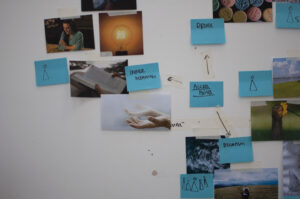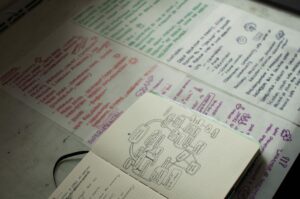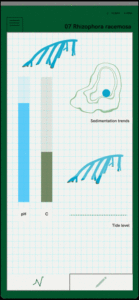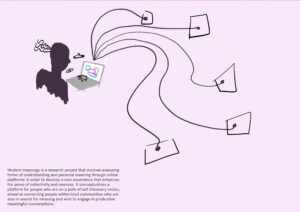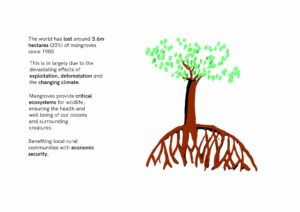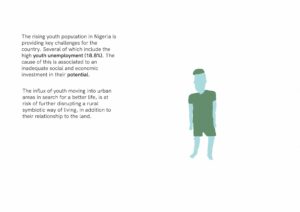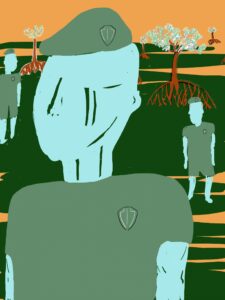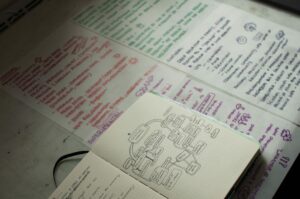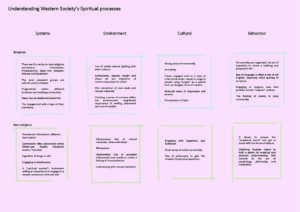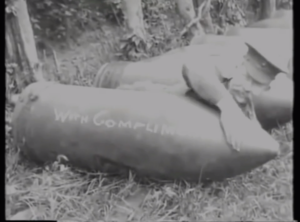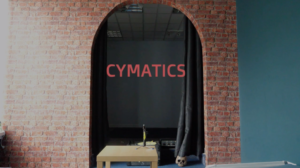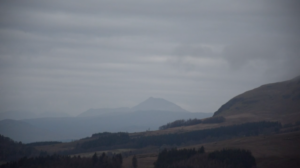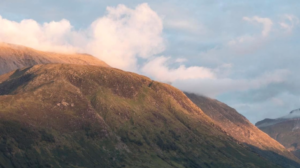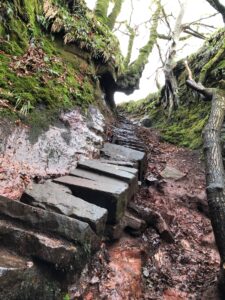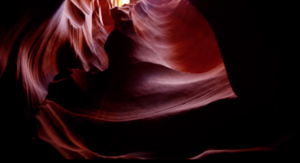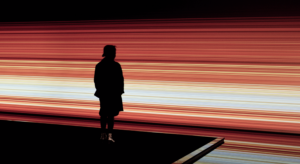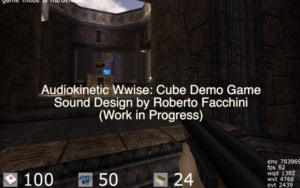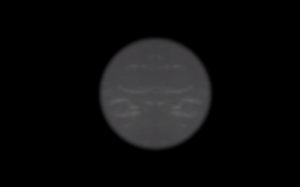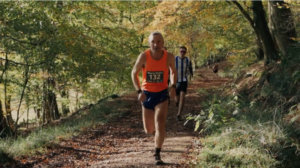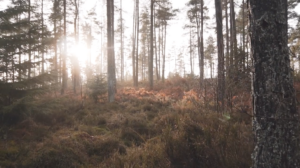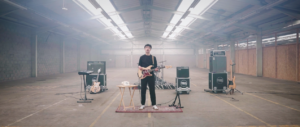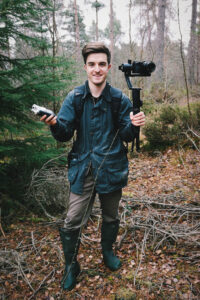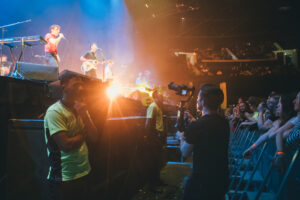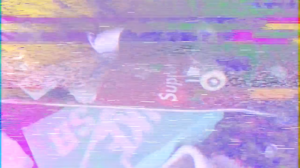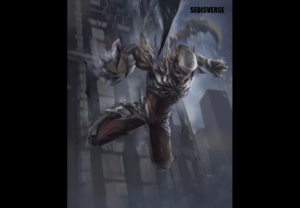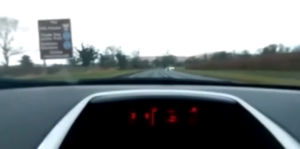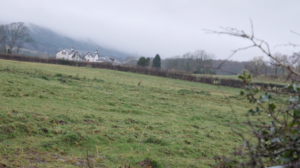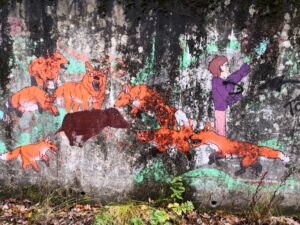Glasgow
I am delighted to welcome you to The Glasgow School of Art Graduate Showcase 2020. We hope you enjoy our creative response to mounting a physical degree show during the current pandemic. Our digital platform enables us to share the work of our hugely talented graduates at this important moment in their careers.
As a creative community we understand and value the significance of the physical public exhibition, and its importance to the individual practitioner and their audience. Once we are able to move beyond social distancing, the GSA is committed to assisting our graduates as they enter their creative careers, supporting them to develop physical exhibitions which showcase their work. Our support will manifest itself in sponsorship and access to exhibition spaces, and our dedicated team are developing a guidance framework for this next stage as I write. Glasgow as a city thrives on the quality and volume of its exhibition and cultural programming, it is essential that the GSA and its graduates continues to contribute to this going forward and we are committed to making this happen.
The work within this exciting digital showcase represents the culmination of a student’s time with us, their unique creative journeys and signals the start of their professional lives. You will notice as you scroll through the site exploring the work of our students, that a number of them have linked their work to the National Union of Students’ Pause or Pay campaign and a group of PGT students have chosen not to submit work at this time, the reasons for which are detailed within their personal statements. We hope that these students will in time submit work and the digital platform has been developed to allow this. All students can add new work as they complete it allowing them to share with you over the next 12 months the development of their practice as they transition from graduate to professional practitioner.
We invite you to join with us as we celebrate our students, view and engage with their work and reflect on the importance of creative people and creative education in complex and challenging times.
Penny Macbeth
Director, The Glasgow School of Art
Featured
Lisa Manastireanu
Fashion Design Sustainability and responsible design have always been at the back of my mind when designing. My project is centred around re-using and de-constructing pre-existing pieces to create something →
Featured
Arouge Salim
Textile Design – Embroidery. You can find out more about the students and the Showreel at www.gsafashionshow2021.com
Cross Section from Pier
Space Between Water.
Landscape Design
A series along the site, detailing how the land interacts with the water.
Rendered Site Plan
Extended Pier.
Perspective Performance Hall Section
Interior View of Balloch Performance Hall.
'Sea Life Through a Lense'
This image represents my fundamental design goal: how to frame the natural beauty of Balloch. I took my inspiration from those unfortunate sea creatures who are imprisoned in restrictive and oppressive fish tanks in a sea life sanctuary on the loch. Whilst they are so close to the outdoors they are actually prevented from thriving outside in their natural habitat. In human terms I wanted to create a more positive relationship between inside and outside where visitors felt safe and warm inside but were drawn to the views of the loch and nature outside.
The Site Found
1:1000 Site Plan exemplifying the linear relationship between the residential and performance hall venues; imitating the pre-existing railway of Balloch which, its final stop was at the tip of the pier. The progression of a boat from jetty to jetty via both buildings and a canopy shaded pathway on land, shows the multipurpose links and modes of transport available as ways to accommodate the users when moving around the site.
'Portamento'
Mammals and nature co-exist between the walls of the residential retreat, through vast glazing, an indoor / outdoor living experience and materiality and design elements. On arrival visitors will observe a hanging façade of carved natural wood. The flowing, rippled appearance of the wood connects to sound waves created by children inside to the lapping waves of the river made by Mother Nature outside.
INGREDIENTS
1:50 principles of building detailing and mirroring front elevation render
Mornings in the Nest
Portal on the Pier
This performance hall concept serves as the threshold between land and water and is celebrated when music is being played by the residents. The choice of a curving form was precisely designed to imitate the mountainous range in the backdrop as well as the formation of waves, which are surrounding the pier that grounds the hall.
cross-section river leven
axonometric site plan
entrance
1. Intro
2. Site Model
3. Retreat Centre Exterior
4. RC Floor Plans
5. RC Section
6. Presenting the Retreat Centre
7. Concert Hall
8. CH Floor Plans
9. CH Section
10. Presenting the Concert Hall
Section Through Practice and Performance Spaces
I took the ethos of empathetic design, sustainability, and fun into this featured work. This is a residential retreat for the musical charity Sistema Scotland. I focused on creating an environment that was safe and secure for the children but also allowing for autonomy and play. I explored the integration of playground design with music which resulted in a range of practice and performance spaces that changed in focus and formality.
Perspective View of Performance hall and Residential Retreat
Sketched Section Through Residential Building
This section shows the atrium space that connects all the residential rooms with a dynamic, multipurpose seating area. The section leads from the connection to nature with the park to the intimate relationship to the water.
Sketched Section Through Main Formal Performance Space
This section shows the key relation ships between the two public spaces created by the Performance hall. The walkable grass roof emphasises the existing viewpoint with roof lights scattered on top to entice people to peek down and explore the performance hall. A slightly more private square created by the water with the hall able to open to this square as well.
3_AXIS
Located in Balloch, Scotland, the residential retreat and performance hall will help children with a difficult family backgrounds reconnect with the nature and their surroundings. Seeking similarities between musical harmony, space and human body it is my intention to create a place of escape and contribute to childrens mental health through the interaction with my building, nature and music practice.
Site Plan 1_200
The site for the project is a cross point of three axis: Axis of journey, axis of escape and public/private axis. Laid out in an east-westerly direction, the building responds to its surroundings in a number of ways. The location of the buildings not only benefits from breathtaking views, but also is a part of environmental strategy. In order to achieve energy self-sufficiency, the project of a residential retreat is based on passive use of solar energy.
Floor plans of the Residential Retreat 1_200
The closer to the river edge the more private is the program of the residential retreat.
Perspective cross section of the residential retreat 1_50
The bridge in-between the two buildings is accessible from the sun space of the residential retreat creating the connection to the performance hall and practice rooms.
The Voids
The voids spread throughout the height and length of the building finished with a south facing roof lights act as light wells. The roof windows allow a flood of an unobstructed light that allow a natural light penetration far into the floor plan. The roof light enclosure, ceiling and some walls of the upper floors are painted white to strengthen the illumination by providing strong first reflections. The light reaches the timber panelling of the first and second floor and cast a warm glow throughout the bridges that lead children to their flats.
Flexible Comfort
The flexible system of the partition walls within the cloisters gives the opportunity for every kid to feel comfortable in the residence. The rooms are also designed in a way to provide enough space for the instrument practice.
The sun room
At the south part of communal areas, there is a large sunspace stretching across the south-west facade. It serves several functions from a pleasant place of botanical discoveries to a dreamlike meeting and circulation space. Moreover, it forms a buffer space able to capture heat during winter. The open floor plan allows flexibility and facilities the distribution of the warm air to the communal areas.
In-between
The performance building is conceived more as a pavilion in the park than a classic urban building, more like a roof protecting a public space. The polycarbonate skin allows the sun to penetrate the building, reaching the exposed rammed earth walls that surround the main event space. During winter the thermal mass walls absorb the passive solar energy and slowly release their heat into the interior of the event space reducing the heat demand. The skin of the building allows continuity between the structure and the park, without giving up a certain privacy for the activities that take place inside. Seen from outside, during the day, the translucent skin of the building appears sculptural and does not make the immediate visual communication between the interior and exterior possible; at night, this situation is reversed and the interior becomes perceptible from the outside.
To perform
The secondary structure of the roof consists of thin and deep LVL beams which bring a diffused sun light within the space the whole year round. The primary structure accommodates the lightening and sound equipment.
Proposed Location Plan 1:2500
Situated at the bottom of Balloch Pier, the new retreat offers an inclusive for all type of performance art. Surrounded by nature, this allows privacy, creating a peaceful environment to gain creativity - outdoor activity can occur.
Site Information
Thesis Investigation
Spatial Development
Ground Floor Plan
Long Section
Earlier Stage 4 Work
No Ownership Modes: Internal view of the architype R2++.
Four types of housing units were developed. R2++ is a Co-Housing unit on two levels which allows up to 6 double bedrooms.
No Ownership Modes: Layout of Achitypes R2++ and R1.
No Ownership Modes: Long section through Co-Housing and Co-Working components.
Each adult is allotted a Co-Working share. Renting the workspace may allow users to supplement their income during periods of economic difficulty. The proximity of the home to the workplace may improve the way of life of the users, with whole businesses being born through inhabitants working together.
No Ownership Modes: The scheme acts as a gateway to the new public space.
The thesis’ grow from each other and form part of a new social framework in both the private and public realm.
Vessel for Participatory Democracy: Detailed development of the vessel and associated structure.
The ground plane becomes one with the landscape.
Vessel for Participatory Democracy: Ground plan and landscape.
Vessel for Participatory Democracy: First floor plan.
Vessel for Participatory Democracy: Second floor plan.
The administrative offices to support the running of the participatory democracy.
Vessel for Participatory Democracy: Typical upper floor plan.
Vessel for Participatory Democracy: Imagined within the site.
Both schemes are situated in the heart of Glasgow’s oldest district, the Merchant City.
In the project I have chosen for the Degree Show we were given a brief asking to design a public building, consisting of a performance space of a certain spectators' capacity, accompanied by an additional programme of our choice. The site of this project is located on Candleriggs, within the Merchant City district in Glasgow. My proposal is a cultural centre, which consist of an amateur/experimental theatre, exhibition space, flexible workshop spaces which can be adapted for teaching art and small crafts that do not require heavy equippement, library and a top-floor cafe. The overarching idea that connects all the function is the exchange – of experiences, knowledge, skills, memories – through a variety of storytelling devices – performances, art – or act of “creating” in general – formal and informal conversation. Theatre space does not have traditional rows of seats, which are replaced with wide stair-seats, that can become parts of the stage if necessary; voids, present in the exhibition and library parts of the building, as well as mostly open – and if enclosed, then glazed – spaces, allow the different parts of the building to blend one into another. Wide stair-like structure is also used through the library floors, allowing to subtly differenciate between the space of the borrowing collection and places more private, where one can sit and rest, preferably with a book. Use of light and charred wood as external and internal cladding creates a feeling of depth – on the outside, with charred wood - that draws a passer by into itself, together with a frosted glass screen that allows one to see the sillhouetes of the performers preparing for the play; light wood finish used within the interiors provides a warm, welcoming atmosphere and counteracts the large volumes of the building by its organic qualities; big factory-like windows allow a glimpse into the outside world, and vice versa – users of the building can observe the street while feeling safely enclosed. [a fragment of “There's no sea...” mural by Michal 'Sepe' Wrega has been used in the 1:50 section drawing]
Mark Roderik
Labour and Domestic
In this co-housing, people can become each other’s traditional meaning family in an unconventional way and decrease spend. They can work at the co-working area or elsewhere by leaving their children at the nursery with qualified older people.Older people can spend the day with their own age or have fun with children. Labour and family are in their own self, but not isolated anymore.
Domestic in Labour
From ground floor to second floor, these areas work as transition area.It brings labour to the domestic and domestic to labour.
Section AA'(1:200)
Combining the three different unit types together, it can helps to create many sharing/private social areas in between in order to work as social condensers.
Seventh Floor Plan(1:100)
Three unit types have been developed. Unit A is th unit type that designed for single parent with children only. Unit B is the type for elderly people only. Unit C is the only mix living unit type in this building.
Tectonic(Young and Elderly center)
1:50 cross section for Young and elderly center with a classical theatre
Multigenerational Growth
The Single Demographic City Though the city centre is often rich in cultural diversity, it often lacks such richness in terms of age demographic. The continuous movement of families and the elderly to the suburbs has left a shallow demographic dominated by students and young professionals. In the current Urban planning process, it is clear that there is a major lack of consideration for such groups, forcing them to move out with the centre in order to fulfil their housing needs. Urban Village: A Community Model By applying village typologies to the merchant city, it is hoped that the demographic and richness of village community can be manifested on the site. Through the integration of fundamental community spaces it is hoped that the site will act a whole and inclusive community which scales down the current city into a more tangible environment. People, Experience, Learn, Grow The following project focuses on providing multi-generational homes for vulnerable individuals, pushing for a close knit relationship between families, the elderly and young singles. By redefining the classic model of “your home and your two neighbours” it helps to establish those close knit relationships that would naturally develop over time in a suburban environment, in an urban environment . Not only does the project aim to tackle current financial issue’s faced by individuals when trying to buy property in the city, the Cell model provides a family dynamic which aims to support a shared domestic labour. In the project, daily tasks are deigned to be split amongst inhabitants, forcing strong relationships to be formed. Where the young individual can cook meals for the elderly in return for wisdom, the elderly may babysit while the parents are at work in return for help with daily tasks and parents can provide useful life skills for young individuals, helping them on their way in life. Not only does this alleviate rising loneliness but provides an environment where individuals can live, teach, learn and grow as individuals together.
Urban block
We propose to arrange the different departments of a school around an urban block within the Merchant City and for it to be open for public use. The school is open to residents and wider city habitants, offering access to education and providing public amenities while being fully integrated into the city fabric.
Trongate facade
Typology section
The design uses a range of typologies and stacks them on section to create homes for varying types of users while sharing communal spaces in the form of a courtyard and roof terrace.
THE GALLERY OF WASTEWATER
INVISIBLE INFRASTRUCTURE
CONSUMPTION OF WATER
The diagram brakes down all forms of waste produced in Flanders. It separates what is reused and recycled with arrows facing down and what is incinerated and put into landfills with arrows facing up. From this diagram it is obvious how much waster we use compared to all other commodities.
PAST INDUSTRIAL PARADIGMS
The proposal is situated in Stadspark in the center of Antwerp. This site is the remanence of the old city wall and moat, which protected Antwerp and is where the cities excrement was dumped. This is just one of many post-industrial sites which are scattered around the city, each was elemental in the cities development but have now all been, or are planning to be, turned into city parks. By cosmetically beautifying over these sites, the city is denying these areas of their past. The thesis proposes this park be returned to its natural state of a waste landscape.
PLAN AND SECTION
WASTE TOURISM
PRODUCTS OF VALUE
UNDERSTANDING THE COLLECTIVE
A WASTE LANDSCAPE
Air Filter Tower at Roosevelt Square
How the architecture contribute in managing air pollution on urban heritage and sustainably integrating into community?
Master plan of the old Spanish walls
The Leien are a series of streets that largely follow the route of the Spanish fortification walls as it was constructed in the 16th century. In the modern days, the entire road on Leien has become a chaotic distribution line of trams, car and buses, neglecting pedestrians and cyclists. This complicated 60 meters wide traffic boulevard along the Leien has formed a huge traffic barrier and becomes one of the main contributors to the air pollution.
Site Models
Diagrams
Diagrams
Roosevelt Square Site Plan
Roosevelt Square Lower Ground Plan
The Oasis of Old Walls
The architecture in this scheme functions as air purifier to clean the air. The historical Spanish wall now becomes part of the ecosystem which turns into urban attractions for the people. In addition, the traffics will be reduced and pushed to one side of the boulevard. The Leien and the old walls are both meaningful to the people and the city. How to promote the sustainable design into people everyday life to benefit community instead of replacing historical site by motorway? The integration of old walls to the new public space brings a greater sense of openness and accessibility to the old fortification, reflect the history of the site, whilst proposing new community spaces socially and environmentally.
The Oasis of Old Walls
Air Filter Towers at the Leien
Tower Axonometric
Tower Plans
Structural Models
Sustainable Design
Oslo Trienale Live Build - Degrowth
The Plant Power! project looks at applications for nature based solutions to generating heat within an urban setting. As part of the Oslo Triennale. Being Tectonic with Public Works hosted a School for Civic Action masterclass to build a compost heater. This will act as a test bed to generate knowlegde which will then be implemented within the projects of the partners involved. The compostor will be in the garden of the museum creating a heated public space for visitors to embrace plant power! as a natural alternative to fossil based space heating.
Plant Power - A Compost Bioreactor
Our team designed a cylinder shaped container to maximise the efficiency of the compost process. The concept was to encourage engagement with members of the public and tease out curiosity with steps leading you ontop of the compost pile to a public space and viewing platform. The design was adjusted during construction, this was a team decision influenced by time, resources and skillsets.
An Enduring Architecture
Development Model 1:1000
Decentralising the City
Antwerp's Civic Framework
Antwerp City Plan
Study Models
Urban Repair
Approach
Civic Courtyard
Circulation
Elevation, Section AA
Infrastructure as performance
Concept Collage
Entrance Elevation
Elevated View
Facade View
Site Plan
Layered Facade
Facade at Night
Integration of Services
An Architecture of Active Nihilism
The thesis scheme seeks to architecturally explore contemporary societal nihilism, beginning with a deep research period drawing from a breadth of philosophers, artists, and architects. The prime endeavour of the work is to act as a proposition upon societal relationships with death and being, and present a richly programmed scheme to conveying the arguments. This visualisation presents a gallery scene in which Bruegel’s ‘Dulle Griet’ steals from the gates of hell upon a vista of the decaying refineries of petroleum conglomerates past and present.
Site: Petroleum Zuid
Sitting 2.5km south of Antwerp’s old town, on the East bank of the Scheldt, Petroleum Zuid exists as terrain-vague, an overgrown relic of industry past. A thriving petrochemical in the early 1900’s, it is the oldest petroleum port in Belgium, and both the largest in Europe and second-largest in the world at its zenith. Long declined, with just a handful of petroleum companies remaining, the area straddles a unique landscape which affords key aspects and axes to the opposite bank of the Scheldt, and connection to central Antwerp.
Contemporary Passive Nihilism
Just 100 companies produce 71% off all greenhouse gas emissions, and pertinently lobby to ensure the undermining of real climate progress. Similarly, within the realms of technology, we are within the grips of private interest, our virtual presence bought, sold, exploited and entrenched through a socio-psycho cultural dependence, even in death. Technology’s ability for good is kept an arm’s length away, behind an ever-receding horizon of exponential advancement and capital. What’s the point?
Toward Active Nihilism
Expanding Nietzsche’s notions of passive and active nihilism, the argument is that we are societally entrenched within a state of ontological dysphoria. We innately struggle with the abstract finality of death: inevitably and infinitely us, and all, will eventually cease to exist. Society’s artifices of self-soothing, of death denialism, lead us to deeper entrenched passive nihilism, thus unable to globally contemplate the urgency of impending climate extinction. Thus, the programme seeks to act as memento mori, while exploring the ambivalence of meaning in a meaningless landscape of active nihilism, and the cathartic liberation of awakened sensuousness within it.
Contamination and Remediation
Historical leaking of underground pipes on-site resulted in severe contamination of the site’s soil and groundwater. An in-depth technology study was undertaken to examine the nature of the pollution and ascertain the best in-situ remediation strategies. Both bio and electrokinetic remediation are employed, however holistic phytoremediation through trees acts as the primary strategy. Through this method, remediation is effective, but slow, presenting a poetic allegory of the time required to remedy versus the nihilistic notion of time running out. Urgent, though perhaps futile while still in the grip of passive nihilism.
First Floor Plan
The scheme attempts to work within the natural geometry of the site, by carving a series of distinct axes, which themselves intersect with both existing fields and a large data repository. The data repository programme acts as a monumental memento mori, storing the online presences, or ‘virtual corpses,’ of the deceased, and preventing their potential exhumation; its form unapologetically divides the site, enclosing the petrochemical plants in counterpoint to the vast remediation field.
Orthographic Projection
Pulling key elements apart within the scheme, this projection assists in reading the individual programmatic components, their formal presence, and relationship with the scheme whole. The museum and bathing programme exist nested within the data centre and axes of the wider site, weaving and subsuming before a final sensuous elation in the remediation field. The crematorium acts as subtle and sensitive benign memento mori, a more considered reminder of death, in counterpoint to the data repository’s employment of raw scale.
Plan and Section (Excerpt)
Scale is a key tool employed throughout to express the monumentality of death spatially. This section shows a key connection within the bathing programme, which draws one along the sheer height of the data repository toward the more human and tactile scale of the bathing wings.
Thermal Baths via Data Repository
The perpendicular route to the connection shown within the previous section, it acts a clear and striking expression of active nihilism and the truth of death. One strides on in its face, finding freedom in its nothingness, toward elation and liberation.
Thermal Bathing
Active nihilism is relished in the absurd embrace of sensuous experience. An introverted awakening within extroverted and carnal public programme. The waste heat from both the data-repository and crematorium warm the pools and saunas; one literally bathes in death. Now awoken in active nihilism and liberated by its acceptance of inevitable extinction, we are charged with the ability to fight our existential woes, a glass of champagne in-hand.
The Agonistic Assembly
The thesis is set in 2029 Antwerp, whereby following the results of the general election, the New Flemish Alliance (N-VA) break the imposed cordon sanitaire and form an alliance with the far-right Vlaams Belang party. Together they initiate their common mandate for the establishment of a newly independent nation of Flanders. The thesis proposal is for the Flemish National Assembly, a public institution that integrates governmental ministers, NGOs, activists, and the wider public within one building. Several conflictual relationships will be enabled between diverse demographics through the intersection of high/low culture political and public programmes. The proposal seeks to establish an agonistic architectural language through the creation of a contemporary 'Polis', defined by professor Eric Swyngedouw as "the site for public encounter, democratic negotiation and radical dissent".
Insurgent Polis
Belgian Archipelago
I propose a reading of Belgium as an Archipelago of politically and geographically distinct islands. The federal government is formed from a complex arrangement of language based communities, cultural regions, and local provinces, that are fundamentally divided between the Capitalist and Socialist camps of Flanders and Wallonia. Geographically, Belgium is a low-lying country divided into 3 distinct regions: the coastal plains in the North-West, the low-lying polders in the centre and the Ardennes Plateau in the South. Similarly, Antwerp can be seen as a pluralistic composition of discrete islands, held in a dialogue through the urbanisation that connects them.
Site
The proposition is situated around Antwerp's Bonaparte dock in Eilandje, at the threshold of the old medieval city. The unique urban room created by the old docks contains the features of the wider Belgian morphology, as represented by the six historic artworks. The thesis accentuates each feature through a landscape proposal that recreates the three distinct geographical regions of Belgium. The assembly creates an agonistic relationship with each of these constituent parts through a rotated grid that unapologetically interrupts the city whilst simultaneously allowing it to flow through the heart of the scheme.
Flemish National Assembly
The built proposal seeks to express the conflict inherent in pluralism through the intersection of three formal political objects, a public field and the MPs offices. The objects house the debate chamber, the library and the committee rooms, and together they contain the lobby - the space of conflict and encounter between the MP's, activists, lobbyists and public. Each object has a formal masonry crust, containing the political programme, and a lightweight timber nest, which hosts the space of public conflict. The MPs offices are contained within a new city block, that reads as part of Antwerp’s grain. Suspended above is the field - a three-dimensional ruin that contains the public programme of the assembly (studios, broadcasting suite, workshops, press offices, and exhibition halls). This surrounds the government, creating a constant tension between political and public life, whilst remaining open to the city.
Tectonic Pluralism
The detailed design of the assembly is driven by the principle of Tectonic Pluralism, which is defined as the dialogue between discrete design languages. The assembly is composed of masonry crusts, timber nests, a 9x9m concrete frame, CLT boxes, and steel servicing and walkways. Each distinct space follows its own material logic, resulting in duplicated structures and enclosures. The threshold between each enclosure becomes a terrain vague, a liminal space in which the public and political can engage in agonistic encounters.
Parliamentary Lobby Section
The Lobby & The Field
Testing
Process
The work exhibited thus far was completed in March for the purposes of an interim review, and is therefore not final. The thesis has since developed in several key ways as illustrated in the bottom row of sketches. Programmatically the changes densify the scheme, by introducing four political objects (library, committee rooms, broadcasting suite, ministers officers), moving the debate chamber into the lobby and surrounding the heart with more playful and engaging public programmes. Architecturally the proposal has become considerably more open and loose, by breaking down each object into a collection of distinct elements. The work is ongoing, and the current intention is to complete the thesis in July. Any developments towards the final project will be recorded and published on my upcoming website.
Isometric View
King Leopold II of Belgium in the Congo
Misinformation in Modern Politics
Key Strategies
The Approach
Short Section
Urban Forum
Interstitial Spaces
Experts' Debate Space
The Archive
Unfinished Saltcoats Labour Social Club Documentary
Sequoias are dying!
A short documentary film about the dying Sequoia tree.
It Has Gotten Weird Out Here
A postcard series.
Urban Roots Logo Development
This is just a few of the logos that were developed to get to the final logo used for the identity.
Urban Roots Leaflets
These are some examples of finished leaflets incorporating the whole identity.
Children's book WIP
A few spreads from a commission I am currently working on in collaboration with an illustrator.
Pause or Pause
As a graduating student at the Glasgow School of Art, I would like to state my support for the Pause or Pay Campaign.
Atlanta Bonus Features Site
User interface design for a conceptual site that works like a DVD bonus features towards online streaming site for the television show Atlanta by Donald Glover. Pulling out references from the television show to create content.
Life After GSA 2019 Graphic Graduate Replies
A publication made up of a compilation of uniformed question and answer email from GSA Communication Design graduates. Answers were aim to provide helpful advices to graduating students. The brief requires the usage of 2 tones of colour and to pair the black text I selected blue to evoke reli- ability and authority . Other things to consider was the density, font pair- ing, layout system and restriction as well as the potential mass production of the booklet hence the spiral bound.
Call Me Maybe Oh Canada
An experimental perfect bounded book containing riso printed geomet- ric illustration of popular songs using a program called songsim. Songs varies from pop star Carly Rae Jepsen's hit Call Me Maybe to the Canadian national anthem Oh Canada hence the title of the book. The cover is typeset and printed in the letterpress.
Serendipity
Serendipity comes in waves, unplanned and uncontrollable. Yet, it is serendipitous moments that connects mankind to the unknown, developing a certain artistic freedom as man starts to make nature his playground
Price: £100
This item is for sale, please contact for more information.
Serendipity
Serendipity comes in waves, unplanned and uncontrollable. Yet, it is serendipitous moments that connects mankind to the unknown, developing a certain artistic freedom as man starts to make nature his playground
Price: £100
This item is for sale, please contact for more information.
Serendipity
Serendipity comes in waves, unplanned and uncontrollable. Yet, it is serendipitous moments that connects mankind to the unknown, developing a certain artistic freedom as man starts to make nature his playground
Price: £100
This item is for sale, please contact for more information.
Serendipity
Serendipity comes in waves, unplanned and uncontrollable. Yet, it is serendipitous moments that connects mankind to the unknown, developing a certain artistic freedom as man starts to make nature his playground
Price: £100
This item is for sale, please contact for more information.
Land
An ongoing exploration of the environments that surround us
Price: £120
This item is for sale, please contact for more information.
Land
An ongoing exploration of the environments that surround us
Price: £120
This item is for sale, please contact for more information.
Limits
Capturing and documenting stories of those who push the limits of the human body
Price: £50
This item is for sale, please contact for more information.
Limits
Capturing and documenting stories of those who push the limits of the human body
Price: £50
This item is for sale, please contact for more information.
Limits
Capturing and documenting stories of those who push the limits of the human body
Price: £50
This item is for sale, please contact for more information.
Ongoing series of still images part of a documentary titled '60, Seconds out',examining the semiotic structures of a boxing club as environment and of boxing as practice involving the body. Focusing on details such as sweat, fibres and pores, this photographic series aims to convey an intimate and sensory experience of boxing. The images, deliberately generated ‘in-between’ rounds lasting exactly 60 seconds, records the unique effects of boxing training on the individual as a suspension of time. From close-up portraits to contextualising environmental shots, ‘60, Seconds Out’ intends to offer a visual access into the Language of a boxing club. I consider this project as being in collaboration with the members of the Kelvin Amateur Boxing Club in Govanhill, Glasgow, whom kindly welcomed me.
Robbie after sparring
Andy
Bahar
BFK Rebrand
The Hungarian KKBK Inc. (Centre for Major Governmental Insverstments) rebranded itself to be the Budapest Innovation Centre (BFK). The corporation handles urban planning, real estate and sports planning related tasks in the capital. With the new name came a brand new logo and identity. This work is a proposed idea for the rebrand tender.
Perfect Citizen
'Perfect Citizen' is a satirical work, addressing the idea of a social credit system. In today’s society information is the primary currency. Our every move is digitised and converted into data. The rise of social media only served to significantly accelerate these trends. Centralised digital platforms enable easier tracking, where 'gamification' builds into surveillance. The idea of a social credit system fosters a public opinion environment, leading to a loss of agency and public shaming. In this project I explore different scenarios. I look at whether this phenomenon potentiates a culture of honesty and safety, or a society of deceit through representation and conformity. What happens to the maverick?
HISTORICAL TRAUMA / 15 400 PIECES
Untitled
Untitled
Untitled
Untitled
Untitled
Untitled
Untitled
PAUSE OR PAY
Glasgow 1980
Videos I put together for 'Work in Progress' exhibition
Research
Initial research behind project looking at poems and old family photo albums
Look 1
Cropped suit jacket inspired by photographs of my mum in the 80s with a white nylon romper.
Look 2
Distorted jacket inspired by photograph of my Grandad with exaggerated high waisted tailored trousers.
Look 3
Exaggerated tracksuit jacket with cut out details exposing yellow nylon lining. Inspired by photographs of my older sisters.
Look 4
Ruched sleeve rain jacket with scarf detail inspired by a Glaswegian football player and the fans scarves.
Look 5
Tracksuit with 70s collar and exposed print detail and distorted flare trousers.
Look 6
Pinstripe shirt with 70s collar and ruched waistband inspired by photographs of my parents in the 70s and 80s.
Line Up
Final Line-up featuring Raymond Depardon's photographs of Glasgow in 1980
Accessories Research
Accessories project inspired by the headscarves and shopping bags seen in photographs of old women in the 80s.
BIKE FRAME BAG
The COVID-19 situation is a crisis and challenge effecting the whole of us. Trough this pandemic creatives had to find new ways of making, marketing and distributing products. These have to provide safety and purpose. Isabell put her own gtraduation collection on hold to help make medical scrubs during the lockdown period. This also led to exploring smaller projects like these commuter bags to provide a product with a deeper meaning and function. Sustainablitly is a key element in Isabells designs. The prototype bags were made out of left over calico, retiered yoga matt, retiered tent fabric and secondhand zips.
BIKE FRAME BAG-
BIKE FRAME BAG
Fashion Collection: Sherpa and the Altidude
Looking at my previous research from a new angle led to a curiosity for the Sherpas in the Himalayas. I want to explore the impact of the commercialization of Mount Everest on the Sherpas, their families and their environment. Mass excursions force the mountain to drown in garbage and their locals to suffer from the impact on their water and ecosystem. But in the same moment there’s the need for heavy tourism to keep their economy going. These conditions put extra danger and responsibilities on the Sherpas. I want to express how a change in clothing and functional outerwear provides the Sherpas with more protection, but conversely increases accessibility to inexperienced or amateur mountaineers with life-saving clothing/ gear. This in turn feeds into the commercialization of high-altitude mountaineering. (Altidude aka. privileged adventure tourist driven by his amateur financial impetus to be one of the best mountaineers in a once in a life time excursion.)
Fashion Collection: Sherpa and the Altidude
Fashion Collection: Sherpa and the Altidude
The Sherpa and the Altidude
The Sherpa and the Altidude
The Sherpa and the Altidude
"Preparation"
Hosting Focus Groups
Through hosting creative activity-based workshops, I have been collecting honest, first-hand experiences from young people in relation to their mental health. Using the information gathered from these activities and discussions I determined 3 key themes; medication, barriers to accessing support and stigma. Using these themes, I have been developing a series of works.
Medication
From discussions that took place during the focus groups, it became evident that young people consider mental health support and care to feel very clinical. In particular, participants commented on feeling ill-informed, anxious and confused about the use and role of medication on their treatment. This work is a visual interpretation of these discussions. Using machine learning to generate fictional medication names, I have been designing and assembling my own medication packaging. My intention is for this packaging to be convincing and mistaken for real prescription medications, thus highlighting how trivial and alien medication names, and the role of such medications, can feel to a young person.
Barriers to Accessing Support
For this study I have been working with one young person to develop an augmented reality application that communicates some of the barriers they have encountered when accessing support for their mental health. The main challenge this young person faced was consistently relying on telephone communication to access such services – something they found impossible due to the nature of their anxiety. Using the AR application, audio and animations are activated when visual triggers are detected. These visual triggers are fictional correspondence inspired by the real correspondence the young person received - one of the most significant being a self-referral card. While a self-referral system might seem practical for service delivery, and can even seem insignificant to others, it can be a huge barrier to some users who need to access the service. In this work I hope to communicate the emotional implications of such systems and how they can be counter-productive for young people in the treatment of mental ill-health.
Stigma
Stigma is still a significant barrier when it comes to young people talking openly about their mental health. When a young person experiences stigma they can begin to feel their mental health condition defines who they are. Using the Tobii eye-tracker and Processing I have been developing an interactive installation that features video interviews of three young people talking about their experiences of mental ill-health and associated stigma. These video interviews are initially distorted with stigmatising phrases the young person has experienced. When the eye-tracker detects that someone is gazing at the display the video becomes less distorted – and the user begins to ‘see’ the person beneath the stigma and hear their story.
Wire Experiment
Wire Experiment
Proposed Sculpture (untitled)
Genesis, Neuromancer, Gamer Theory - framed prints
Genesis - detail
Sixty Minutes in Minecraft - detail
Sixty Minutes in Minecraft - framed drawings
Objects in Liminal Space
Documentation of design research in liminal space.
Sculpture of the Machine
Digital computer aided design model of 3D printed sculpture.
Portrait of the Machine 1
Machine learning algorithm image output from self-portrait sequence.
Portrait of the Machine 2
Machine learning algorithm image output from self-portrait sequence.
Uncanny Artifact
Digital computer aided design model of 3D printed sculpture.
Teapot Head
Digital computer aided design model of 3D printed sculpture.
Age of Experience
EEG-VR wearing concept / Illustrator
Age of Experience
Virtual garden illustration / Illustrator
Age of Experience
Virtual garden illustration / pencil, colour pencil
Age of Experience
Virtual garden / Unity
Age of Experience
Brainwaves / Muse lab
Michael (desktop computer) displaying the Chrome extension that replaces technology related words such as computer, machine, CPU etc. with their humanised counterparts.
Screenshot of the same extension replacing words on a webpage.
Sample of the extension's code done in Atom.
Screenshot of extension working on webpage.
Processing sketch that causes a popup to appear on screen whenever there is an attempt to close the window.
Beyond Flatpack Culture: Towards a New Ecology of Modularity
Machine learning/trained print
Beyond Flatpack Culture: Towards a New Ecology of Modularity
Beyond Flatpack Culture: Towards a New Ecology of Modularity
Beyond Flatpack Culture: Towards a New Ecology of Modularity
Beyond Flatpack Culture: Towards a New Ecology of Modularity
Beyond Flatpack Culture: Towards a New Ecology of Modularity
3D printed models
Rust
When we take images using our phones we typically take them in bursts and select the best ones for social media. This is explored in Rust where taking a memorable day from her own phone she has used machine learning to generate artificial beach imagery to imitate existing memories which she has planted within the grid of a camera roll. As we scroll through our camera roll would we notice that false images had been placed amongst the burst? What else could be suggested to us?
Jamais Vu
In Jamais Vu images are generated based on social media status updates which others have publicly reposted and shared through memory apps. These images were then framed and staged within her own home as sentimental photographs would be. The frames are placed above artificial flowers next to a family clock which has stopped working. While the scene may seem ordinary in passing, on closer inspection may appear odd.
Experimentation Documentation
Development Sketch
(t)ether work in progress
Mockups
Mockups of Final Outcome
Hand Sketches
Valentine
From 'Conversation' series
Ankita
From 'Conversation' series
'Conversation' series
This series is a study of gestures taken from a set of interviews.
Hand Held
Looking through history, people have labelled different hand positions and movements, through symbolism within cultures and specific moments in time. Furthermore, how people have progressively shifted their hand behaviours through the age of personal devices. Our hands have adapted physically to its new demands. Taking selfies and holding a portable device in your hand has become the new norm and what body language culture has spawned from this era.
LeftLeft
A cast of a left hand which has been 3D modelled and then laser cut
“What do you think about ghosts?”- 1
series is the study of people's hand movements when responding to the question “What do you think about ghosts?”.
“What do you think about ghosts?”- 2
This series is the study of people's hand movements when responding to the question “What do you think about ghosts?”.-
Patterns of Play-
Print of a match between Rafael Nadal and Rodger Federer in the 2008 Monte Carlos final.
Patterns of Play Documentation video
Video documentation of how the artist created his work, exploring the technology and thinking that went in to finalising the piece
Patterns of Play
Still image of the prints on display
Patterns of Play
Image of how the prints compare to live tennis matches
Motion Capture Tennis
A motion capture experiment of a point between Rafael Nadal and Juan Martín del Potro in the Wimbledon 2018 Quater-Final
What do we need for rest?
visual collage
In dream
visual collage
Reception
Male's chaging room
Women's bathroom
view from the middle on the 1st floor
Children pool with relaxing area
floor plan with iso view
Project Concept Poster
Concept poster for The Wheatsheaf Hotel and Cook School, which expresses brand ethos and materiality.
Axonometric Drawing
An axonometric drawing of The Wheatsheaf, expressing the zoning and spatial arrangement of key spaces.
Visual of Corridor with Void
View from the second floor corridor, looking down through the void onto the entrance and cook school.
Materiality of Key Spaces
Detailing of the cook school, reception and corridor spaces.
Nithsdale Mission Hall
My community project utilises the former Nithsdale Mission Hall in the Strathbungo/Govanhill area of Glasgow’s Southside. Designed by Alexander Skirving and built for the Queen's Park United Presbyterian Church in 1887-88, it felt like an appropriate choice of site given its history as a supportive community space. However, I also fell in love with the Greek Thomson style architectural details on the building’s exterior façade, as well as the site materiality, which provided lots of exciting inspiration throughout my design development process and ultimately greatly influenced my final design concept. As a result of a fire, the roof and interior were completely destroyed, however this worked to my creative advantage providing me with an empty shell to design within.
Cross section A-A
Sòlas, meaning comfort and happiness in Scots Gaelic, is a space bringing new Scots and the local community together to support one another and celebrate multiculturalism through food, learning and social exchange. The space offers a range of services including English lessons, counselling, a crèche, a multilingual library, book group, study areas, a contemplation space, and a cafe with pop-up multicultural dinners. The structural layout has been deliberately kept open to allow visitors to see the range of activities happening, and navigate around the space with ease. In doing so, I wanted to create a “buzz” within the space in order to create a comfortable, convivial atmosphere.
The Cafe and Welcome Area
Entering the space from street level, you will arrive in the cafe and welcome area. The cafe servery acts as an informal welcome desk to help visitors navigate the space and is therefore strategically placed close to the entrance. The familiar cafe scene should aim to reduce anxieties for new visitors. I have designed several different seating areas to adapt to different user needs and requirements. The curved wooden balustrade aims to soften the space, while the natural tones give a welcoming warmth to the interior, along with the addition of plants and flowers. There are subtle references to the site materiality through the servery design and the wooden balustrade.
The Vertical Multilingual Library
The vertical multilingual library is a central feature in my design, as it is seen from every space in the building. This helps ease navigation through the building, acting as a familiar reference point. I wanted to create an innovative and exciting space to stimulate learning and encourage cultural exchange, with a space designed on the upper level for the book group to meet. The curved stepped seating acts as an informal reading space as well as a pop up event space for talks or meetings. The circular apertures in the library structure are inspired by Skirving’s original trusses (destroyed in 2005 fire), which I have reinstated in my design.
The Contemplation Nook
I designed this contemplation nook where visitors can escape for a moment of quiet contemplation, if feeling overwhelmed. This is a particularly important space in the design for the more vulnerable users of the space who may have just arrived in Glasgow and be feeling anxious. The natural, muted colour palette aims to create a calming, tranquil environment, as does the natural light flooding into the space on either side from the apertures above (see floor plan). Cushions and blankets are also provided for an added layer of comfort.
Cross Section B-B
This section illustrates the various level changes in my design, which subtly differentiate between different zones and activities. Here you can see the ‘floating’ upper floor supported on either side by steel beams, which allowed me to create unique apertures and achieve an interesting relationship between both floors (see floorplans for further clarity). This design feature enables light and sound to flow more naturally through the building, as well as enriching user experience. The wooden wall panelling directly references Skirving’s original drawings as does the ramp which responds to the original sloped floor of the gospel hall.
The Rooftop Dining Space
The rooftop dining space is intended for pop-up community dinners where multiculturalism is celebrated over food and social exchange. It can also act as a private meeting space or extension to the cafe when not in use. This space is an upper extension to the outbuilding on site, which I have connected to the main building via a glazed corridor. The glass roof, with velux windows, allows light to flood in. A variety of plants and flowers have been added to create a colourful, welcoming space.
The Crèche
The crèche is located in the outbuilding, which I converted for this use as a means of noise separation from the main building, as well as for direct access to the outdoor space where the children can play. The design is playful, colourful and inviting with two large bookshelves for story books, games and toys. Not only is this visually pleasing for the young children but it is great for storage. The cut-outs in the bookcase take inspiration from the circular pattern formations found in the roof trusses, and are intended as fun additions to the space for the children to climb through or sit in.
Brickwork Pattern Studies
The analysis of the exterior building’s brickwork formations formed an integral part of my project, informing the development of a series of patterns based on the shapes, colours and textures. These patterns went on to inform elements of my final design including the cafe servery tiling design, the wooden balustrade, aspects of the colour scheme as well as textile designs for curtains and cushions.
Laser Cut MDF
After carrying out pattern studies based on site materiality, I experimented by laser cutting these patterns on MDF to see how they might translate as physical space dividers, while also analysing their relationship with light and shadow. The cafe’s wooden balustrade is directly inspired by these patterns and references the stepped brick detailing on the building’s facade.
Site Context
Section View
Plan View
Entrance
Feature Wall
Waiting Area
Changing Rooms
Sauna and Steam Rooms
Ramp Water Feature
Pool Room
Hotel Concept
A collage of the key design elements of the hotel
Ground Floor Plan
Scale 1:150 technical drawing
Initial Reception Sketches
Initial reception sketches and concept
Reception
A visual of the reception
Reception Niche
A detailed visual of a reception niche
Reception Desk / Welcome Area
A visual of what the guest encounters upon arrival
Initial Bar Sketches
Initial bar and restaurant sketches and concept
Bar
A visual of the bar
Bar Niches
A visual of bar seating inside the niches
Bar Through to Restaurant
A visual of the stained glass depictions of scenes from Scottish authors' works, assembled as a bar structure, looking through to the restaurant beyond.
Title Page
Floor Plan
Ground Floor Plan
Message
visual
Contract
video
Concept Video
video
Longitudinal Section
visual
Floor Plans
visual
Elevations 2D
visual
Sauchiehall Street
visual
Renfrew Street
visual
Residential Floor Plans
In this six storey building. The first five floors are dedicated to a range of sizes of flats to accommodate a variety of tenants.
The Corridors
A main design feature throughout the shared spaces in my design is curved walls. Curved walls are softer on the eye and the doorways located between the light voids and the external storage acts as a natural boundary between public and private space and giving them a feeling of “indoor streets”
The Light Voids
Natural light was an important factor when designing the layout of this building. I wanted to give more attention to spaces which are normally disregarded when designing residential buildings. Light voids down the centre of the building allows me to avoid having narrow dark corridors and gives the space more purpose rather than just being a pathway to get from A to B.
Materiality
Choosing materials which are sustainable, durable and affordable was important when designing this space. After researching lots of examples of previous social housing in Glasgow, a common theme was poor material choices which lead the buildings to fall into disrepair. The materials used throughout the building are easily maintained, within a reasonable budget as well as being environmentally friendly.
View Through a Light Void
Section of the Corridor
Often in new residential buildings, there is a lack of personality with every doorway only being distinguished by a number. To avoid this, and contribute to easy navigation of the building, I chose to incorporate different coloured doors as well as the curved design creating the opportunity to personalise your doorway personal belonging.
Social Space
To encourage community living, the top floor of the building is a social space which provides entertainment for tenants of all ages. These facilities include a games room, a play area, a gym, a library, a communal laundry and an indoor walkway full of greenery and natural light.
Indoor Walkway
This indoor walkway is a space for tenants to come and relax or take a walk when the weather isn’t so great. It is flooded with natural light from the large windows that surround the entire top floor and skylights in the roof.
Gym
As this housing scheme aims to provide people with a healthy life a gym in provided on the top floor to encourage tenants to keep fit and healthy.
Play Area
Often in flats there is not enough space for young children to run around and play, which can often cause tensions to run high when living in a confined space. This open space with visibility from the walkway allows parents to socialise while keeping an eye on their children playing.
This exploded isometric illustrates the scale of the building with its layered interior, rooftop garden bar and natural surroundings within Glasgow’s vibrant city centre.
An illustrative map shows The River Hotel and Clyde Gin Bar in relation to the surrounding city centre along with main connection routes to North, South, East and West of Glasgow.
The River Hotel’s façade boasts natural stonework shown in this 2D visual seen alongside The Clyde Gin Bar, the only public space throughout the hotel accessed from its exclusive riverside frontage.
The entrance foyer makes use of natural light which floods this stylish yet functional space. With self-check in screens, 24/7 lobby desk and grand staircase, The River Hotel is bound to make a great first impression.
This section cuts through the Clyde Gin Bar showcasing booth seating to outward facing windows for views of the clyde, feature copper horseshoe bar and atmospheric private booth seating area towards the rear.
The Clyde Gin Bar is all about immersing yourself in local Scottish gins and how they are made. With 1:1 gin tasting experience you will learn about the botanicals used in each gin to their accompanying perfect serve. A smaller bar makes for a more intimate learning experience, creating a personal relationship between customers and staff.
The River Hotel has been designed to create an experience for every customer while being aesthetically focused, generating a range of atmospheres throughout. As they journey through the building, the interior will encourage visitors to reflect in its quirky corridors before they cross the boundary to their own private space.
These sections showcase the Main Suite and all it has to offer. Section A displays the spacious sleeping area and its connection to the luxurious en-suite, although not completely closed off the use of materials creates a balanced divide between these two areas. Section B shows the lavished dressing area with bespoke archways housing wardrobe, shelving and vanity unit featured in all rooms. These arches are a reference the buildings architecture which is a key inspiration throughout the hotels design.
A section of the guest only lounge on the third floor, accompanied by a roof top bar area. Creating an exclusive space for only guests. The space is multi-functional, a lounge area during the day to the exclusive booths to be used for private use at night. The roof top bar offers amazing views of the city and a vital connection with the river.
I. DISCOVER
My developing research publication, Mass Extinction, discusses the decline of liturgical practice in Glasgow within the spatial context of Gillespie, Kidd & Coia's post-war ecclesiastic inventory. Driven by the reinvention of the Catholic Church in the wake of the Second Vatican Council, Modernist-influenced structures were generated as tangible examples of the reinvented liturgical dynamic. Their current status, however, is mostly as poorly maintained and somewhat dilapidated structures with a severe lack of public appreciation. A rejection of both religious activity and modernist technique has left nearly a quarter abandoned or destroyed with many more facing socio-economic difficulty.
II. DEVELOP
The [ongoing] design response is via adaptation of one such site, St. Charles Borromeo Church, into a learning centre for the circular economy. Structurally, adaptive reuse as itself a form of circularity; questioning every element of materiality through both reuse of the waste stream generated and any new, introduced material sourced from within the peri-urban region. Discussing circular principles applied to the existing material, concrete is the most challenging; hence, concrete becomes, in effect, 'consecrated' in situ, a defined rule that it must remain entirely without alteration. The infill brick masonry has been removed and regurgitated into a new internal structure - the threshold of interiority is redefined whilst creating spectacular visual permeability into an environment previously fraught with conformity and privacy. Yet, the form of the original construction is maintained. The new insertion is monolithic yet intimate - it distills a learning process for circularity into principles of education, application and fabrication allegorising with the tripartite existence of spirit, soul and body. To receive, to animate, to incarnate. Thus, the building becomes an incubation of it’s theory: a catalyst to promote, define and direct sustainable intervention. A project that decrees that liturgical intervention can be more unique, more aggressive. In fact, with the present situation, it has to be.
Shenzhen Urban Villages Project - Booklet
Shenzhen is one of the largest and fastest-growing city in China. Shenzhen had a population of only 310,000 in 1979, and now the number has reached 20 million, showing a 65-fold increase, while Shenzhen's GDP has increased by 12000 times from 196 million in 1979 to 2.4 trillion. Yet, in 2019, the largest urban village in Shenzhen was demolished through a renovation project. As the city is now rebuilt and restructured, will the urban villages survive? A lot of people come to the villages and a lot of people leave; it is a transient space. Whilst living in the one of urban villages in Shenzhen for two months, I took photographs, spoke with others living there and recorded daily life. Some told me they would go home this year, and some said they wanted to earn more money and stay for another year or two. Many people come here searching for something. High house prices make the majority of outsiders choose to live in urban villages such as this. While the location is excellent and the prices cheap. the houses in urban villages have very little living space and the environment is very poor. I wanted to know why people come here and what are their dreams. My publication acts as a document for the people I met in a small corner of the urban village.
Shenzhen Urban Villages Project - Drafts and Sketches
My exploration of using different materials and narratives in Shenzhen Urban Village Project.
The 13 Rooms Projects
During the two years I have lived in Glasgow, I have been to the rooms of many Chinese friends. Whilst we live in similar student apartments, each room is very different showing the inhabitants character, hobbies and life state. These rooms carry important social function. Access to a individual’s room can be a more direct and in-depth understanding of a person. I chose to depict Chinese student to explore the Chinese student living experience, which starts from the first day to the end. Before the COVID-19 situation become truly serious, I visited the rooms of 23 Chinese students, interviewed them and made some observe drawings of their rooms. It helps me build up a connection with others. A lot of Chinese students don't integrate into the local study and social life, I questioned many Chinese students about their lives and social situation, my finding showed that most want to communicate with international students, but there are many individual and complex reasons stopping them from sharing deep feelings and emotions. Now, many Chinese students are no longer residing in Glasgow and have returned to China making it difficult to continue my research. I hope this project can be a small bridge to share some of the emotional stories of my Chinese student community. While this project has not been completed, the drafts and story line continue to be developed. Here is a selection of works in their draft stages. As the project develops I will update this website page and its contents.
Daily Window View Observation
In the last two months, I have been isolated in Glasgow alone. As we’re all unable to go outside, I can only draw the views outside my window. I watched the sky and buildings, and I found the clouds and sky are never same, they are changing every moment and each day, I record them. I seldom watched the same scene again and again hadn’t realised these daily and very simple things could be so beautiful. Drawing these views has immersed me in peace and removed my anxiety. I hope to draw these views and record this special moment, when I return to China, I can also take this memory home. And I do hope to share it.
Drypoint Experiments
In these drypoint works, I explored the possibilities of changing the texture of the works, which can make a special atmosphere. May 2019
Collage Works
Selections from my quick and improvised daily collage work, July 2019
Digital Drawings
This part includes a little series named a little lonely man and my exploration of narratives using screen-based colours.
Sketchbooks
Selections from a series of sketchbooks, 2018-2020
01. Am I a Graphic Designer?
Research on the conceptual pillars of graphic design, documented in form of an 8,000 word essay that includes an interview with the GSA Com Des professors. The information collected from the interview was transformed into ‘data sculptures on wheels’, visualising each of the interviewee’s opinions on contemporary graphic design. The data was placed on wheels to allow for interactivity usually only reserved for digital spaces. For more project details and images, please visit www.zzzzarko.com.
02. ‘How Motivated Are You?’ Installation
A data installation consisting of a series of helium balloons positioned in space and colour-coded to convey information. Participants were asked to report their daily motivational levels scaled 1 (lowest) to 5 (highest) for 10 consecutive days. The data was translated into helium balloons communicating the given values both through their color and position in space. A postcard decoding the data values was given to the audience. For more project details and images, please visit www.zzzzarko.com.
03. 3D Data: What Are You Afraid of?
A didactic, interactive information design piece consisting of an infographic board, three-dimensional representation of data made out of wood, and an instructional booklet designed to lead the audience through the exercise. The 3D Data project is an inquiry into the field of information visualisation, aiming to translate data into a physical object you can interact with and learn from. For more project details and images, please visit www.zzzzarko.com.
04. Alphabetic Kanji
A typeface that re-imagines the Latin alphabet into a logographic-alphabetic hybrid system, communicating meaning both through individual letters as well as the unique shapes that they create when combined into words. The project was inspired by the Japanese Kanji as well as Korean Hangul script. The typeface design was based on the traditional ‘shoji’ door grid, thus later translated into wooden sculptures. Developed as part of the exchange to the Tokyo University of the Arts. For more project details and images, please visit www.zzzzarko.com.
05. ‘Com Des Salon’ Poster Sculptures
A sculptural poster series developed as part of the research into the effect of three-dimensionality on the traditionally two-dimensional field of graphic design. The posters are made out of over 500 laser-cut acrylic pieces that were hand-assembled and manually attached to painted wooden backgrounds. The topic of the posters are the ‘salon’ meetings that the Com Des Master’s students have organised to exchange ideas. For more project details and images, please visit www.zzzzarko.com.
06. Data Objects
A series of found product design objects that were transformed to express the functionality of graphic design by communicating data through their form. Each object was altered through color and typography to inform the viewer about statistical information, helping them imagine outcomes and possibilities of the data shared. The objects were measured, marked and spray painted manually. The typography was vinyl cut and applied by hand. For more project details and images, please visit www.zzzzarko.com.
07. Sculpture as a Written Language
A series of typographic sculptures that communicate meaning through their form, based on the Japanese logographic Kanji written language. Building on Joseph Kosuth's 'One and three chairs' & Eric Ku's 'CHAIR', the project uses the form of product design to express communication design, translating meaning of Kanji characters beyond Japan through their appearance. The work was developed as part of the exchange to the Tokyo University of the Arts. For more project details and images, please visit www.zzzzarko.com.
08. TYPE AS SCULPTURE
A series of sculptural typographic work that aim to visually express abstract thought processes often employed in design thinking such as ‘ideation’ or ‘streamlining’. The sculptures were created by laser-cutting wood into letterforms, and manually assembling them into abstract narratives. The created objects continue on the exploration of ‘type as image’ by using the unique interaction of sculpture and space that changes with different viewpoints to tell a visual story. For more project details and images, please visit www.zzzzarko.com.
09. HOW TO RECOGNISE FAKE NEWS
A series of isometric Kanji illustrations that follow the International Federation of Library Associations and Institutions' guide to recognising fake news, developed as an homage to the Japanese designer Shigeo Fukuda famous both for his activist designs, as well as his love for optical illusions. Each keyword was translated into Japanese, illustrated using an isometric grid and paired with an abstract illustration connecting the elements into a whole. Developed as part of the exchange to the Tokyo University of the Arts. For more project details and images, please visit www.zzzzarko.com.
Throughout 2019, millions of young people took to the streets to protest for their right to a future. No other year has seen such a rise in awareness on the topic of climate change, with the issue being brought loudly to the foreground by public demand. From February 2019 to early 2020, I documented the climate strikes in Glasgow, Edinburgh, London, and Italy, working closely with the organizations as a volunteer photographer. I focused on the stories as much as on the photography, aiming to crystalize my personal experience of the events by writing in the same way I was doing with the images by shooting. The result is a detailed, firsthand reportage where images and words are tightly connected, currently waiting for a space to be published.
FRIDAYS FOR FUTURE - Turin, October 2019
Die-in in Turin, Italy, October 2019. Young people lie on the ground of Via Roma, while a passerby cyclist stops among the bodies and tries to figure out what is happening. A young student walks back and forth in the street reading a Fridays For Future pamphlet with a megaphone. A mum is lying side by side with her two kids, the youngest being barely 3 years old. They check on their mum once every few seconds, then check the others. They’re excited, but they try to stay serious. ‘Like this?’, they ask. [Continues]
BLUE WAVE 2 / ARE WE NEXT? - Glasgow, March 2019 / February 2020
Left: On Leap Day 2020, XR Glasgow organized the secondo Blue Wave event of the city. Silent as the rising sea levels, step by step, centimeter by centimeter, just like water does, the Blue Brigade walked slowly from the bridge towards the people gathered in the Clyde Amphitheatre. Then proceeded leading the march through the city center of Glasgow, all the way until Buchanan Street steps. Right: Kelvingrove Museum, 3pm. Kids and parents together under the gigantic skeleton of Dippy the Dinosaur. Grandparents, too. To the sound of a violin, the signal, everybody lay on the floor. Under Dippy's skull, several kids turned around and around holding a sign reading: ‘We Are on the Midst of the Sixth Mass Extinction’. They were silent, the kids. Many were dressed as animals, or with animal masks. Some had dinosaur toys. They lay down for about twenty minutes, holding signs and banners on their chests. The banners were reading: ‘Are we next?’ [Published on The Guardian]
INTERNATIONAL REBELLION II - London, October 2019
“He had been playing since it all started when they began moving everyone out of the road. When the arrests began he didn't stop. One song after the other, he was accompanied to the sidewalk on one side just to turn back at the last moment and head to the opposite side, back and forth from where the people sitting on the road were waiting to be arrested. A bright sunny day in London, and in the middle of the road he was cheering everyone up, and making the police desperate because who wants a violin to stop playing? Back and forth, eyes fixed on something only he could see, and a rejuvenated smile every time he paused and people clapped for him beyond the police line. Making his difference, one tune at a time.” [Continues]
HOLYROOD REBEL CAMP - Edinburgh, June 2019
In June 2019, despite Scotland’s PM Nicola Sturgeon declaring the climate emergency, the Scottish Parliament set the country’s target date to become carbon neutral in 2045. According to the IPCC report, radical change is required before 2030 in order to avoid massive ecological disasters. I spent four days camping in front of the Scottish Parliament in Edinburgh with Extinction Rebellion, documenting the actions aimed to raise awareness about the inadequate climate bill and the climate crisis.
HOLYROOD REBEL CAMP - Edinburgh, June 2019
“The truth is, there's a new generation rising. It's a generation that is openly questioning the rules that have been set by culture and tradition because these things belong to borders, and they are questioning borders, too. A generation that recognizes its privilege in being born on the lucky side of the planet during the climate crisis, a generation that is willing to give up commodities for equality, and maybe it's not ready to do so, but it will. [...] A generation that understands the importance of saying no, that is often at least bilingual, that's given up trying to explain itself to the adults but has not given up the fight for the world they’re going to inherit from them. You'll find them in the streets, chanting. You'll try and make them feel stupid, to humiliate their naïve goodwill, you'll chatter about their hypocrisy. Game-changers, they are. Because they will listen instead of getting angry, and they'll be ready to correct their mistakes if you're right, and they'll do better. Then they'll look at you and ask: and you, how can you help us?”
INTERNATIONAL REBELLION II - London, October 2019
Left: Central London, 6am. As part of the strategy or peaceful disruption, XR activists occupied public parks and organised well-structured campsites, with an open kitchen, toilet area, regenerative zones, and assembly tents. Stewarding was coordinated by Extinction Rebellion, while additional police force was monitoring the camp. Right: A teenage girl in the process of being arrested during the protest in Millbank, central London. XR activists are educated on their rights, as well as in non-violent behaviour in case of arrest, before taking any kind of disruptive action. Refusing to move means having to be physically handled by police when carried away.
INTERNATIONAL REBELLION II - London, October 2019
“They already had everyone move from the road except for those who were staying knowing that they would get arrested. The crowd was singing from the bank of the Thames beyond the police line, when this mother with two children passed through and they run straight to him. Police were busy removing the locked on people from the caravan a few meters away. They had their moment there, in the middle of the road right in front of the tower. I thought about getting closer but I didn't want to listen. That was a private moment and all the press was already filming them from the front. So after this picture I put my camera away and just observed from afar. Eventually the mother came and took them away. As they were leaving, sun shining on the concrete, I see the younger one turn from his mother's arms. Slowly, silently, among all the noise and rush, he blew a kiss to his dad and waved. It was the first moment in five days I had to stop and find my balance again.” [Continues]
INTERNATIONAL REBELLION II - London, October 2019
Protesters gather in front of the BBC headquarters in central London. A spontaneous rebel assembly takes place, with people from the public taking the microphone and speaking to the crowd. Among the speakers, a former policeman introduces his thoughts with a candid assertion: ‘Some of you may think it is strange to have a police officer involved, but a big part of our job is protecting people’. Accustomed to my home country’s history with police brutality, XR’s relationship with police, regularly questioned within the movement itself, interested me deeply. [Continues]
INTERNATIONAL REBELLION II - Bank Junction, London, October 2019
“It was just a little girl, playing. People watching her with a smile. I took this picture when she finally stopped running, laughing. Then you zoom out, and you see people sitting on the ground on tarpaulins, jackets, cardboard. Zoom out, and you see a roadblock, women and men standing up under the rain, holding banners. One reads, climate struggle = class struggle. There's some singing and someone passing home-baked biscuits around. Zoom out, and there's a city with some disruption going on. A few points where the stream is disturbed, there's honking and some shouting maybe, all these busy lives protesting because they're late, oh they're going to be late. And you zoom out and you see a country busy sorting out a mess that someone wanted and someone else didn't. Pick your year. It could be any, right? But you zoom out, and it's not something you've seen already. Outside the country, up north, ice melting and the oceans growing higher. Draught south and people fleeing, their feet on burning sand, hot air exasperating survival, as if famine and war didn't do their job anyway. You see a big white animal, thick skin and a horn on his nose and that breath he takes, that's the last. And after him a bird, then a swimming creature you don't know the name of, and another bird, and another, and another, and you're there, watching. Zoom out at last and you see a planet spinning and a mass of smoke covering south America because oh, you don't want to see. You really don't want to see. You stop. Maybe you panic. This is too big, right? Just too big. But then you zoom in. And when you zoom in, it's just a little girl, laughing. And you remember who you're doing this for. And you roll up your sleeves, take a picture, and get back to looking for solutions. Whatever it takes.”
THIRD GLOBAL STRIKE - Glasgow, September 2019
A group of school students lead by a young student playing the bagpipe joins the crowd in Kelvingrove Park for the third Global Climate Strike. About 12,000 people participated in the strike, an impressive number if compared to the few hundred of the first strike in February. From Kelvingrove Park, strikers (families, students, elders, workers) marched through the West End and all the way to George Square, in front of the City Council. The youth strikes in Glasgow are autonomously organised by students under the age of 18, who plan the route, the actions, stewarding and police liaison, speeches, and so on.
SCHOOL STRIKE FOR CLIMATE - Glasgow, February 2019
Since the very start - the now famous ‘Skolstrejk för klimatet’ banner - young people declined the use of a systematic set of visuals and started designing their own banners, placards, and wording. The results fascinated the whole world for their straight-forwardness, wit and very often clever sarcasm. Although the best examples of the strikers’ creativity can often be found in the most simple designs.
How to talk about plastic in a guiltless way? How to adamantly refuse it without being judgemental, how to expose our misusing it without the use of shame? ‘The Age of Plastics’ is a campaign for an imaginary exhibition held in 3048, in a world where plastic is part of a faraway past and its use has to be guessed.
THE AGE OF PLASTICS - MARINE HUNTING DEVICE
The year is 3048. All plastic production was stopped on Saturday 22nd, February 2020. In 1028 years, the world has changed. Humans survived, but they have little knowledge of how society used to be. They have to guess from what remained. Mostly... plastic.
THE AGE OF PLASTICS - CAMPAIGN
An awareness campaign providing the context of an imaginary exhibition to show plastic under a different light. Giving up the way we are used to think, we are invited to have a second loot at it with the curious eyes of a plastic-less version of this same planet.
THE AGE OF PLASTICS - PLACEMENT
Placed where people have time to stop and read: bus stops, subway boards. Shared online as a form of storytelling, creating expectation, desire to discover the next common object as described by these unbiased people from the future. Exposing our irresponsible use of it, but without blame, without shame. Starting the conversation.
THE AGE OF PLASTICS - STORYTELLING
A campaign offering the audience a vision of the world where plastic is seen for its remarkable features and not only its terrifying quantity. Based on a solid research, all the objects chosen are classified for their real composition, and all the facts mentioned or suggested are taken from true statistics.
THE AGE OF PLASTICS - AIM
Telling a story: what’s the real value of the things we are used to throw away. Suggesting that common objects are used by common people. Thus, it is from common people that radical change can be ignited.
bartolucci-leda-19
As a graduating student at the Glasgow School of Art, I would like to state my support for the Pause or Pay Campaign. Pause or Pay was established to unite studio-based courses and highlight to our HEIs and the UK Governments that the mitigations for our issues due to the pandemic are not yet enough. Find more at www.pauseorpayuk.org / @pauseorpay
Cyber Sexual Harassment
Cyber sexual harassment is a topic that is extremely common but generally ignored by the wider public. It may seem easy to dismiss as something relatively harmless and without consequence, but the feeling of disgust when experiencing harassment is indeed true. The four booklets draw on four real experiences of sexual harassment on the Internet. By using a distinct visual language to express the negative impact of harassment, the work reflects social realities and engages the audience through empathy.
The Shift in Perception of Women in Chinese TV Series
Given that Chinese television dramas reflect the collective consciousness and mainstream values of Chinese society. This project aims to explore how female characters are perceived and how they evolve under different social, cultural, economic and political norms. Particularly what is deeply entrenched and what is considered the female ideal.
Xiao-Nan-06
“Black Box” is a science fiction short story written by American writer Jennifer Egan. It was published in an unusual serialized format. Over 9 days from May 25, 2012, a series of tweets were posted on the Twitter account of The New Yorker magazine. Visually, the layout and use of numbers is unusual, referencing poetry more than prose.
Kidult
We are now in an infantilized society. People no longer regard "wisdom" and "mature" as the goals pursued by adults, but indulge in the illusion of being a cute baby forever, and practice this fantasy in life. The "old" generation can't understand us, the times are constantly subdivided, the density of the generation gap is getting bigger and bigger, adults refuse to grow up, and with the constantly updated secret language, we only have the same generation (each is a kindergarten level student) Communicate. I want to ironically express the absurdity and horror of Early childhood society, and letting people reflect on the terrible consequences of this.
Arguably, we are now in an infantilized society. People no longer regard the pursuit of “wisdom” and “maturity” as goals, we indulge in the illusion of being a cute baby forever, and practice this fantasy in life. The "older" generations can't understand us, the generation gap is getting bigger and bigger, adults refuse to grow up, and with our constantly updated secret language, we only have the same generation (each is a kindergarten level student) to communicate with. I want to ironically express the absurdity and horror of a society based in early childhood and question the terrible consequences of this.
Fanzines
In the project Fanzine, I tried to compile 6 independent bands in China into zine and made 6 booklets. The desire is to exchange Chinese independent music culture with British culture. At the same time, explore the visual language expression of music in graphic design.
Media bias and Polarization. Part 1 Face posters
This item is for sale, please contact for more information.
Media bias and Polarization. Part 2 Hong Kong book
Since March 2019 there have been a series of protests in Hong Kong. And media outlets provide very disparate narratives of their motivations. Because of these reports many people's opinion on these protests have been extremely polarized. The book collects news headlines from Pro-China media and Pro-Protester media throughout the protests offering readers an opportunity to make a comparison with different depictions of the same subject. At the same time, it highlights the influence of media and its role surrounding controversial events causing polarization.
This item is for sale, please contact for more information.
Photo book (Material experiment)
This photo book is an experiment which trying to the possibility of physical books. Compare with digital reading, different books can provide readers with different touching feeling by their material. As the most important sensation of human, I think touching could be an interesting factor to be considered during the book design and helps the emotional expressing. I made my photos in this photo book. The photo that I selected was taken at the moment that I felt depressed and lonely. I hope the book itself can also show the fragile inside of me. I made plicated foil cover board as the book cover and use very fragile tissue paper inside. The contrast of touching is conspicuous which can prompt reading experience and expressing the emotion.
Photo book (Material experiment)
The project was an exploration of the possibility of physical books. Compared with digital reading, physical books provide readers with different material experience. Touch could be considered the most emotional sensation of a human being and I believe touching is an essential factor to be considered during book design to help the emotional expression. The photos selected were taken at moments I felt depressed and lonely and the book aims to convey a fragility inside of me on those occassions. The foil cover board cover and the use extremely fragile tissue paper gives a contrast when handling prompting an unusual reading experience and expressing further emotions.
Photo book (Material experiment)
Science Fiction Editorial Design
“Black Box” is a science fiction short story by Jennifer Egan. The story is in the form of "mental dispatches" from a spy in the near future and was emanated on Twitter meaning each chapter is very short due to the platform’s limitations. The project was an exercise in both matching layout to features in the story with only black and white printing applied to convey tension and coldness throughout the story and the choice of decoration and illustration helps provide an immersive reading experience
This item is for sale, please contact for more information.
Science Fiction Editorial Design
This item is for sale, please contact for more information.
DIASPORA
Diaspora is a display font representing Italian immigration to Scotland between 1880 and 1920. Indeed, a diaspora emerged to such an extent that the Scot-Italian became recognisable as a fully fledged persona encompassing characteristics of both cultures. Therefore, Diaspora expresses the hybrid identities of Italians who immigrated to Scotland. This is translated by the addition of seven alternates for the letters A, E, M, N, T, U, V and W. To underline the concept of immigration by the means of type-design, the traditional and iconic aspects of lettering from both countries are emphasised. While having their own characteristics, Diaspora’s letters are designed on a single basis structure, helping to create a harmonious set. Each user can develop their own identity of the font using alternates. Diaspora is available on request through our type-foundry website: [www.goodeggstypefoundry.com](www.goodeggstypefoundry.com); or you can drop us an email to [hello@goodeggstypefoundry.com] (mailto:hello@goodeggstypefoundry.com)
GOODEGGS GROTESK
GoodEggs Grotesk is the institutional font of the homonymous type foundry. Designed with Alessandro Prepi, the type is once again the result of a deep research of the two designers. The project is inspired by the typeface Venus, released by Bauer, 1907-1914. If on the one hand the font follows the characteristics of a grotesk Apolline and Alessandro had their own take of a grotesk adding the foundry's personnality and principles to it: serious with a touch of friendliness. Letters are designed following the counterparts which are rounded like an egg. Therefore all letters kept friendly curves while still having a modern/neutral grotesk style.
WORLD’S KITCHEN
A cookbook gathering recipes and the stories behind them from all over the world. Sharing food and recipes seems to commune people together. This idea is translated into a visual object allowing the reader to discover a culture through its cuisine and directly from a native. Additionally, the book unfolds an array of statements. Stories in the books are generally shared by people away from home either permanently (migrants), temporarily (students) or indirectly (migrants’ children) showing how the migration of people enriches countries. The memories shared around the recipes shows how cuisine is a way to (re)connect to our roots and to feel like home. Food has the power to hold memories as is exemplified by Proust’s madeleine.
FIESTA!
A modular display font for parties’ posters.
DIASPORA SPECIMEN
Designed with course mate Alessandro Prepi, the specimen is printed on newspaper paper on a tabloid format creating a direct connection with their research. Indeed, the two designers researched extensively through library archives, and newspapers were a focal point. The specimen presents the whole project, from the story it tells, to the technical parts of the font right through to examples of the font in use.
This item is for sale, please contact for more information.
diaspora-specimen-2-lo
diaspora-specimen-3-lo
PAUSE OR PAY CAMPAIGN
DIASPORA TYPEFACE
Diaspora is a display font exploring Italian immigration to Scotland between 1880 and 1920. A diaspora emerged to such an extent that the Scot-Italian became recognisable as a fully fledged persona encompassing characteristics of both cultures. Diaspora expresses these hybrid identities of Italians who immigrated to Scotland. This is translated by the addition of seven alternates for the letters A, E, M, N, T, U, V and W. To underline the concept of immigration by the means of type-design, the traditional and iconic aspects of lettering from both countries are emphasised. While having their own characteristics, Diaspora’s letters are designed on a single basis structure, helping to create a harmonious set. Each user can develop their own identity of the font using alternates. Diaspora is available on request through the GOODEGGS Type Foundry website: [www.goodeggstypefoundry.com](www.goodeggstypefoundry.com); or you can drop us an email to hello@goodeggstypefoundry.com
GSA PROMENADE 2018
Poster and catalogue produced for the final showcase of The Glasgow School of Art’s MDes Fashion + Textiles course. Produced in collaboration with Orlando Lloyd, the design seeks to focus on the exhibition but communicate additional elements including the process behind garments and designers that are closely connected to the course.
OK BOOKLET
Publication project using written works from German visual artist David Roeder. The brief required the design of an affordable publication that could accompany the artist’s exhibitions. Employing extreme care of the books typography, the rhythm of reading and above all the use of different layouts, the project is a sober but captivating publication outcome.
GOOD EGGS GROTESK
GOODEGGS GROTESK is the house font of the homonymous type foundry. Designed with Apolline de Luca the type is once again the result of a long research project between the two designers. Inspired by the type Venus, released by Bauer 1907-1914, the font follows the characteristics of a grotesk whilst adding the foundry’s personality and principles: serious with a touch of friendliness.
MY PERVERT ABC BOOKLET
A trashy take on the designers classic alphabet book investigating the theme of pornography and perversion. While being ironic and playful, the book investigates hidden anthropological elements. Each letter of the alphabet represents one of the most extravagant categories of online pornographic videos. The letters are designed to have a connection with the category or images to which they refer and all the images are strictly derived from screenshots of existing videos. All elements and materials used are designed to highlight aspects of the concept and are the result of a process of playful and intuitive experimentation. Browsing the book, the reader could be intrigued by the categories they discover and in finding the connection between the design of the letter and the image and/or category. Get your copy at [GOODPRESS (UK)](http://goodpress.co.uk/design-graphic-design/my-pervert-abcbooklet- by-alessandro-prepi-sot)
DIASPORA SPECIMEN
Designed with course mate Alessandro Prepi, the specimen is printed on newspaper paper on a tabloid format creating a direct connection with their research. Indeed, the two designers researched extensively through library archives, and newspapers were a focal point. The specimen presents the whole project, from the story it tells, to the technical parts of the font right through to examples of the font in use.
diaspora-specimen-2-lo
diaspora-specimen-3-lo
Mask Design in Peking Opera
The iconic masks of the Chinese Peking Opera use colour and pattern to imply characters' various personality traits, such as connotations of benevolence and malevolence. Using the same methodology, masks of well-known political figures have been approached and reconfigured to create new portrayals alongside characters from the novel Boule de Suif: Donald Trump, Kim Jong-Un, Vladimir Putin, Jacinda Ardern, Nicola Sturgeon, Mrs Loiseau, Boule de Suif and Thor.
These masks are depictions of famous political figures Donald Trump, Kim Jong-Un, Vladimir Putin, Jacinda Ardern, Nicola Sturgeon.
These masks are descriptions of the famous character Thor and the short story Boule de Suif (English: Butterball) by French writer Mopossant and the heroine Butterball.
Font Design of Grim Reaper Culture
Using dreams—specifically my own surrounding death—as a starting point, a font was based on the Grim Reaper and its surround cultures. Elements of the font are constructed from the death culture in various regions and cultures and their narratives about death.
Manual Pop-up Book Design About Dream
A three-dimensional and interactive publication based on a story constructed by a friend and their dreams.
The Dick Pic Project: Submission Cards
41% of British women aged 18-36 have received an unsolicited dick pic.1 Through open submissions over the past two years people have been sharing their stories, experiences, and images of cyber flashing, which have been retold and represented through explorations across different media. The project aims to create discourse around this rarely discussed yet prevalent issue, as well as providing a platform for victims to take ownership of their harassment. 1 Smith, M. (2018) YouGov: Four in ten millenials have been sent an unsolicited penis photo
This work may contain graphic imagery, Click to toggle blur.
thedickpicproject.com
The website functions as a platform to show all the images, stories and animations made throughout the project, whilst also having sections that provide practical information and direct victims to support services. The design of the main page bombards the audience, playing on ideas of consent. Although the content warning is clear, when exhibited at GSA in October 2019 the work still caused controversy and was censored by senior management. Surprisingly for an institution where one of the core values is ‘disruption’, the project has often faced knockback from staff, who have encouraged a more metaphorical approach. This has called into question how much influence the male gaze still has on today’s society – even within the art school.
This work may contain graphic imagery, Click to toggle blur.
Penis Etchings
At the start of the project the images were developed in different media, considering whether presentation of the work through traditional methods of making would elevate the subject matter. Throughout the project theories of art and pornography were examined and challenged, both from the artist herself and her wider audience. Etching and printing the unsolicited dick pics immortalised them from throwaway, transient images into works of art. The traditional and highbrow status of the medium instantly elevates the work. Working on small individual plates allowed multiple images to be printed alongside each other, alluding to a carefully curated photo frame.
This work may contain graphic imagery, Click to toggle blur.
Penis Stitches
The embroidered pieces draw instant connotations with feminine and tactile craft: the soft threads and muted colours encourage the viewer to touch the work, and create a tension between the message and the medium. Unsolicited dick pics are often sent via social media platforms such as Instagram and Snapchat, where they disappear once viewed. In contrast to this, the permanent and labour-intensive processes of etching and embroidery preserve what we can assume were intended as temporary records of sexual harassment.
This work may contain graphic imagery, Click to toggle blur.
On The Bus
Taking the work back into the digital sphere referenced the origin of the photos, as well as creating a digital campaign. On The Bus is deliberately made to be viewed on a phone – the same device where images are usually received. Instagram has regularly censored the project work, even though it isn’t in breach of the community guidelines. This is part of a wider issue that sees the platform dictating what sexual content is deemed ‘appropriate’ based on patriarchal ideals and misogyny. Interestingly, there are rarely consequences for the men sending unsolicited dick pics via the platform.
This work may contain graphic imagery, Click to toggle blur.
Unsolicited Sketchbook
Drawing was always the starting point throughout the project, with sketchbooks acting as an archive of all the submitted images. Friends and complete strangers shared their varied stories with complete honesty, trusting in the artist as confidante.
This work may contain graphic imagery, Click to toggle blur.
Flesh Vases
In her stand-up act ‘Nanette’, comedian Hannah Gadsby discusses Pablo Picasso’s misogyny, deriding his cubism as “putting a kaleidoscope filter on your dick; painting flesh vases for your dick flowers”. After initially considering what these would look like through a series of drawings and prints these ceramic “flesh vases” were made. The forms represent conventional Western beauty standards, with the male vase deliberately larger and more dominant. By removing the head, and turning the body into an inanimate, functional object, the human form is reduced to purely aesthetic qualities.
Zwischen Tag und Traum
Illustrations for a publication based on a text by artist David Roeder.
Forgotten: Royal Park Primary
Royal Park School was bulldozed by Leeds City Council in 2014, after almost a decade of campaigning and fundraising to turn it into a community hub. The space has been empty ever since. The work aimed to challenge the traditional ideas of a comic, and see whether it could successfully function without the inclusion of any characters or written narrative. The use of repetition and aspect-to-aspect transitions act as visual prompts for the reader to infer their own meanings and storyline.
Pause or Pay UK
As a graduating student from GSA I would like to state my support for the Pause or Pay campaign. Please read their full manifesto on their website: pauseorpayuk.org
FORESIGHT: Augmented Reality for Firefighters
Poster
FORESIGHT: Augmented Reality for Firefighters
A 10 page summary detailing the development, and the final overview, of the FORESIGHT system.
Can be flatpacked for efficient return for re-use purposes
Fully reversible for the return of unwanted items
The SLIP N' GRIP
The Problem
Concept Development
Prototyping
Product Overview
How It Works
How It Works
Promotional Poster
An A0 poster exhibiting the product in its environment of use and functionality
Short Video Prototype
A video showing how and where the product is used
Accessible Adrenaline Auto-injector
User scenario video
A video showing a scenario of a user interacting with the Accessible Adrenaline Auto-injector
Product Details
A visual of the important features of the design
Bringing awareness of anaphylaxis through colours and branding
An important goal for this project was to raise awareness of anaphylaxis and how severe it can be. Implementing dispensers in public places with an orange branding allows people to recognise what is it and what it is for
Management of Product
Ways in which the medical device will be managed to ensure it is safe to use
The Shroom Shelter
Design Features
Installing the Shroom Shelter
Sapling Growth within the Shroom Shelter
Mycelium Prototype
Cloud Drawings
Sketchbook
Fantasy
Copper,Spray Painting.
Cloud
Copper,Spray Painting.
Fluffy
Copper,Spray Painting,Opal.
The moment of sky
Copper,Spray Painting,Opal.
Capture Sky
Copper,Spray Painting, Brass mesh, Cotton.
Soft Sky
Copper,Spray Painting, Brass mesh, Cotton.
Progress
Copper,Spray Painting, Brass mesh, Cotton,precious white metal.
Cloud sample
Copper,Spray Painting, Brass mesh, Enamel.
'Tomcarat'
Goldsmiths brooch concept drawing. Derwent colorsoft, gold pen. 2019
'Diheadring'
Sample piece. Brass wire, oxidised copper. 2019
'Fulcrum necklace', 'Flanker brooch', 'Terminator pin'
Goldsmiths concept drawing. Derwent Colour. 2019.
'The Fulcrum Points'
Scored, folded and polished aluminium. 2020
'Inverse Raptors'
Scored, folded and polished aluminium. 2020
'Fulcrum Core concept drawings'
Pencil & Charcoal. 2019
'The Story Unfolds'
Scored and folded. White precious metal. Christmas Sale 2019
'Aluminiwing 1'
Scored and folded, polished aluminium. 2020
'Aluminiwing 2'
Scored and folded, polished aluminium. 2020
Five Strip Chevron Brooch
Precious White Metal
Price: £480
This item is for sale, please contact for more information.
Paper Models
Brooch in Progress
Paper Models
Samples
Corrugated, Oxidised and White Baked Silver
Paper Models
Samples
Goldsmiths' Precious Metal Grant Winner, 2020
18ct Gold and Silver Brooch
Paper Model
Sketchbook Drawings
Iron Moon I
Iron + Silver Brooch Lid with Oxidised Vessel. Materials include; Silver, Iron, Iron Oxide, Glass, Resin and Inks
Price: £P. O. A
This item is for sale, please contact for more information.
Iron Moon II
Iron + Silver Pendant Lid with Oxidised Vessel. Materials include; Silver, Iron, Iron Oxide, Glass, Resin and Inks
Technical
Silver + Iron Studio Work and Process
Origins
Photography / Digital Art Print of Materials Exploration and Chemical Reactions
Price: £Special Limited-Edition Prints available from website, prices starting from £75
This item is for sale, please contact for more information.
Stone-setting
Aquamarine, 18ct Yellow Gold, Oxidised Silver + Iron
Research Visit / Photography
Research apparatus used in the detection of gravitational waves caused by exploding stars, observing the warping of spacetime. Photography taken during research visit to Glasgow University Physics and Astronomy Department.
Petri Art
Petri experiments. Materials Include; Iron, Iron Oxide, Glass, Resin, Inks
Goldsmiths Centre Precious Metal Bursary Award
Ferrofluid Inspired Bracelet Design. Black Rhodium Silver + 18ct Yellow Gold Cast Link Bracelet. Selection of 3D CAD presentation work and 3D modelling, 3D printed cast silver components. Entry received the Precious Metal Bursary Award from The Goldsmiths Centre & Cookson gold.
Ferrofluid
Photography documenting my process experimentation with Ferrofluid, Ink + Magnetic Forces
Ferrofluid Brooches
Ferrofluid inspired Brooch Designs. Created and rendered in Rhino6
Tourmaline Box
This silver and titanium box is inspired by the hexagonal prism crystal forms in the gemstone tourmaline. This box is hand-fabricated and is completely unique to reflect how no two gemstones are the same.
Price: £1,200
This item is for sale, please contact for more information.
Gemstone Sketches
This is a page from my sketchbook, showing drawings of the different types of crystal shapes from primary and secondary research. From left to right: (1st row) quartz, pyrite, copper, (2nd row) diamond, quartz, halite.
Blue John Stone Sketchbook
Blue John Stone is a variety of fluorite found in Derbyshire, UK. As part of my research, I visited the Treak Cliff Cavern, where Blue John Stone can be found in situé. This collage from my sketchbook shows how I started to build up shapes into my work, by painting out block shapes on top of my photographs.
Metal Samples
This shows how my samples in silver, niobium and titanium began to develop into finished pieces.
Detail of Silver Brooch
This is a detailed view of the crystal forms and sparkling rock texture I create in silver using the ancient technique of chasing and repoussé. The hexagonal prism shapes can be seen in minerals such as emerald and tourmaline.
Emerald Brooch
This silver and niobium brooch is inspired by the hexagonal prism crystal forms in the gemstone emerald (a variety of the mineral beryl). This brooch is hand-fabricated using the ancient technique of chasing and repousse. The blue hexagon is made from a unusual metal- niobium- and has been anodised to blue to create a pop of colour.
Rutilated Quartz Ring
This silver ring is inspired by the straw-like inclusions in the gemstone rutilated quartz. This piece is soldered by hand and is completely unique to reflect how no two gemstones are the same.
Price: £400
This item is for sale, please contact for more information.
Rutile and Crystal Necklace
This design is a combination of my finished pieces and samples and will be made in silver, featuring blue niobium crystal facets. It incorporates the two different styles of crystal growth into one: needle-shaped crystals and larger faceted crystals.
Blue John Stone Candlestick
This design is inspired by Blue John Stone and is a collage of a copper sample, textured silver and titanium samples, and a design for a candlestick made in Adobe Illustrator. This design will be made in silver and titanium.
Emerging Gemstone Candlestick
This design is a variation on the Blue John Stone Candlestick and is a CAD render. It will be made in silver, niobium and gold using the ancient technique of chasing and repoussé.
Testing at home
Vegetable paper boxes on wall
Photograph alongside the park
Circles
Fresh leaves prototyping
Field trips of the countryside
Sketch & Development
Mine Materials Pallet
Material experiment of natural and artificial leaves. Materials: spinach, spring onion, orange, carrot peel, celery, seaweed, coffee grounds, rose petals. cheese, rice, agar agar powder, tissue, recycled paper
Initial sampling upon the country objects
The natural
Simulating the texture of leaves with patination and rolling
Construction
Gathering the green components with laser welding and traditional paper making. Materials- steel wire, silver, vegetable paper
Urban Fields
Transfer the ideal urban landscape materially and visually. Materials- brass, silver, handmade vegetable paper
The Artifical
Paper cube on the countryside field. Material: mixed leaves, paper, gold leaves, laser cut card
INTERACT
Brooch, Sustainable cork, laser rubber, steel pins, 80mm x 30mm
Price: £POA
This item is for sale, please contact for more information.
Sustainable cork, acrylic. 70mm x 60mm x 28mm.
CONTRAST
Plaster, synthetic sponge. 65mm x 35mm
Digitally developed shape palette
Sampling natural and synthetic dyes
ILLUSIVE
Sustainable cork, hand carved, 70mm x 60mm x 28mm
Digital mock up
INTERCEPT
Example of one digitally prepared surface pattern. Acrylic components interact seamlessly.
Digital mock up
TOY WITH
Detachable brooch, sustainable cork, acrylic, steel pins. Surface pattern hand drawn using pyrography method. 105mm x 65mm x 20mm
1-Isla Cruickshank, Logie Brooch, Duck egg Inlay and Brushed Brass, 60mm x 8mm, £200
Price: £200
This item is for sale, please contact for more information.
Newton Brooch in Quail, 50mm x 12mm, £165
Price: £165
This item is for sale, please contact for more information.
Isla Cruickshank Newton Brooch in Burgundy, 50mm x 12mm, £165
Price: £165
This item is for sale, please contact for more information.
4- Isla Cruickshank, Caldow Brooch, Eggshell Inlay and Brushed Brass surround, 40mm x 8mm, £120
Price: £120
This item is for sale, please contact for more information.
2-Isla Cruickshank, Sauchen Necklace, Araucana egg Inlay and Brushed Brass, 60mm x 8mm, £155
Price: £155
This item is for sale, please contact for more information.
3- Isla Cruickshank, Sauchen Necklace, Quail Inlay and Brushed Brass, 60mm x 8mm, £155
Price: £155
This item is for sale, please contact for more information.
Strachan Pin, 30mm x 14mm, £75
Price: £75
This item is for sale, please contact for more information.
Isla Cruickshank Caldow Brooch 40mm x 12mm £120
Price: £165
This item is for sale, please contact for more information.
Duck egg Inlay earrings
Price: £45
This item is for sale, please contact for more information.
Quail Inlay earrings
Price: £45
This item is for sale, please contact for more information.
Araucana Inlay earrings
Price: £45
This item is for sale, please contact for more information.
Raw Material
Various eggshells
Samples
Plaster, oysters, lobster, eggshell, toast crumbs and gold leaf
Forever Feast
Porcelain slip cast lobster feast
Price: £75 each
This item is for sale, please contact for more information.
Salt and Pepper pot
Bronze cast egg shell, food patinated Brass, jesmonite, oysters
Porcelain, Bronze and lobster
Porcelain and precious white metal
Trio of Salt Spoons
precious white metal, Jesmonite, Qail, Duck and Araucana eggshells
Price: £80 each or £240 collectively
This item is for sale, please contact for more information.
Teaspoon and Salt spoon collection
precious white metal, Jesmonite, Qail, Duck and Araucana eggshells
Price: £Teaspoons, £120 each, Salt spoons £80 each or collectively £600
This item is for sale, please contact for more information.
Porcelain Plates
Price: £90.00
This item is for sale, please contact for more information.
Teaspoon and Salt spoon collection
precious white metal, Jesmonite, Qail, Duck and Araucana eggshells
Price: £collectively, £600
This item is for sale, please contact for more information.
Sketchbook development
Laser cut perspex models
Perspex models showing slotting technique
Cardboard model which was then made in silver
Napkin ring model
Napkin ring models
Small vessels
Perspex base with a silver vessel upon it
Brass Music box
Completed Music box
Pair of Rings to form the tumbler of the music box
Finial topped ring box
Silver Music Box
Rendered design for music box
Rendered design for music box
Rendered design for music box
Rendered design for music box
Initial Imagery
Photography obtained from a research trip to the Isle of Staffa for the project’s primary inspiration.
Abstract Drawings
Ink and stick hand-drawn observations of the basalt columns. Focusing on the textures, layering and direction of line.
Initial Sampling
Initial sampling inspired by ink compositions. High contrast designs directly influenced by the vertical layering of the columns, alongside the hexagonal tops.
Padded Samples
Exploring a range of woven technical structures to achieve a padded, 3D finish ideal for upholstery.
Colour Research
Sketchbook pages exploring colour interaction inspired by Josef Albers.
Samples
Technical samples woven using a range of techniques including Digital Jacquard.
Naturally Pleated Fabrics
Competition entry showcasing naturally pleating samples inspired by the basalt columns. Both the basalt and the fabrics formed into 3D structures through their interaction with water.
Brushed Mohair Fabrics
Competition entry focusing on the soft mid-weight drape of the brushed mohair samples.
Virtual Visualisation Flipbook
Created with the intention of visualising samples produced throughout the year, as full-size fabrics in their intended contexts. Link in bio.
Collaborative Project
Producing final commercial products for the three bedrooms at Bed and Breakfast View At 142, Mumbles, Swansea.
Research
Research produced using microscopy and collected insect specimens
Drawing and Development 1
Drawing and colour work with samples
DRAWING AND DEVELOPMENT 2
Drawing and colour work with samples
DRAWING AND DEVELOPMENT 3
Drawing and colour work with samples
Mackinnon-Jonathan-05
Drawing and colour work with sample
Visualisation 1
Final sample visualised in a contemporary fashion context
Mackinnon-Jonathan-07
Final sample visualised in a contemporary fashion context
Visualisation 3
Final sample visualised in a contemporary fashion context
Visualisation 4
Final sample visualised in a contemporary fashion context
Visualisation 5
Final sample visualised in a contemporary fashion context
Inspiration
Natural dyes and photographs of Canada
Photoshop Manipulations
Playing with the colours of nature.
Thread Wraps
Depicting colour combinations with thread wraps
Collected Materials
Work in Progress Exhibition
Display at the Work in Progress Exhibition in January and close ups of small frame weaving samples.
Ripsmatta Munkabelte Samples
Samples woven on a table loom.
Frame Weaving Samples
Samples woven on a frame with collected materials.
British Wool
Development weaving for the Bradford Textile Competition with British Wool
British Wool
Final sample sumbitted for the Bradford Textile Competion British Wool entry.
Handspun Wool
Larger sample woven with handspun wool.
A1 Print
Sketchbook Pages
Anorak Visualisation
A1 Print
Paper Drawings
Youth Visualisation
A1 Print
Digital Collages
Jogger Visualisations
Print Manipulation on Technical Fabric
Primary reseach
Exploration of shadows using 3D drawings
Development sampling
Development sampling
Embellished samples
Sample visulisation
Sample visulisation
Pleated sample
Sacrosanct Statement
Icthys
Digital Image
Sun
Digital Image
Soil
Digital Image
Archangel
Digital Image
Icon
Digital Image
Pilgrim
Digital Image
Mother
Digital Image
Family
Digital Image
Likeness
Digital Image
Monument
Digital Image
Lighter than air
Lighter than air
Good Country
hrough a study of place, material and memory, this project attempts to describe that which exist outside of language. It is a song to the natural world and the nature of joy, a celebration of that which remains undescribed.
Good Country
Glider
Glider
Untitled Greek film
This yet to be titled project follows a somewhat ambiguous drive into the cretian mountains. It is a personal archive that, despit the fleeting nature of time, speaks for the importance of exploration.
untitled WIP
A conversation between two mediums. Being both the camera and the clay, the maker and the archiver.
This Is the Trick
Digital video, 9min 21sec, 2020.
Altar
Digital Photograph, 2020
This item is for sale, please contact for more information.
Bittersweet Escape
Photographic Documentation of Cocktail, 2020
Rückenfigur
Digital Photograph, 2020
This item is for sale, please contact for more information.
The Elixir of Quietude
Photographic Documentation of Cocktail, 2020
Mind
Digital Photograph, 2020
This item is for sale, please contact for more information.
Hold I
Athens, July 2019
This item is for sale, please contact for more information.
Watch
Agafay Desert, Morocco, December 2019
Across III
Marrakech, December 2019
Sailing Heart
Vinyl Lettering - Triptych of poems installed at Waterstones Sauchiehall Street store, for Hawk collective group Show: Glider, March 2020.
Intimacy
Vinyl Lettering - Triptych of poems installed at Waterstones Sauchiehall Street store, for Hawk collective group Show: Glider, March 2020.
Blood Moon's Kiss
Vinyl Lettering - Triptych of poems installed at Waterstones Sauchiehall Street store, for Hawk collective group Show: Glider, March 2020.
Breathe
A video encompassing spoken word upon themes of vulnerability and our admittance to hurt. This honesty lets us move forward from loneliness. November 2019.
Convergence I
Morecambe, November 2019
Do you remember?
A thoughtful walk manifested through a combination of still images and words. May 2020
Observe
Milos, July 2019 As exhibited at Waterstone's Sauchiehall Street at Hawk collective's show Glider, March 2020
This item is for sale, please contact for more information.
Searching Waiting Found Doing Nothing Again
Vinyl Lettering installation in the glass elevator of Waterstones Sauchiehall street store, as part of Hawk's collective show Glider, march 2020
Bursting Stars
Vinyl Lettering - Installed poem in Waterstones Sauchiehall Street store from Hawk collective's show Glider, March 2020.
Couple by the Orange Trees I
Marrakech, december 2019
Depth and Quiet, 2019
As exhibited at New Glasgow Society West with Hawk collective's first exhibition, November 2019
red lorry, yellow lorry, blue car
3x3 grid of photos from the photography series ‘red lorry, yellow lorry, blue car’: a collection of over 100 photographs of red, yellow and blue cars together in and around Glasgow taken over 3 years. “Over the past 3 years living in Glasgow. When walking around the city, I’ve been spotting red yellow and blue cars all parked together in an array of different ways and circumstances. From vans, to minis, from lorries, to limos. These three colours of vehicle have been spotted all over this great city time and time again. For me personally when spotting these cars, I tell myself it is a sign of good luck and good things to come, as if the universe is looking out for me and has my back just like the three colours do” – extract from the zine
Price: £Available on request
This item is for sale, please contact for more information.
selection of zines
A selection of zines I’ve made throughout my time at GSA including: ‘BMX’, ‘I sneez in my sleep vol. 12’, ‘2-0’, ‘favorite is my favourite’, ‘grass ceiling’ (with captain arm band) , ‘bye bye wimbo’, ‘no signal’ and ‘red lorry, yellow lorry, blue car’.
Price: £Available on request
This item is for sale, please contact for more information.
The craziest gang member #4
Oil pastel and Crayola crayon on A2 paper. a collection of drawings of vinny jones taken from panini and merlin sticker books from when he played for Wimbledon fc. all drawings done in crayon and oil pastels. Also made into a zine and made back into stickers.
Price: £Available on request
This item is for sale, please contact for more information.
rhine-cone #1
A no waiting cone covered in 30,000 red, yellow and blue rhinestones on a rotating turntable.
Price: £Available on request
This item is for sale, please contact for more information.
bye bye wimbo, banger car 2
Colour film photograph taken at the last ever banger racing event at the Wimbledon stadium. Has been printed for exhibits in Glasgow and London scaled up to 107cm x 164cm.
Price: £Available on request
This item is for sale, please contact for more information.
sports direct sculptures
Acrylic paint on Air drying clay and glazed. 15cm x 16cm x 3cm (box) 10cm x 1.5cm (pen) A series of items that sports direct sell made out of clay and then painted. I have started this series during quarantine and am planning to keep on making more including sports direct playing cards, hot water bottles and extension leads.
Price: £Available on request
This item is for sale, please contact for more information.
ball #3
Felt tip pen on A4 yellow paper. 1 of 6 drawings of classic footballs drawn into rectangles.
Price: £Available on request
This item is for sale, please contact for more information.
no signal #7
Felt tip pen on canvas 12cm x 18cm. 1 of 12 drawings of a series of felt tip drawings on canvas about frustration taken from tv screens, computer monitors, projectors and other crap tech that i couldn’t get to work. Also made into a zine.
Price: £Available on request
This item is for sale, please contact for more information.
the craziest gang member #4
Oil pastel and Crayola crayon on A2 paper. a collection of drawings of vinny jones taken from panini and merlin sticker books from when he played for Wimbledon fc. all drawings done in crayon and oil pastels. Also made into a zine and made back into stickers.
Price: £Available on request
This item is for sale, please contact for more information.
hand crab / photograph from series titled ‘toss’
A colour film photography series an ongoing colour film photography series taken on a half frame camera. Photographs taken in various places and events in the UK since mid-2019. I am working on making this series into a book/zine when I am able to get my self to a good printer once quarantine has ended.
Price: £Available on request
This item is for sale, please contact for more information.
photo from ‘get home safe’ exhibition at living room gallery
Panoramic photograph from ‘get home safe’. A solo show curated by myself and gabby day at living room gallery. Show casing a range of different work including: sculptures, drawings, video work and photography. the room was filled with work on the walls, on the built in shelfs as well as the mantle piece also a TV showing a video piece in a little cubby hole. There where over 10 different bodies of work at this show and a packet of transform-a-snacks for everyone who came thru.
Price: £Available on request
This item is for sale, please contact for more information.
BREAK.FAST, I
2020 : 35 mm : 100 ISO : Colour Negative Film
BREAK.FAST, II
2020 : 35 mm : 100 ISO : Colour Negative Film
STITCHES
2019 - 2020 : 120 mm : 160 ISO : Colour Negative Film and Digital Paint
A Hole in the Sky
2019 : 120 mm : 160 ISO : Colour Negative Film
Observer
2019 : Moving Image : 51 seconds
Three
2019 : 120 mm : 400 ISO : Colour Negative Film
Untitled
2019 : 120 mm : 160 ISO : Colour Negative Film
Forest
2020 : Concrete
Studio-lab
2019 : 120 mm : 160 ISO : Colour Negative Film
Lichen
2020 : Digital Book : Moving Image : 21 seconds
Composite Space
2020 : Steel and Concrete
Bike
2019 : 120 mm : 160 ISO : Colour Negative Film
Paddles
Silver Gelatin Print
1.1: Having grown up on a farm, agricultural life is an intrinsic part of my approach to the land. Throughout this past year, I have returned to the landscape of my adolescence, making images that speak, not of an unblemished landscape, but one that is worked, cultivated and bears the traces of those who live upon it. In these images, I wanted to evoke a conflict between freedom and isolation - its capacity for healing, as well as the dynamic of violence it inhabits.
Broom
Silver Gelatin Print
1.2: Within my work, motifs of agricultural rural life are evoked in pursuit of a question of identity. The notion of agriculture, in itself, seems to me to represent an exertion of control over an entity which is always necessarily changing - aways in flux. A life, then, spent at the mercy of the land, the weather and the ecosystem which comprises it, goes beyond ‘pathetic fallacy’ in my work. It was, rather, a fact of my upbringing and, as such, it is these same elements which coalesce, in my work, around ideas of trauma, sexual revelation and the formation of adolescent identity.
Fence
Silver Gelatin Print
Wasp Trap 1
Digital Image
2.1: In this series of 3D-modelled images, I looked at mechanisms of entrapment - specifically, wasp traps. Commonplace in farmhouse kitchens in late summer, these objects evoke a question of culpability. Understood from either perspective, the figures on either end of this system can be considered perpetrators or victims of violence
Wasp Trap 5
Digital Image
2.2: I have understood the figure of the wasp, that of a supposed pest species, in terms of my own queerness. Its treatment as a nuisance, as well as the effort towards containment, is represented in these traps, their very form alluding to the physiology of the wasp, as well as to erotic imagery.
Funnel Trap
Digital Image
2.3: These works are not presented in physical form, but rather as designs. I am interested in objects which pre-empt creation, delivering an emphasis on the conception of an object or system, tying the work more closely to the hand of its author. In this instance, the conception of the work - the effort to bring it into being - is a reflection of the artistic impulse to define and conclude upon an entity.
Buck
Video (Still)
3.1: Beginning with a script, this work tracks the becoming of a theatre play through documentation of its rehearsal. The story follows that of a horseman who is killed in battle, and whose saddle comes to life in order to exact revenge for its ill-treatment.
Buck
Excerpt from Script
3.2: The narrative is based on the Japanese myth of Tsukumogami, or “tools-spectres”. Within these tales, functional, inanimate objects inherit spiritual agency following maltreatment by their owners. Following their freedom, however, the spectres begin to enact their own malevolence, undoing our sympathy for them. This same trope of magical-becoming is prevalent in western culture in examples such as Charles Perrault’s “Peau d’Âne” and Aardman’s “Wallace and Gromit: The Wrong Trousers”.
Buck
Video (Still)
3.3: In bringing consciousness and animacy to the inert saddle, I wanted to tie its functionality to an idea of imprisonment. While the saddle is not the victim nor the perpetrator of entrapment (each role, in turn, embodied by the characters of the Rider and the Horse), it represents the tool, and, therefore, an ambiguous position in this dynamic of culpability.
Buck
Video (Still)
Buck
Excerpt from Script
Buck
Video (Still)
3.4: Working with performers, roles are not assigned to particular actors. Instead, various figures act out scenes repeatedly with changing roles, the video cut so as to fragment the narrative of the play. The conflict of the play loops back on itself endlessly, denying the viewer of the resolution that theatre normally would bring.
Ropewalk
Performance (Documentation)
4: In this collaboration with Rosie Trevill, made for the exhibition ‘Hopelessly Devoted’ (The Garment Factory, June 2019), we presented a performance work, utilising a script written between the two of us. The performance passes through a series of movements as we operate a handmade rope-making machine, reciting our text as we do so. The rope that we produced during the performance, as well as the words that we spoke, reflect a dichotomy between something that bonds and something that binds.
Pride of Plates
Pride of Plates
Pride of Plates
The sea is here, still (printed on pearl white paper, a diagonal line drawn with pencil). This is one of the examples of how the piece has evolved. Plans for displaying this would be to frame the piece and have it displayed with another piece of the sea with black shore, in which another line is drawn through.
Untitled, Installation with a fold upon paper on the wall, variation of The sea is here, still. This is the fold of a thing against a surface.
Image: detail screenshot from Untitled Installation on GSA Graduate Showcase. This is a found piece, in the absence of showing work in the physical space, I noticed a metaphor within the virtual space. The arch of leaves and their placement over the ‘sea is here, still’ is an enfolding, referencing the form of the sea wave.
Folding Skies
This piece has developed through layers of meanings.
In the River of Incense
Performance
Seen in the Dusk
Performance
TAO
Performance
Crossings
Performance
Collection 1
Mix Media Collage (Screenprint, Acrylic, Coffee, Leather, Organza)
Price: ££ on request
This item is for sale, please contact for more information.
Collection 2
Mix Media Collage (Screenprint, Acrylic, Coffee, Leather, Organza)
Price: ££ on request
This item is for sale, please contact for more information.
Skin Series 1
Mix Media Collage (Vanta Black, Photo Transfer, Leather Thread)
Price: ££ on request
This item is for sale, please contact for more information.
Skin Series 2
Mix Media Collage (Vanta Black, Photo Transfer, Oil Pastel)
Price: ££ on request
This item is for sale, please contact for more information.
Fever Dreams
Photography slip decal, acetate, organza, acrylic and spray paint on canvas (2020)
‘Fever Dreams’ - photography slip decal, acetate, organza, acrylic and spray paint on canvas (2020)
Price: ££ on request
This item is for sale, please contact for more information.
Dill Pickle Print
Tracing Paper, Canvas, Metal Pins
Price: ££ on request
This item is for sale, please contact for more information.
Inner Love
Photography slip decal, acetate and acrylic on canvas (2020)
Price: ££ on request
This item is for sale, please contact for more information.
Bits Of You (And Me)
Photography slip decal, acetate and acrylic on canvas (2020)
Price: ££ on request
This item is for sale, please contact for more information.
Ruby's Dream
Acetate, photographic slip decal, acrylic and pins on canvas (2020)
Price: ££ on request
This item is for sale, please contact for more information.
He Smiles
Acetate, photographic slip decal, acrylic, charcoal and metal pin on canvas (2020)
Price: ££ on request
This item is for sale, please contact for more information.
Boyhood
Part of my series 'Boy's Will Be Boy's' (more of this series and others on my website)
Pause or Pay UK Manifesto
We need UK Art and Design Schools to listen to their student bodies and offer current students flexibility that is accessible for all students in the light of the COVID-19 Pandemic. We are fully in support of the NUS Student Safety Net Campaign but believe extra provisions must be made for studio-based learners. Given the lack of consultation and communication across the sector, we believe it is necessary that schools: • Guarantee that Higher Education Institutions will fight for the 2 year post-study visa extensions to be brought forward for 2020 graduates. And PAUSE • Opt-out of Virtual Learning for those students that do not believe it is a viable alternative to what they paid for. It is a physical impossibility and dangerous to suggest a continuation of certain artistic activities outside the studio and the safety of a workshop. • Guarantee a physical degree show for all their 2020 graduates* who wish to participate. This includes provisions for 2-3 months of full access to workshops and studios or bursaries to access external facilities. Or PAY • Appropriate refund to reflect the loss of teaching, studios, access to facilities which has been ongoing since the start of this year. * We are here to represent all students, including but not limited to: disabled students, students of colour, students at risk, students falling on financial hardship, students who do not feel safe at home, international students (including tier 4 visa holders), students without IT resources, neurodiverse students, mature students, students with caring responsibilities and students whose mental health has been negatively impacted by COVID-19. Pause or Pay was established to unite studio-based courses and highlight to our HEIs and the UK Governments that the mitigations for our issues due to the pandemic are not yet enough. Together our solidarity can transcend this crisis and change the future of arts education. Join us @pauseorpayuk Get in touch - pauseorpayuk@gmail.com Pause or Pay UK
Nets Trusses Ropes Bags
Some of the text comes from a found description of the way the fascial tissue (tissue that holds you together) operates as nets, trusses, ropes, pouches, tubes and bags. Weather systems, bodily systems and systems of understanding.
Moving clouds make me fall over
Paper, acrylic and oil paint on wooden board 153 x 80 cm
Sugar Paper Book
Coloured paper on sugar paper 30 x 42 cm Writing in paper cut-out. I’m watching the pattern of letters as they repeat and shift. An alternative writing process.
abric Hangings
Acrylic and oil paint, watercolour pencil and paper on blackout fabric Individual hangings: 153 x 50 cm Like human figures.
Hornbeam
Etching,15cmx 15cm, 2020
Price: £80
This item is for sale, please contact for more information.
Hornbeam
Etching,15cm x 15cm, 2020
Price: £80
This item is for sale, please contact for more information.
Rowan
Etching,15cm x 15cm, 2020
Price: £80
This item is for sale, please contact for more information.
Rowan
Etching,15cm x 15cm, 2020
Price: £80
This item is for sale, please contact for more information.
Oak
Etching,15cmx15cm, 2020
Price: £80
This item is for sale, please contact for more information.
Oak
Etching,15cmx15cm, 2020
Price: £80
This item is for sale, please contact for more information.
On Waiting
Tree Planting at Forres, March 2020
Acer Brilliantissimum
Etching,15cmx 15cm each, Edition of 18, 2020
Price: £100
This item is for sale, please contact for more information.
Etching series
Series of 30 etchings,each 15cmx15cm, 2020
This item is for sale, please contact for more information.
Lakeside
Oil Monoprint, Hahnemuhle paper, 100cm (h) x 80cm (w), 2020
Price: £200
This item is for sale, please contact for more information.
Chemical Dissociation
59.4 x 84.1cm, Oil Pastel On Paper, 2018
Price: £On Enquiry
This item is for sale, please contact for more information.
Under The Sun
150x210cm, Polychromos Pencil On Paper, 2018
Price: £On Enquiry
This item is for sale, please contact for more information.
The Truth Is Stranger Than Fiction (Observe)Two-Part Series
240x150cm, Charcoal And Mixed Media On Paper, 2017
Price: £On Enquiry
This item is for sale, please contact for more information.
The Truth Is Stranger Than Fiction (Reflected) Two-Part Series
150x240cm, Charcoal And Mixed Media On Paper, 2017
Price: £On Enquiry
This item is for sale, please contact for more information.
Cold Magnet
240x150cm, Charcoal On Paper, 2018
Price: £On Enquiry
This item is for sale, please contact for more information.
Chamber
59.4x84.1cm, Charcoal And Mixed Media On Paper, 2017
Price: £On Enquiry
This item is for sale, please contact for more information.
Paper Plane
170x250cm, Mixed Media On Paper, 2019
Price: £On Enquiry
This item is for sale, please contact for more information.
Kairos
150x240cm, Charcoal And PolyChromos Pencil On Paper, 2019
Price: £On Enquiry
This item is for sale, please contact for more information.
Vertex
240x150cm, Charcoal And Soft Pastel On Paper, 2020
Price: £On Enquiry
This item is for sale, please contact for more information.
Inside The Sun
(Work In Progress) 150x260cm, Charcoal On Paper, 2020
Price: £On Enquiry
This item is for sale, please contact for more information.
untitled
gouache on watercolour paper
This item is for sale, please contact for more information.
untitled
gouache on watercolour paper
This item is for sale, please contact for more information.
Conference Call
Oil on Canvas, 135cm x 175cm
untitled
Oil on Canvas, 135cm x 175 cm
untitled
Graphite on paper
This item is for sale, please contact for more information.
untitled
Graphite on paper
This item is for sale, please contact for more information.
untitled
Pastel on MDF, 30 x 30cm
This item is for sale, please contact for more information.
untitled
Pastel on MDF, 30 x 30cm
This item is for sale, please contact for more information.
untitled
Charcoal on paper
This item is for sale, please contact for more information.
untitled
Charcoal on paper
This item is for sale, please contact for more information.
I'm fine. You?
1min 44sec
Dancing bears
Oil pastel on paper, 13.7 x 20.8cm
Price: £25
This item is for sale, please contact for more information.
HEHEHEHEHEHEHE
Screen print on paper, 30 x 42cm
Price: £55 (limited edition of 6)
This item is for sale, please contact for more information.
How can I live in this world?
Mixed media on Canvas, 24 x 30cm
Price: £250
This item is for sale, please contact for more information.
I hope you can reach to my love
Mixed media on paper, 21 x 29.7cm
Price: £25
This item is for sale, please contact for more information.
I hope you can reach to my loves
Mixed media on Canvas, 19.5 x 23cm ,2020
Price: £150
This item is for sale, please contact for more information.
Life
Colored pencil on paper, 13.7 x 20.8cm
Price: £25
This item is for sale, please contact for more information.
Life
Mixed media on Canvas, 30 x 40cm, 2019
Price: £250
This item is for sale, please contact for more information.
Hugging my fear
Mixed media on paper, 27.2 x39.3cm
Price: £25
This item is for sale, please contact for more information.
Touch
Colored pencils on paper, 13.7 x 20.8cm
Price: £25
This item is for sale, please contact for more information.
Us ii
Screen print on paper, 21 x 29.7cm ,2019, (limited edition of 9)
Price: £30 (limited edition of 9)
This item is for sale, please contact for more information.
Us
Colored pencil on paper, 13.7 x 20.8cm
Price: £25
This item is for sale, please contact for more information.
traces
Documentation of work created for live performance, recorded on 9 May 2020. Thank you Danny Pagarani for the camera work and the voice performance.
Monoprint series I
Beach series I
Monoprint series II
Untitled (rectangular figure with ‘lines cross paths’)
Beach series II
Beach series III
Beach series IV
Big thank you to Hannah Barker for going on this adventure with the figures and me.
beyond deeper depths
Screenprint 68.5 x 102 cm March 2020
Price: £35.00
This item is for sale, please contact for more information.
lines cross paths
Screenprint 51 x 68.5 cm March 2020 The text printed here was originally written for performance ‘shapes overlap’ . It also features on the rectangular figure in ‘Untitled (rectangular figure with ‘lines cross paths’)’.
Price: £25.00
This item is for sale, please contact for more information.
21x14.5 cm graphite on sugar paper
Price: £50
This item is for sale, please contact for more information.
21x14.5 cm graphite on sugar paper
Price: £50
This item is for sale, please contact for more information.
21x14.5 cm graphite on sugar paper
Price: £50
This item is for sale, please contact for more information.
21x14.5 cm graphite on sugar paper
Price: £50
This item is for sale, please contact for more information.
21x14.5 cm graphite on sugar paper
Price: £50
This item is for sale, please contact for more information.
21x14.5 cm graphite on sugar paper
Price: £50
This item is for sale, please contact for more information.
21x14.5 cm graphite on sugar paper
Price: £50
This item is for sale, please contact for more information.
INSTALLATION VIEW, 2020
EVOLUTION I, 2020
Digital Collage of 3D Studio Work In Progress
Studio Shot, 2020
Utopia of Dark Desires, 2020
Digital Collage of Physical 2D Works
Digital alternative to unrealized ideas.
Installation View, 2019
INVISIBLE ORDER II
Digital Collage
Untitled, 2020
Paper on MDF board, Pine, 58x83x1cm
Untitled, 2019
Found Packaging Paper on MDF board with Collage, Pine, 20x38x0.4cm
Unrealized Ideas, 2020
Untitled, 2020
MDF board, Pine, Acrylic Paint, Collage, 20x38x1.5 cm
Untitled (WIP), 2020
MDF board, Pine, Acrylic Paint, Collage, Frogtape, 20x38x1.5cm
Unfinished Business, 2020
PAUSE OR PAY
When You Pay for Things that You don't Get.
Digital Stage
digital collage including drawing, photography, and mixed medium sculptures
3057x4013
Washing Machine
Digital Image
3648x5472
This item is for sale, please contact for more information.
The Lost Word Kitchen
House paint, scrap wood, vinyl wood, collected and tied willow sticks and vibration speaker
approx. 1300mm x 1800mm x 2500mm
Packing up the Studio
Untitled
Pencil drawing on black paper
This item is for sale, please contact for more information.
Graphite Pencil on Paper
200mm x 200mm
This item is for sale, please contact for more information.
Untitled
Graphite Pencil on Paper
210x297
This item is for sale, please contact for more information.
Two Red Rectangles
Oil on paper
307 x 220 mm
Bloodletting
Leather, cast pewter, steel frame
Bloodletting
Leather, cast pewter, steel frame
Third Degree Burns
Waxed cotton and linen, cast pewter, steel frame
Pause or Pay
Price: £9000 a year
This item is for sale, please contact for more information.
Pause or Pay
Price: £9000 a year
This item is for sale, please contact for more information.
Waiting Space
Waiting Space
Waiting Space
Waiting Space
Waiting Space
NOTICE ANYTHING DIFFERENT?
NOTICE ANYTHING DIFFERENT?
NOTICE ANYTHING DIFFERENT?
Please Wait Here
Untitled
work in progress- work commencing safety dependent
Ned’s show reel
This is a summary video of my artistic practice
Night Time Thames
Water colour ink pencil and masking study at Night 260mm X 330mm
Three eyed staring competition
Abstract composition in acrylic 800mm X 1000mm
Price: £150
This item is for sale, please contact for more information.
Biblical bikes summery
This is a video of my bike projects where I had efforts of an eco-friendly practice
New York fly over
Water colour street view study 400mm X 280mm
Price: £50
This item is for sale, please contact for more information.
RGB Fountain
Exploring the wonderful relationship between electrics and water resulting in caustics and cooling
Price: £200
This item is for sale, please contact for more information.
Infinity Lines
A long composition in acrylic 2000mm X 800mm
Price: £200
This item is for sale, please contact for more information.
Brits on the Beach
Water colour on Seaton beach 330mm X 250mm
Price: £50
This item is for sale, please contact for more information.
Queens park view
Glasgow park water colour and ink landscape 260mm X 260mm
Price: £50
This item is for sale, please contact for more information.
Stripped beads
hand loomed beads that were attached to the artists body for a performance and ripped of during the dance.
This work may contain graphic imagery, Click to toggle blur.
Price: £800
This item is for sale, please contact for more information.
embellished strip
performance of the artist stripping hand loomed beads from her chest whilst dancing around a makeshift pole
This work may contain graphic imagery, Click to toggle blur.
Price: £100
This item is for sale, please contact for more information.
strip comic blanket
A knitted blanket with sketches of the artists stripper anecdotes and stories
This work may contain graphic imagery, Click to toggle blur.
Price: £1000
This item is for sale, please contact for more information.
tuft and trim strip
A performance of the artist wearing a fishnet bodysuit with embroidery thread rug tufted through the breast and crotch. throughout the performance the artist dances around a makeshift pole and trims the embroidery thread attached to the bodysuit.
This work may contain graphic imagery, Click to toggle blur.
Price: £100
This item is for sale, please contact for more information.
Strip Comic
A page from one of the strip comic zines that depict short stories of experiences as a stripper through quick sketches and speech bubbles
This work may contain graphic imagery, Click to toggle blur.
Price: £50
This item is for sale, please contact for more information.
stripper knits
hand knitted jumpers that have been produced during lockdown whilst the artist is out of glasgow and staying with family
Price: £400 each
This item is for sale, please contact for more information.
Work In Progress
I have been pushing a chest of drawers down the stairwell of my flat, repairing it, and then pushing it down again. I plan to repeat this until the object is completely transformed and unrecognisable. The video above shows the beginnings of this process, however I hope that, after many more falls, the object itself will sculpturally embody this cycle of breaking and repairing. I want to question our relationship to our objects, not only to our prized possessions but to furniture like this, which tends to be viewed as disposable as it is not built to last. Normally a crack or break would be a vulnerable point, but for these drawers, made of chipboard and veneer, the glued parts are the toughest. Is it possible that after enduring so much damage it will actually end up stronger? In some ways the drawers represent a life of a person as much as that of an object.
Free Fabrication
The markings on this pair of work jeans were collected over a three month period spent working on other art students projects. A poster was used to advertise this service, and lots of students from across the art school got in touch. Some of the jobs were fabricating display objects, whilst other people requested work on the artworks themselves. However the majority of the jobs were actually accompanying keen yet inexperienced makers who were intimidated by the workshop environment. It was surprising how little structures were in place within the art school to encourage hands on practice, but then again unsurprising considering a laptop takes up less space than a sculpture. The jeans became a uniform, exploring the relationship between art and labour. As the condition of the jeans deteriorated, the practical skillset of those involved strengthened.
Art on the Lease
This exhibition at the New Glasgow Society brought together forty-three artworks from rental properties around Glasgow. Lots of these artworks are usually spend their lives in cupboards, where they stay out of sight but within the terms of the tenancy agreement. Not all of these artworks are unloved by their tenants, and some are proudly displayed around the home, but none of the work on display had been chosen. In the style of the “Salon des Refusés”, this exhibition showcased a category of art that is typically disdained by galleries but that many people have to live with. “Art on the Lease” compares the often decorative function of art in the home, to the often critical function of art in the gallery. Most of these artworks hold a unique value to their temporary owners, who tend to care for them out of a desire for their deposit as opposed to a genuine appreciation. The collection also explores wider issues around the lack of agency for tenants during the UK housing crisis.
The Hot Water Bottle Machine
This machine was made for a group outdoor exhibition at Lang Craigs in collaboration with The National Trust. The show occurred in early march on a Scottish hill and so the purpose of the machine was to provide a source of warmth and comfort for the visitors as they viewed the other work around the site. This warmth was not only in the water, but in the time and care that went into the project. The machine and its operator filled, capped, and distributed the hot water bottles in an elaborate and absurd way. The domestic covers of the hot water bottles that were lovingly crocheted by volunteers contrasted with the industrial steel mechanics of the machine that was then taken in by the unforgiving landscape which rusted the frame.
Warburtons Thick Sliced White
Sewing things up used to be essential but now it is a hobby. Baking bread used to essential but now it is a hobby. The more processes that are done for us, the less there is to do with our hands and so the more appreciated the act of spending time with an object becomes. The intrinsic value and care in mending can easily get lost in an efficiency driven world, where a loaf of bread can so quickly be sliced yet so slowly be sewn back together again.
Subtle Landscapes
3:21 minute, audiovisual
Lost Time
Mixed Media Sculpture 19 X 30.4 X 12.7cm
Lost Time
Mixed Media Sculpture 19 X 30.4 X 12.7cm
Lost Time
Mixed Media Sculpture 19 X 30.4 X 12.7cm
Untitled (Black Disk)
Mixed Media Sculpture Approx 274.3 X 61 X 91.4cm
Untitled (Black Disk)
Mixed Media Sculpture Approx 274.3 X 61 X 91.4cm
Untitled (Black Disk)
Mixed Media Sculpture Approx 274.3 X 61 X 91.4cm
Untitled (Black Disk)
Mixed Media Sculpture Approx 274.3 X 61 X 91.4cm
Studio Wire Study 1
Mixed Media Studio Study Detail
Studio Wire Study 2
Mixed Media Studio Study Detail
Studio Wire Study 3
Mixed Media Studio Study Detail
untitled
Graphite pencil on paper, a4
untitled
Graphite pencil on paper, a4
untitled
Graphite pencil on paper, a4
untitled
Graphite pencil on paper, a4
Graphite pencil on paper, a1
Graphite pencil on paper, a1
'TASIP'
A visualisation of the final product in use.
‘TASIP’ Product Video
This little animation shows how ‘TASIP’ can help to value food and broaden children’s taste awareness by introducing and getting used to new tastes, thus, ultimately creating new food habits and enriching the taste culture and intelligence (c 2,5 min).
Context
What if there would be a way to know how the food tastes even before eating it? The narrative shows a moment with design opportunities (c 1 min).
Early User Engagement
A visualisation of user interviews and experiments with the key quote that sparked the interest and informed the project.
Project Inspirations
Early inspiration and theme exploration. Looking at the broader area of food and emphasising on areas of focus and some key issues around the chosen theme.
'Toolstool' Experience Video
An animated story board of the project outcome. ‘Toolstool’ invites people from any community which experiences a social disintegration, unheard voices and the loss of roots to start the discussion of mutual aims and goals. The kit is used as a workshop starter which creates platforms for people from different societal groups to exchange knowledge and eventually come together into the same room. The thoughts and ideas of the communities are built into a dialogue that takes the form of an exhibition.
Project Contexts and Insights
What does a Christmas cake have to do with conservation of cultural knowledge and heritage? This visual mind-map illustrates the journey of thoughts around the developing theme and design opportunities of my project. It highlights the key insights of the external experts that the project was informed and inspired by.
Product Prototype
A visualisation of ‘Toolstool’ and its packaging being constructed.
Project Value
An illustration of the ‘Toolstool’ experience’s ultimate value. By creating situations where stories can be shared, the kit works as a conversation facilitator for exchanging the cultural heritage and knowledge between global and local communities.
Self-Initiated Project - 'Urban Memorial'
“An accessible multimedia motion chair to enable the remembering of deceased loved ones through creative, immersive engagement in mementos and other kinds of remains”
Self-Initiated Project - 'Urban Memorial'
For city-dwelling people who want to remember their loved ones, but find it difficult to access both the specific memorial site (such as a grave, especially if it’s overseas) and even any peaceful reflective local space that suits their needs within their own busy city. This person wants to have a richer reflective experience concerning their departed loved ones that contrasts with the daily distractions of the city.
Self-Initiated Project - 'Urban Memorial'
Contemporary life is becoming increasingly urban - more people are living in cities and their lives are increasingly busy making it difficult to make space for traditional acts of remembrance - especially when these acts require traveling great distances out of the city. Yet there is still a need to deal with emotional and rational responses to death - not just in one moment (often at the point of internment), but as a regular aspect of daily life.
Self-Initiated Project - 'Urban Memorial'
There are currently important city-based sites that function as places where the living and the dead can be brought into healthy proximity. However, such places require a large amount of inner-city space - is unlikely to be preserved in the future as city populations expand and cities themselves become more densely populated. Indeed, space is already becoming an issue for the nonliving: graveyards themselves are becoming full and there will be insufficient land in which to bury the dead. Moreover, how we live now is very different to the days in which traditional burial and remembrance practices were created.
Self-Initiated Project - Drawings
People are more internationally mobile - moving across the world to study and work and becoming less physically attached to their traditional home regions, often consolidating their movements to urban centers. This presents a designable moment: how might a product serve these mobile people in ways that static, singular memorial sites (such as graves) do not? People are more time-limited, which curtails their ability to make long journeys to these static sites. Nevertheless, people still have the desire and need to connect in some way with these sites. This presents another designable moment: how can we preserve the deeply affecting aspects of time-consuming pilgrimage for increasingly time-limited people?
Future Experience Project - 'EmpowHer'
EmpowHer is a kit aimed at young girls going through first menstruation in the Global South to provide education and physical resources to help them through the transition and also to provide context and education for older and younger generations of women. When the daughter approaches the age where she may have her period, the mom can sign up for this program. The kit includes reusable menstrual pads, menstrual pad DIY, information of menstruation cycle, a disease tester, hygiene products, a pouch, and a bottle with brush cap and dirt filter.
Future Experience Project - Drawings
My project will help to normalize menstruation. Turn the process from scary into anticipatory, and begin to teach women how their bodies will be changing and what they will need to stay happy and healthy. The kits will begin to build up a culture of women supporting each other and celebrating their bodies. This show girls that having a period is normal, there will be less shame and more opportunity to seek out resources. The goal is to reduce stigma and get young girls comfortable with the ideas. We will create a positive experience for their first menstruation moment.
Future Experience Project - Drawings
Future Experience Project - 'EmpowHer'
Future Experience Project - 'EmpowHer'
My final prototype is a kit aimed at women going through menstruation in the GS to provide education and physical resources to help them through the transition and also to provide context and education for older and younger generations of women.
Plastic Community
I visited Eigg to research the ocean waste with the aim of empowering the community by finding value in the materials. The outcome is a service that gives the community the means of utilising the waste for their future needs. An example of this could be the potential for plastic to repair road surfaces impacted by significant erosion.
Plastic Community
My visit to Eigg and speaking with the islanders allowed me to clearly understand their wants, needs and fears. This enabled me to build a future map constructed from my research. The empowerment of the community was important to me, I wanted to give them the knowledge and enable them to find value in the marine plastic. A market space would allow the islanders with their future roles (for their future needs), or own individual needs to meet and exchange materials with other islanders, and they can make what they need to thrive as a community.
Plastic Community
I became closely acquainted with the islanders, their resourcefulness, the varied roles they take on, not only to survive but thrive. I got to understand their feelings towards the marine waste. From anger to fear, the islanders felt passionately. I wanted to turn this into an advantage for this rural community. I thought, what if I could create something that would allow them to know the material’s potential, and they could do it themselves, outside of mainland councils. Discovering each of the islanders have a ‘craft’ of their own, as well as other roles within the community. This drove my material testing to design materials around the islands future needs and therefore its future roles. Photographs from our trip shot by Charlotte Elcock, photographer, Communication Design @ GSA. Instagram: charlarts
Plastic Community
I collected a variety of marine plastic from Eigg, brought it back and tested the material’s potential. From my research however what was most important was empowering the community tackling the fears they had for the future. I wanted the materials to be capable of helping them in a large scale, their infrastructure for example. With future development the marine plastic could be used within agriculture – polytunnel’s for example to develop their crop yields and reduce imported goods.
Plastic Community
I created an initial model that shows 3 suggestions I have for material use. The model includes the market (front, centre), the waste shop (mid right) – which has the encyclopaedia as well as the machines and tools to mould the materials to their needs. The road shows how the marine waste could be used for road maintenance such as pot holes or to create a new road entirely. The houses (centre, left) indicate the other uses. Insulation from polystyrene and house tiles. My outcome was based on my research on Eigg, however Eigg acts as an exemplar community to inspire and educate other small, rural communities. Eigg resident, Hannah Morrison - “Our best work is education, especially in the school I myself remember being shocked going to high school and realizing that climate change education was not such a huge part of anyone else’s schooling.” More information can be found here.
Bio-vase
The Bio-vase tackles the many issues associated with current cooking practices in rural areas, the biggest being indoor air pollution and its impact on the health of residents and our climate. Biogas provides an alternative source of clean domestic energy that helps to mitigate the emission of dangerous greenhouse gases. The Bio-vase service encourages users to create clean energy using household waste.
Bio-vase
This gif shows the experience. Throughout the development of my project it was important for the user to understand the value of their waste so that it was meaningful to them. This is also significant so the user knows when they have excess energy, and it can be shared with friends or neighbours. This importance of shared access to clean energy and self-sufficiency was made clear at the very beginning of our research. GIF 1. ( Waste is also collected from the local farmer to ensure enough energy production) 4. (Each time waste is added to the digester the biogas measure rises)
Bio-vase
This project gave us the opportunity to explore the underlying complexities regarding sustainable futures, post-capitalism, to envision a future world context. From our initial group research the lack of access to clean energy in the global south was major. This is ultimately why we designed an off-grid rural community that was self-sufficient. My individual project focuses on the production of domestic energy after discovering extremely alarming statistics on the dangers of indoor air pollution, a few of which I illustrate above. Furthermore, the change in climate will affect energy production, highlighting the necessity for a variety of energy production methods
Bio-vase
Throughout the process it was challenging trying to design for people I had never met or places I understood so little about. However through meetings with experts from Sustainable Futures in Africa I gained a perspective I desperately needed.
Bio-vase
The artefacts are made by the local entrepreneur from locally sourced and recycled materials. The vase can be decorated uniquely by the individuals and can be displayed as decoration to celebrate clean cooking. More information can be found here.
Future Experiences Project - 'Constitution Cloth'
The Constitution Cloth focuses on a positive sustainable future for the Samburu tribe in Kenya. The final outcome is based on a collaborative event that encourages conversations around rights, values and diversity. The co-creation allows both community members and external designers from an NGO to experience the form of collective intelligence that helps to share each individual’s skills with one another.
The constitution is known as the supreme law of the Republic of Kenya and there is only very little knowledge about it in the indigenous communities of Kenya. What if we educate citizens by humanising terminology that also adapts to their own needs locally? The Constitution Cloth artefact focuses on the ability of design to communicate beyond the words. It provides a fair representation of each community with a clear ‘formula’ of sharing the power and resources via constitutional arrangements.
Ethic conflicts in Kenya mainly stems from land inequality and regional imbalance. In this project I focused on envisioning the successful tribalism future. By recreating the current map between indigenous communities and government in Kenya, in comparison I established a credible future vision where structure of politics is focused on achievement of unity and diversity.
The group work phase resulted in a speculative future-word role that provided a foundation for the individual part of my project. The Community Ambassador role focuses on the importance of communication in maintaining strong communities. Following the experts input sessions I was able derive the main insights that drove me to tackle the complex topic of human rights in Global South.
As a part of a culturally aware project, I found it crucial to explore various opportunities of the materials use. This helped me to identify the most practical application for the Constitution Cloth artefact. In this case, I experimented with a range of organic materials that best represent the local Samburu tribe.
To communicate the value and the impact of the outcome, I created a 2D user journey of the system. It represents the experience of creating the story through co-creation. Each person’s voice within the Samburu tribe is being discussed and transferred to the Constitution Cloth as a statement. The locally made garment is worn by the Community Ambassador to represent their tribe during the gatherings with other tribal leaders as well as further international information gathering sessions.
Self-Initiated Project - 'Glasgow Canals Sustainable Stories'
My self-initiated project explores the relationships between people and nature, helping to bring both on the same level. I created the 3D landscape using both artificial and local organic materials found during the fieldwork. The model helps to envision a positive future for Glasgow Canal citizens living on the boat. These innovations identify the citizens’ relationship with environment as well as offer potential health and social benefits.
What is it like to live in a sustainably developed neighbourhood in the near future? The aim of my project was to transform the local economy of Glasgow Canal neighbourhood along sustainable lines. It helps introduce people to circular economy by resulting in dynamic outcomes.
In order to develop design opportunities I used the visual sense making method to generate the material from primary and secondary research. The main insight has drove me to explore the hidden properties of nature with the use of technology, in order to reconnect with environment.
Desk and field research has led me to multiple design opportunities such as, sustainable urban infrastructure, renewable local materials or shared experiences through local resources. Such opportunities focus on a key moment - enabling mutual experience through the focus on sustaining the environment of Glasgow Canals.
Future Experiences Project - Mother
Mother is a speculative LGBTQ health brand, offering discreet care under the guise of consumer products through an imaginative distribution network. Brand ambassadors or ‘Mothers’ act as representatives for the service’s members, providing information on risks the community may face and advising on a range of products to be distributed to members. These might include items relating to self-care, health and peace of mind.
Mother - Context
The project is a response to the current persecution of people pursuing same-sex relationships in some countries in the Global South. The brand name, Mother, is inspired by surrogate families which exist within the LGBTQ community, and the service itself is intended to mirror this dynamic. By posing as consumer goods and infiltrating existing supply networks, Mother will covertly provide illicit care and support to people forced into living secret lives.
Mother - Moodboard
While I began the project designing a service to covertly deliver medication, the scope quickly expanded to address the additional emotional impact which living in isolation and secrecy can cause. More than just providing medication, I wanted Mother to be a service which recognised and supported people from the LGBT community in countries and environments where traditional and official avenues would not. This ethos would be reflected in the choice of products distributed to members, with items related to relaxation and self-care offering moments of peace and tranquillity to make members feel valued and cared for.
Mother - Prototype
Early prototypes explored ways of delivering sexual health products and test kits with discretion and secrecy. Here a box of sweets acts as a decoy for the delivery of health products stashed underneath.
Mother - User Journey
Mother is intended as a small but powerful token of love and validation for people who have been ostracised from their families and communities. While the larger fight to eradicate homophobia around the world continues, Mother focuses on tangible moments of personal support and care, empowering individuals so that they might continue to live, seek community, and fight for their rights.
Self-Initiated Project - Maker
Maker reimagines the relationship between craftspeople and social media. While the online platform economy has in many ways saved the craft industry by allowing independent craftspeople to reach wider and more lucrative audiences, it has also introduced distinct new challenges to do with mastering social medias and marketing yourself online. Maker is a response to this juxtaposition of skill sets, attempting to create a seamless bridge between analogue craft practices and online sharing.
Maker - Homescreen
The project was designed in collaboration with a range of local craftspeople throughout Glasgow. The insights they provided went on to influence the design of the service, incorporating their complaints and suggestions. Many remarked that social media felt like a job too far removed from their craft practice, while others commented that properly communicating their personality or value was an ongoing challenge. The challenge then became to design a platform which felt like a continuation of their craft practice.
Maker - Research Quotes
Early research included examining existing social media platforms used by craftspeople, to map the kind of interactions which they uniquely cultivate. Instagram was mainly described to be about style and image, whereas Twitter represented voice and personality. The leading craft selling platform Etsy was described as being the most sales driven, while neglecting some of the capacity to show personality and process which other platforms facilitated. Collectively, each platform represented a facet of the contemporary craftperson's practice, but no one platform encompassed all of these elements, and all felt distinctly separate from the practice of craft itself.
Maker - Platform Research
Further research into existing platforms demonstrated distinct "types" of profile employed by craftspeople. Some makers cultivated a unique aesthetic to draw attention, while others relied more on their personality, sociality, or insights into their making process in order to cultivate interest. I wanted the Maker platform to facilitate all approaches, and furthermore assist craftspeople in identifying and developing their own unique style and approach, something which no current platform does.
Maker - Products
A range of physical products further blur the lines between craft and social media. 'Peek' lives overhead in the workplace or studio, allowing potential customers to 'peek' inside, as if looking through a shop window. 'Gander' lives on a desktop or worktable, capturing an insight into craft process from the makers perspective, while 'Yap' facilitates live interaction between maker and followers by broadcasting into the space. Products can be used individually or in combination to support each makers distinct personality or style.
Future Experiences - Mutua
Mutua is a subsidiary of the United Nations in response to Goal 17 which involves the revitalisation of partnerships between the Global North and the Global South. The objective of the design intervention is to create Technology Ambassador roles around the world to provide guidance to companies and Non-Governmental Organisations (NGOs), educating them on how to sustainably and empathetically implement new technology.
Mutua - Technology Ambassadors
The project aims to promote a more fluid exchange of technological knowledge, not only from the people and companies implementing the technology, but also from those living in the Global South. These people may be able to guide the Global North on how to effectively up-cycle and repurpose technology that might otherwise be deemed obsolete.
Mutua - The Mobility of Future Communication
After working in a group to create a model for the sustainable mobility of communication we envisioned for 2030 we individually set about creating our own proposals. I continued with the proposition of having digital gatekeeping roles put in place to assess the flow of digital information between a range of stakeholders. I wanted to pursue this idea further to explore how new technology could be sustainably realised in places that wouldn’t otherwise have access or resources to enable it.
Mutua - Exchange of Knowledge
In effect Mutua would act as a platform for creating positive, ethical and environmentally friendly change within the domain of both global and local technology use. Through a network of trained Technology Ambassadors, accessible for hire by large organisations, exists the possibility to provide meaningful technological solutions to communities who in turn may share their insights and geographical-specific knowledge to these companies.
Self-Initiated - Scentimental
Dementia is the 5th biggest killer in the world and alongside old age is the only killer with no form of treatment or cure. Scentimental is a human-centred brand that accompanies an individual through their experience of living with dementia and aims to comfort them, improve their quality of life and reduce the onus on carers and family members to look after them in the later stages.
Scentimental - Exercising the Mind
As a brand orientated towards both improving the quality of life and slowing down the onset of the degenerative disease Scentimental aims to utilise the sense of smell to allow individuals to engage better with their memories. Scentimental is divided into three layers of user engagement, designed not only to aid the individual, but to provide them with an independence that benefits their mental and physical wellbeing as well as that of their carers and family members.
Scentimental - Portfolio of Scent
After being diagnosed with dementia a doctor would introduce Scentimental to the individual and their family members, inviting them to attend a session at their local Scent Lab. Here the family would learn about the disease and tackle the surrounding stigma before working with a scent expert to create a ‘Portfolio of Scent’ based on the individual’s memories and life experiences.
Scentimental - The Olfactory System
To educate myself on the olfactory system I visited a scent library where I discovered how combinations of different molecules can replicate smells that we associate with specific memories (e.g. the smell of suncream reminding you of a particular holiday). ‘Scent is very subjective and very personal, there isn’t really that universal language where one scent means the same for everyone. How we interpret scent is based on our cultural and life experiences… in terms of using scent as a cue to trigger memories the scent will have to have been created with that individual’s life experience in mind.’ (Clara Weale, The Library of Olfactive Material, Glasgow)
Scentimental - Diffuser Iterations, Jesmonite
In the later stage of the disease when symptoms have worsened Scentimental will create individualised diffusers and essential oils based on the information generated at the Scent Lab. These diffusers can be placed around the home and used to both trigger happy memories and as prompts to help the individual navigate their home or the activities of daily living. The diffusers are made from lava rock which is recognised for its healing properties and grounding, calming qualities. As a porous rock it’s a good material for holding and diffusing oils, slowly releasing their fragrances over a long period of time.
Scentimental - The Treatment of Tomorrow
Scentimental at this point fades into the background and the family is left with a method for helping the individual continue to live their life to the fullest in the comfort of their own home. As people progressively live longer I believe it is vital for me as a designer to create experiences such as Scentimental that challenge the conventional norms of dementia care and work alongside scientists and healthcare services in a cross-disciplinary effort to provide the treatment of tomorrow.
Future Experiences: Wise Women
Wise Women is aimed at improving access to healthcare for women in rural communities within the Global South, whilst simultaneously creating roles for women in the healthcare system. The Wise Women combine traditional healing methods and approaches with modern medicine. They are trusted members of the community, whose role is to advise other women about preventative health measures, treat simple conditions, and refer more complex cases to specialists.They use wearable ‘Techxtiles’, created from weaving together fabric and conductive fibres, to aid diagnostics and treatment.
Future Experiences: Wise Women
This speculative project builds upon current roles of women in the textile industries within some African cultures and explores a natural evolution of this industry as the technological abilities of the world develop. Crucially this project highlights a shift from the clinical ‘West is best’ mindset, towards one of empathy and touch. At the core, the Wise Women service is a sustainable loop of knowledge and skill sharing from one generation to another. Young women are offered the opportunity to become a community Wise Woman and are trained by their elders eventually passing on their knowledge to the next generation.
Future Experiences: Wise Women
The hook moment for this project emerged during insightful conversions I had with the experts from Sustainable Futures in Africa. We discussed issues surrounding the ongoing obstruction of women rights in the rural communities of Sub-Saharan Africa. In particular I was most driven to learn about access to healthcare for women and girls. I began to question what an empowered women could resemble within this context and was particularly inspired by historical Matriarchies like the Akan society which had existed in Ghana until the 1950s.
Future Experiences: Wise Women
The development stage led me to explore the current domestic textile making techniques used in the African textile industry. For me this felt like one way of connecting with my users’ experiences, something I always strive to do in my design practice. As well as exploring tech weaving I investigated cultural traditions of scarification and tattooing: even pushing the idea further by exploring “tech tattoos” that would allow for palm to palm diagnosis, an idea that really tied into my wish to create a health system that encouraged touch and empathy.
Future Experiences: Wise Women
This project aims to highlight the issue of gender equality in rural communities of the Global South. In particular women’s access to, and roles within, healthcare systems. I propose a preferable future: one that sees women able to seek care whilst also being able to aspire to be an educated and working woman. The project also explores the development in medical textiles, a concept that is at the forefront of future thinking in the health and design sectors.
Self Initiated: Interventions for the Worried Well
The ‘Worried Well’ are a group of people particularly anxious about their health, resistant to reassurance and are perceived to be disproportionate users of health services. Interventions for the Worried Well consists of a family of five annoying but well intentioned objects that aim to stimulate the senses, interrupting negative thought cycles surrounding health. This re-education of anxious minds aims to help users cope with their thoughts at home and creates a pause in a moment of panic.This project challenges conventional healthcare methods, and speculates upon playful solutions.
Self Initiated: Interventions for the Worried Well-
I began this project investigating ‘health anxiety’, a topic I had no idea would become so relevant just a few months later. Many of us, particularly in the current climate, feel anxious about our health. For some, these common feelings can become all consuming. These people are known to health professionals as the ‘Worried Well’. I had the pleasure of working with three General Practitioners and a Postdoctoral Research Associate in psychology and neuroscience. They were essential in helping me uncover the many issues at play for both the Worried Well and the health professionals who care for them.
Self Initiated: Interventions for the Worried Well
The crux of the project came while exploring the journeys of the Worried Well with one of the General Practitioners. She explained the importance of intervening before the worrier makes the choice to seek help which in itself can unintentionally feed their anxiety further. This brought about the idea of creating a ‘pause and reassess’ stage in the user journey before contacting a professional.
Self Initiated: Interventions for the Worried Well
The development stage of this project did not go as expected. Due to the current pandemic, I had to think of inventive ways to create and test my ideas. Fortunately I enjoy making by hand and I believe the challenge of working with the materials to hand in fact developed my visual semantics further. I explored a range of approaches such as stop-motion animation and extensive model making and testing of materials to advance my level of visual comminution.
Self Initiated: Interventions for the Worried Well
My objects were inspired by the renowned ‘54321 technique’, where an anxious person will concentrate on locating sense stimuli e.g. five things they see, four things they can touch and so on. While our minds have the ability to spiral and exaggerate our physical bodies anchor us to reality. Acknowledging the senses reconnects us to our physical body and acts as a tether to reality. This grounding allows the worried well to reassess their thoughts and consider symptoms more rationally, reducing unnecessary concern and visits to the doctor.
Future Experiences - Musi Co.
Musi Co. is a brand that connects people through creative waste management. Cultivating relationships between communities, individuals, and nature across the world by channelling art and music as represented in the logo. Leading to inspiring stories that bring people together through a collective effort; the concept of recycling generates a force for change in communities and around the globe.
Subscribe for Connectivity
Musi Co. teaches people to treasure the waste that engulfs our urban environments, as a subscription service it spreads culture and worth. Users receive access to playlists of music jams online. Musi Co. subscribers receive a portable device pod that allows them the opportunity to record their own sounds from waste and send them to be mixed. Users save their favourite tunes on the pod to listen on the go.
Future of Opportunities
The service creates various opportunities for employment, as people are needed to gather materials, build the instruments, manage subscribers, and oversee the service’s operation. Participants in the Global South collect useful waste materials work and craft to construct and convert these into unique musical instruments from the recycled materials. Producing music with these instruments have a direct stake in reducing waste and reusing discarded materials while influencing future solid waste management habits and practices.
Making a Change
A main value of my project was to connect people from around the world. I focused on mutual connections with the aim to create reciprocal relationships. Meanwhile it was important to harness value of culture, sustainability, and resourcefulness. The cycle of Musi Co. offers opportunities and job roles at each stage of the service.
One Man`s Trash...
This sharing of music with members in different countries creates a global network united by a passion for music and a desire to create culture from waste. “The message of this experiment touched me because of the empowering effect a group can have on individuals and communities through their innovative and creative use of discarded objects.” Vanessa
Self Initiated Young at Heart
My Young at Heart project explores and expands on how design can overcome and improve the social issue surrounding isolation and loneliness in the older generation. My aim is to use design to enhance and normalise how generations can communicate and interact. I plan to explore and challenge methods of design interaction through artefacts, technology, and events for an intergenerational outcome.
Ageism is Discrimination
I explored ageism as a way of understanding isolation and loneliness within the elder demographic. It was important to gain personal views from the older users and compare them to how younger generations reflect on the stigmas, in addition to current statistics. Throughout the research process I received a tide of inspirational views, that reflected a motivational mindset, these inspired me to push boundaries.
Information to Insight
This research method was most appropriate to gain a span of insights. From not only what the user answers but the manner in which they articulate the tasks. I used the cultural probe as a communication method; daily tasks to gain insights on users’ routines, activities, and what sparks interest. Using a variety of artefacts as methods of communication allowed user to express themselves in different manners, enhancing intrigue and exploring methods.
Stay Connected
With covid19 circumstances, I have continued methods of communication. Exploring how generations of people can not only communicate but interact when mobility and personal interactions are comprimised. Ranging from personal, to physical to mental activities and methods, these ongiong probes have opened my projects value into how we can continue and adpat the manners of interacting with older generations.
Intergenerational Connections
My aim is to expand the mindset and manners in how we interact with older generations. Integrating generations will prevent loneliness and isolation among elderly. Using both physical artefacts and tech to create a physical and meaningful intergenerational relationship through impact of experimental design. The impact of these respected, reciprocal relationships spreads awareness, value and positively adapt an intergenerational attitude of communications.
Menstrual Matters
Menstrual Matters is a series of narrative props to explore menstruation, allowing participants to map their cycle and navigate different menstrual landscapes. Visual metaphors facilitate discussion and reflection around complex issues associated with menstruation. As Onkar Kular writes in Crafting Narrative, these designed things with which we surround ourselves, feed into the memories and meanings which make up our lives. They become the ‘signifiers of who we are, and even the script for how we behave’.
Explore, educate, empower, through tangible thinking
Menstrual Matters can be used by both menstruators and non-menstruators. Inclusivity in menstrual learning is vital for instilling empathy and solidarity. (Pictured: teaching my little brother about the menstrual cycle).
Free Periods rally
In February of this year I joined the rally for free periods outside Scottish parliament. Monica Lennon’s Period Products (Free Provision) Bill was passed 112 to 0 with 1 abstention at stage 1! This would make period products available for free. (I’m pictured in the red scarf) #PeriodDignity
‘I thought bleeding was a technical term, like with radiators’
Menstrual Matters project film. As a way of engagement, I collected ‘period stories’ throughout my project, asking people to write about their first experience of menstruation. It was clear from reading these that many people felt awkward or ashamed and that most of the current menstrual education is superficial and often an ‘add on’ in biology class. In truth, every cycle is different and requires a flexible narrative. Menstrual Matters encourages people to reject menstrual misconceptions and reframe the narrative.
SenseVoice - Future Experiences
SenseVoice is a public service that encourages communities to capture their unique values through different senses. This non-linguistic form of expression offers an effective way of collecting and communicating important Memories, Aspirations and Judgements. A Value Navigator invites participants to capture an aspect of their community using the most appropriate physiological sense. Local creatives then transform these sense portraits into outputs such as exhibitions or presentations that can be shared with other communities, schools or governments. By experiencing positive or negative sensory values in this way, the SenseVoice network can appreciate how others around the globe are living. (Pictured, capturing the scent of an urban food garden in a school playground in Rio, 2030, an aspiration to share with a partner community).
New forms of expression
We experimented with language manipulation and the power of translation during the group phase of the Future Experiences project, receiving advice from external experts. We discussed how in 2030, environmental pressures may cause global organisations to limit their air travel and therefore rely more heavily on digital communication to operate. This may cause a disconnect in the understanding of different values around the world. In light of this, SenseVoice offers a new form of communication. As Dr Mia Perry, co-Director of the SFA (Sustainable Futures Africa) Network says ‘sometimes the most effective means of expression is through non-linguistic forces’. 2nd image - ceramic plate absorbs the scent when sprayed.
Release
The collected scent of the urban food garden in Rio is released to a school community in the UK. This smell transports participant receivers to the captured scene and may inspire them to create a similar garden of their own. (The scent itself was created at Arboretum, a fragrance design studio in Glasgow run by Clara Weale.)
The SenseVoice service
This SenseVoice film illustrates three scenarios of use. 1 - Celebrating an individual memory to be released in a community exhibition. 2 - Exchanging an aspiration with a community across the globe, released in a school setting. 3 - Inspiring community activism to be released to a local government.
Self initiated Project-Modern Meanings
Modern meanings is a research project that involves analysing forms of understanding and personal meaning through online platforms and develop a new experience that enhances the sense of collectivity and oneness. It conceptualises a platform for people who are on a path of self discovery online, aimed at connecting people within local communities who are also in search for meaning and wish to engage in productive meaningful conversations. There is a growing desire to seek new truths on the internet, and many generations are being brought up with this being a key factor in the development of their personal identity. However it is clear that with this, is the importance to provide guidance and community relationships to ensure they are not alienated from their physical community, a feature in society that is crucial to maintain. This is a video highlighting my focus in the project, various “internet evangelists” who grew very popular in the recent decade became a point of inspiration. To try understand what people seek when they watch these videos.
Researching Spirituality and personal meanings around a spectrum of individuals, I identified different mechanisms, phrases and objects that often are associated with the spiritual, allowing me to define its characteristics.
Self Initiated Project: Modern Meanings
Exploring spirituality in western society (Glasgow) through its systems, culture, Experimental influences and the Environment, as well as assessing my bias on the topic.
Research for self-initiated
Dada Is Everywhere
A short documentary about the Dada art movement. This film recounts the beginnings and later influences of the early 20th century European art movement. The film contains interviews, sound design and original music that pays homage to the movement itself.
Cymatics
A short film that demonstrates the visual effects of sound frequencies on matter. The film features a series of materials that react physically to the phenomenon of Cymatic frequencies. Cymatics is a branch of acoustics that observes the effect of standing waves created by low vibrations through natural materials. Certain frequencies create unique patterns only found in nature. The visuals in this film are accompanied by original music.
Tranquility & Disruption
This short film assignment was my first experience making a film with entirely original content. Within this piece I explore the diversity of the out door world, looking at Scotland and the industrial City of Glasgow. I wanted to draw attention to the 2 different worlds we live in; experimenting with tension and surprise in order to emphasise the contrast between the natural and the manmade. Blending progressive sounds, field recordings and harmonic tones, I attempted to compliment the rushes of the vast landscapes; slowing time and creating space for contemplation. This is disrupted by the glitchy scenes of the city, where industrial noises intensify the lights and brutal architecture.
Scotlands Not So Secret Places
This is a short documentary I created about a well-known visually pleasing and picturesque site called Finnich Glen, otherwise known as The Devil's Pulpit. Located in the beautiful and scenic town of Stirling, The Devil's Pulpit is a popular site which is visited frequently by locals and those travelling far and wide. I wanted to create this documentary to not only highlight the beauty of the land, but to introduce some stories and background that is woven into the water and rocks that lay home to it. I really enjoyed creating this documentary as it was my first try at camera work and using Final Cut Pro X which were both new skills for me to learn. Some advice if you're going to visit - be careful!
Scotlands Not So Secret Places
An image taken at the bottom of the rocky and dangerous steps that lead down to the heart of The Devil's Pulpit.
Experimental, Situational, Phenomenal
This is a short documentary that was created by myself and my classmate Lucius about the Light and Space Art Movement. This was in interesting yet difficult documentary to create as there was little to no archived footage which meant it had to consist mostly of stills. However, we had some help from artists who we got in touch with such as Olafur Eliasson and an independent light show team called Squidsoup who allowed us to use some of their images and videos which was very kind of them. All of this teamed up with the relaxing soundtrack created by Lucius and an illustrative and informative voice over created by myself allowed us to produce this piece that we are both proud of. The most interesting part about creating this documentary was strangely all of the research. It was amazing to explore an art movement that neither myself or Lucius were familiar with and we enjoyed the plethora of unique art work that we found. Most of the pieces that we found impactful were added to the documentary, but sadly there were just too many to include them all.
Great Animal Orchestra by the United Visual Artists used in Experimental, Situational, Phenomenal.
This is an image by the United Visual Artists that was used in our film. used in Experimental, Situational, Phenomenal. All copyright goes to original artist.
VO Showreel '19/20
This is my Voice Over Showreel that was created by myself and my lecturer Paul Wilson. I found a real passion for Voice Acting during my time at GSA and it has allowed me to work with professionals outside of university that enjoy my work. It's also a nice escape to create some voice overs and spend some time doing some simple editing with them. I really enjoyed making this showreel to showcase my different accents and styles and hope it leads to more work in the future! Please note all copyright belongs to the original advertisement.
Cube Audio Implementation Demo
This piece is included to demonstrate my experience using the game audio middleware ‘Wwise’, using its in-built demo game ‘Cube’. This type of software is designed to enable sound designers to implement audio in an interactive environment, while still having access to some of the tools and the familiarity of a traditional digital audio workstation. Using a combination of synthesis, Foley recording and sound FX libraries, I began accumulating sound assets that I felt suited the visual appearance of the game, that being a retro, low-res form. Once I had sourced and/or recorded the required sounds, I arranged and assigned them to create an interactive soundscape within the framework of Wwise. There are some issues caused by audio triggers from the game itself, namely the speed of footsteps and the type of underfoot surfaces, but despite this I am happy with the progress of this piece, and it has served as an invaluable learning exercise into the process of implementing sound in games.
Meta
This piece was inspired by the Franz Kafka novella ‘The Metamorphosis’, a story in which the main character, Gregor Samsa, awakens in his bed to discover that he has transformed into a giant insect. The story conveys a number of thematic messages, including those of isolation, disease and alienation. It can be read as a comment on the fragility of the mind and body, with emphasis given to the description of Gregor’s transformed state and the effect it has on him. For this work I produced and combined sound and visual imagery to represent the opening scene of the story, when Gregor awakens to the melancholy-inducing sound of rain on his window, before slowly realising what has happened to him. In this piece my primary aim was to create and use sound to convey Gregor’s shifting emotions, gradually moving from a subdued, melancholic state to one of dawning panic and horror. The visuals are intended to supplement these emotional connotations, while also helping to enhance the impression of claustrophobia and isolation.
Bosco Regina
"Bosco Regina" is a portrait of a man and his dogs as they hunt for the ultimate prize, the woodcock - also known as the queen of the forest. This visually spectacular documentary is a meditation on the coexistence of predator and prey and the beauty to be found between the lines of pursuit and action. It is a peaceful film about hunting, where the only shots fired are from a camera. Sean directed, filmed, edited and wrote voiceover and music for the film.
Not To Need You
“Not To Need You”, by Scottish act Dancing on Tables, is an example of Sean’s innovative and ambitious approach to filmmaking. The video was filmed in a single continuous take to help capture the songs building tension, and complex choreography was used to achieve the impression that the band were disappearing and reappearing, meant to visually represent the themes of loss and separation explored within the song. Sean directed, filmed and edited the video, with the help of a single assistant on the day to ensure he didn’t fall over when walking backwards.
Showreel
This showreel features work which has all been filmed and edited by Sean De Francesco between 2019-20. The musical accompaniment “Breaking Or Broken (Instrumental)” was composed by Sean as part of the band Moonlight Zoo.
Filming "Bosco Regina"
Taken during the filming of "Bosco Regina", which was shot entirely with a Sony a6300 + kit lens, mounted on an electronic gimbal.
Filming at the SSE Hydro
Nine
This is an audio and visual exploration of the urban landscape. It processes street culture, skateboarding and music through a psychedelic lens, and opens up an alternative look into the city. repurposing spaces to bring people together across the asphalt jungle
Dust Binaural
surround(binaural) radio drama where I have created my own sound design to give the audience a spatially enhanced listening experience to draw them closer to the action.
My Brain and Me
is a 360 film based from my personal experience what it is like to have dyspraxia. The film immerses the audience in a world where voices and strange drone-like sounds move back and forth between the foreground and the background layered to give the listener/viewer a subjective perspective of my inner voice.
This item is for sale, please contact for more information.
The Real St Peters Seminary
Film Documentary detailing the rise and fall of a grade A listed building in Scotland


